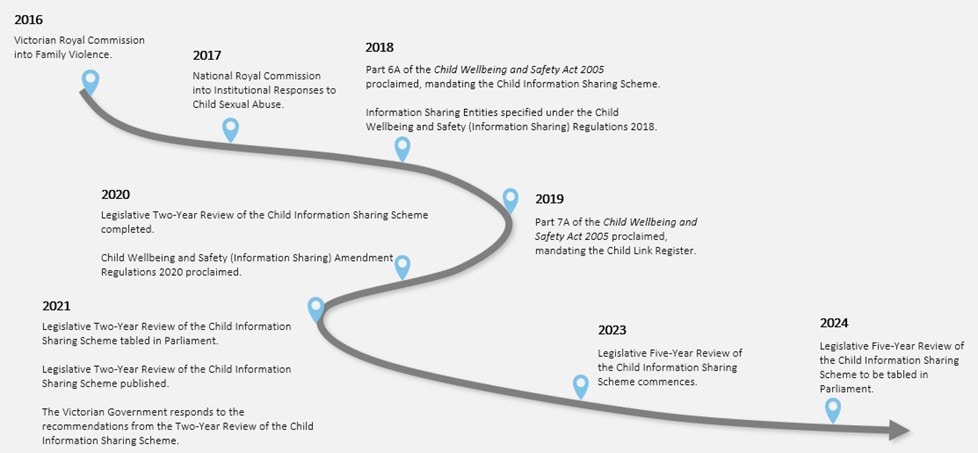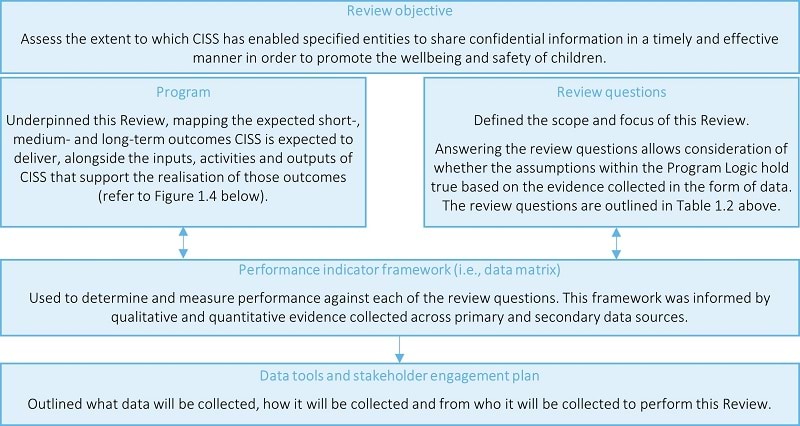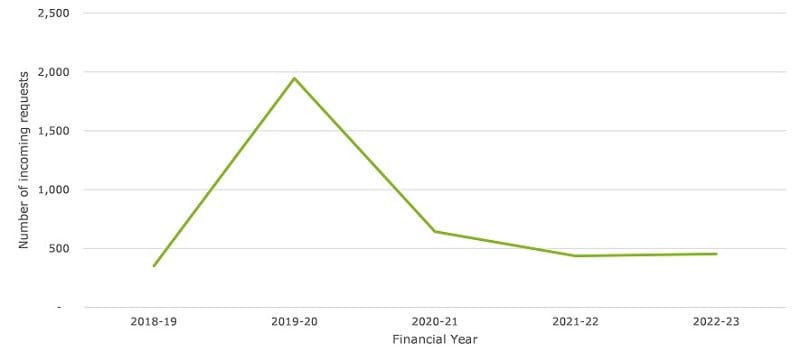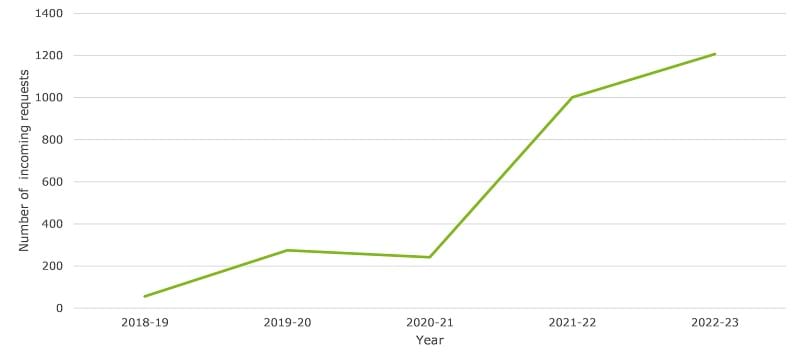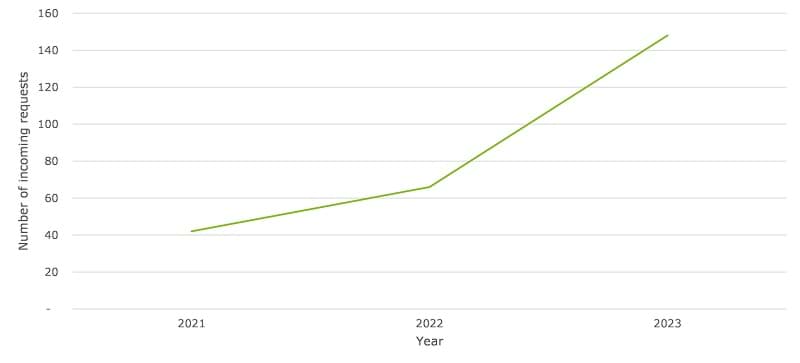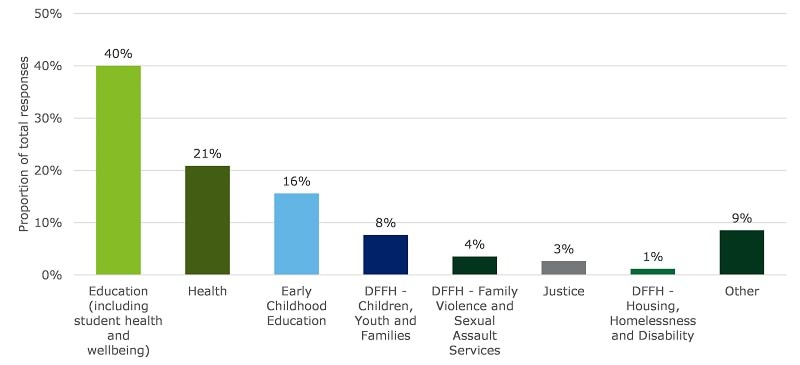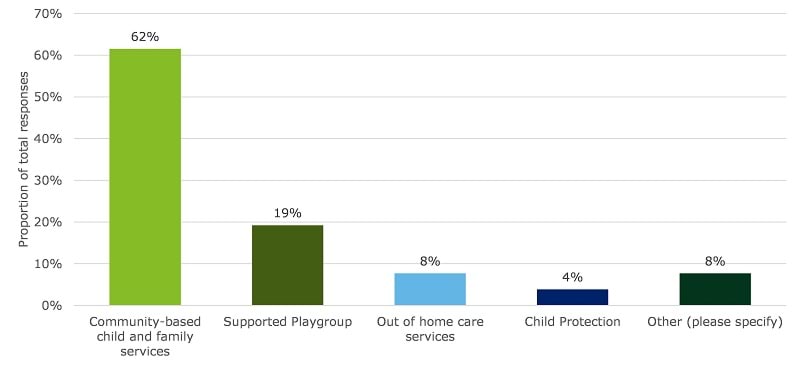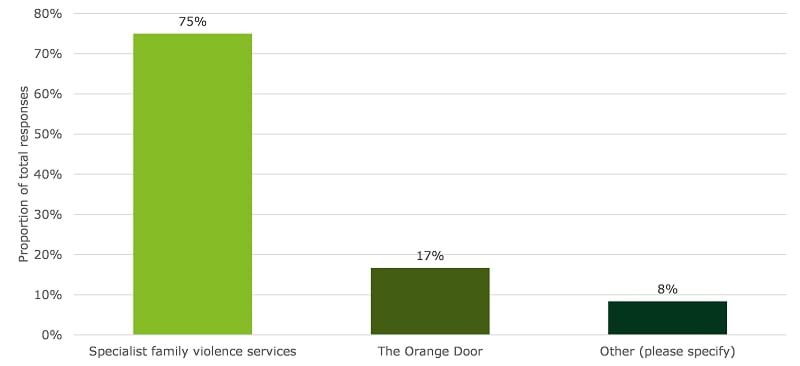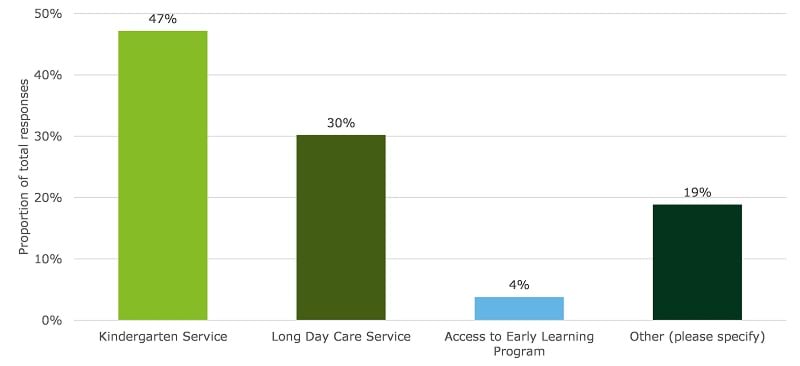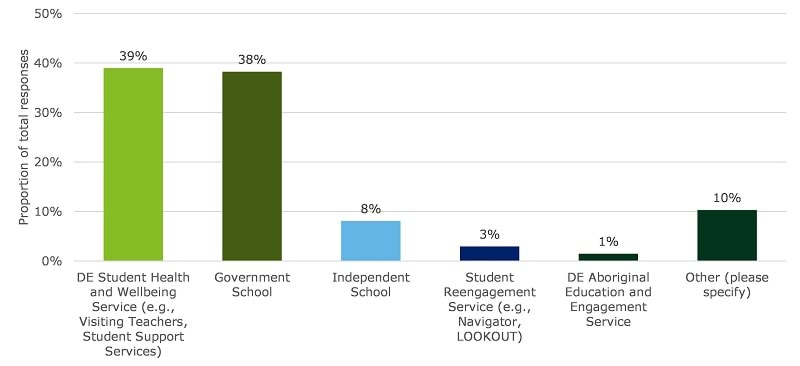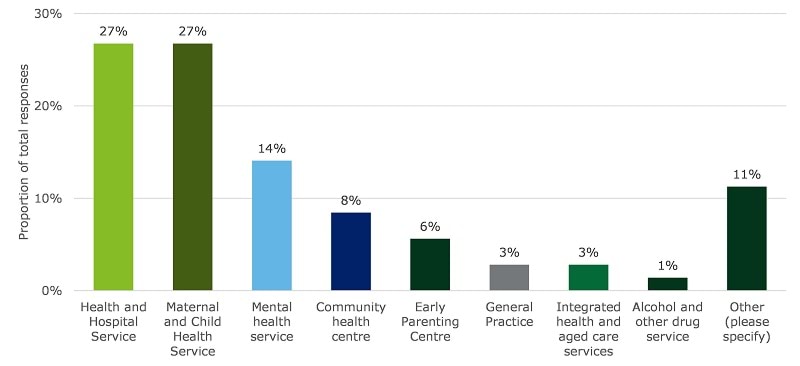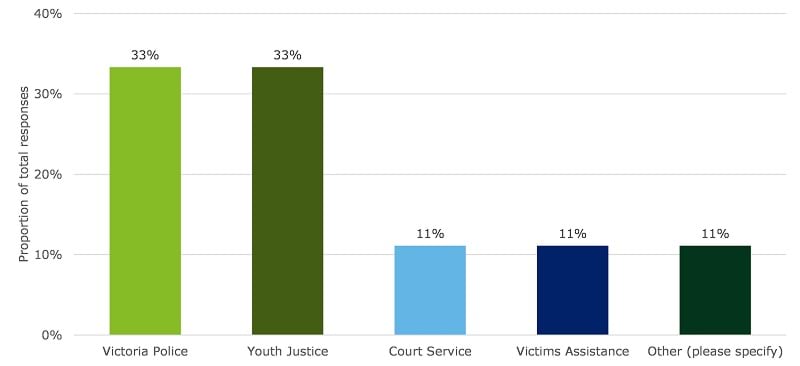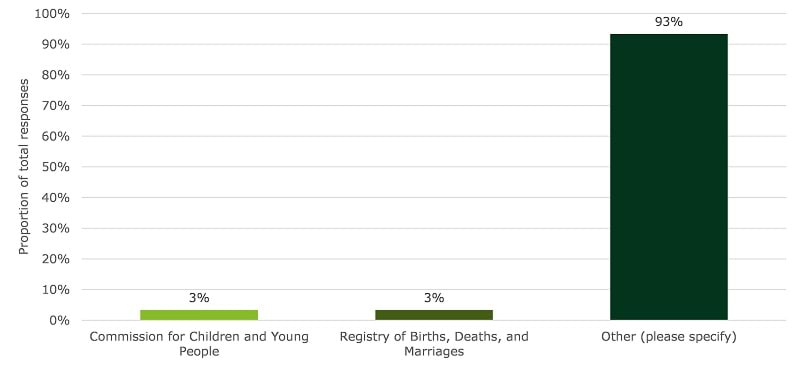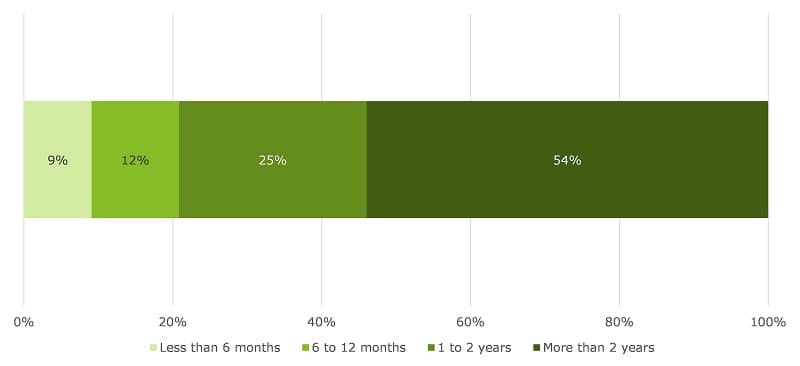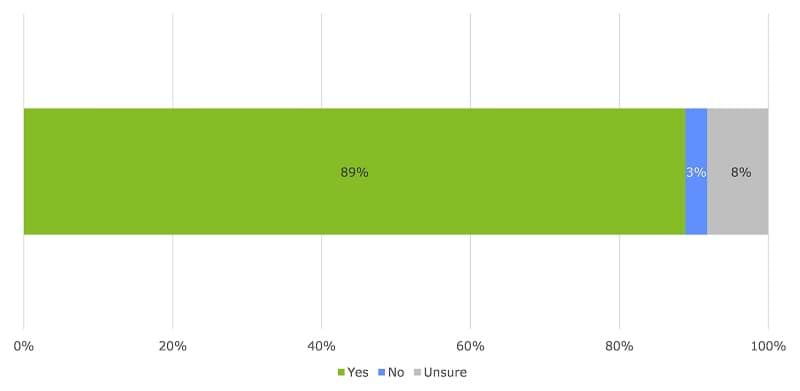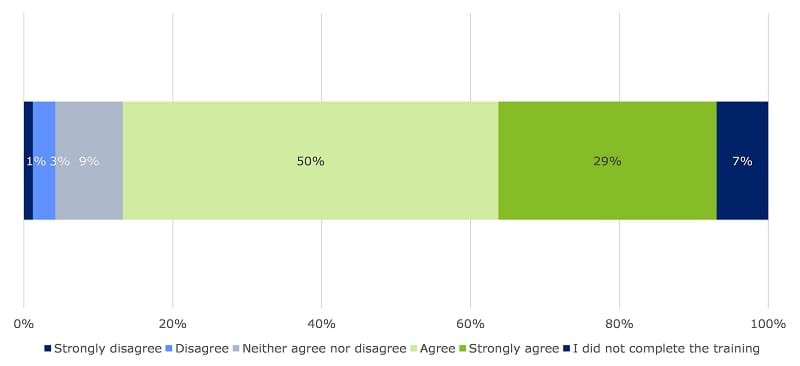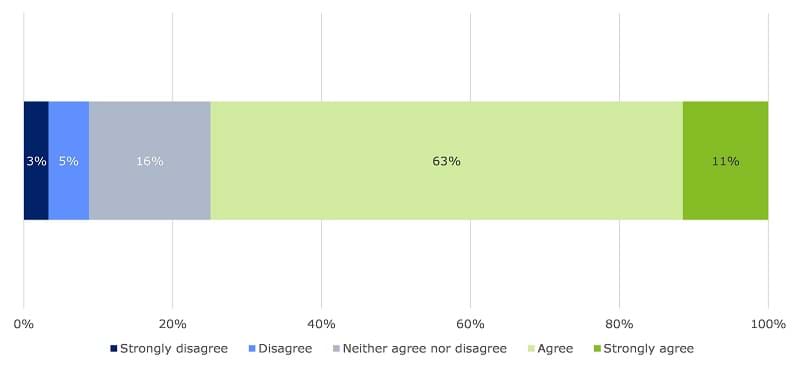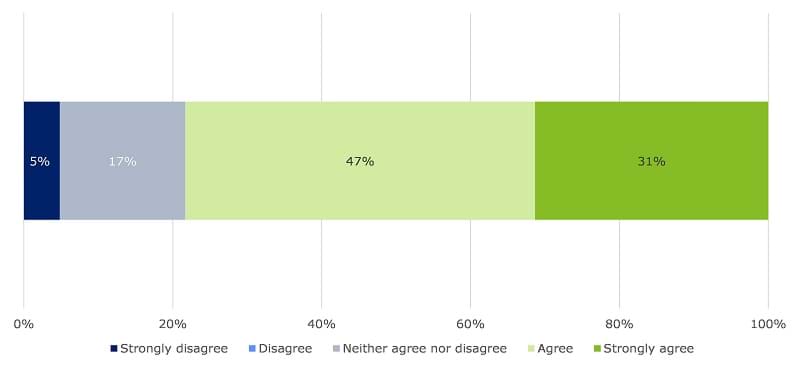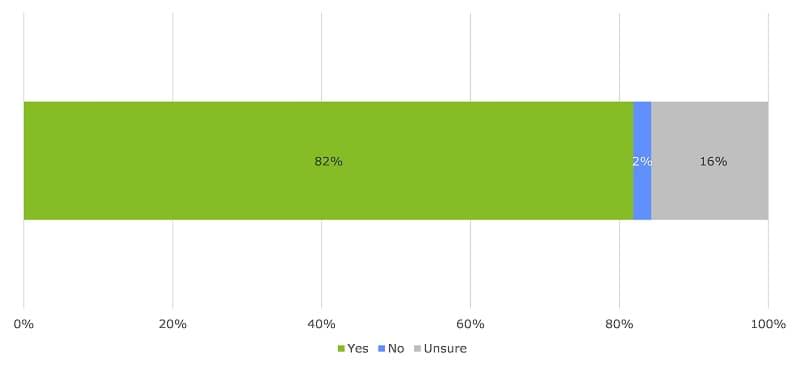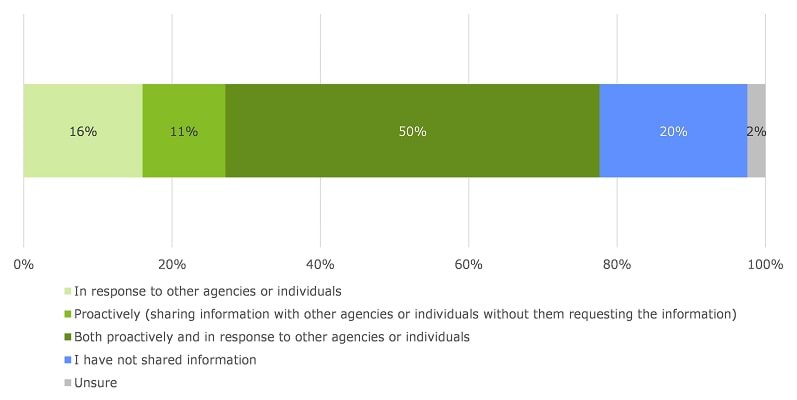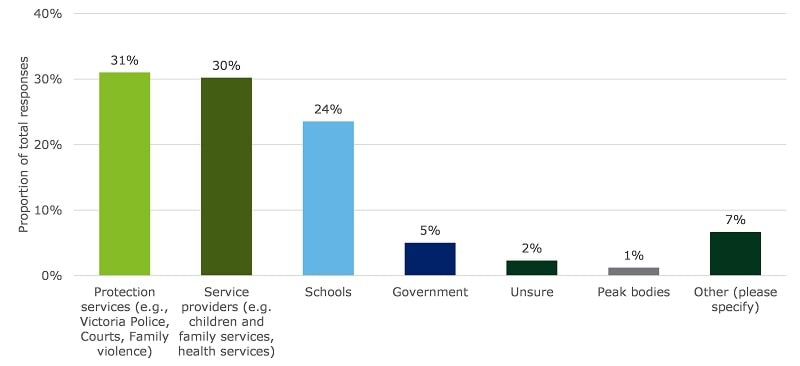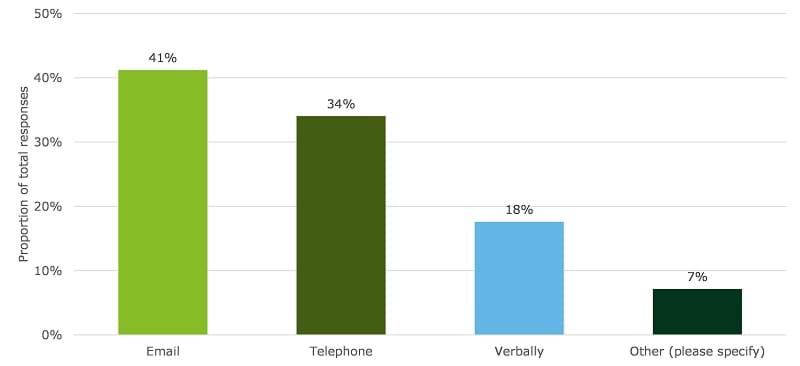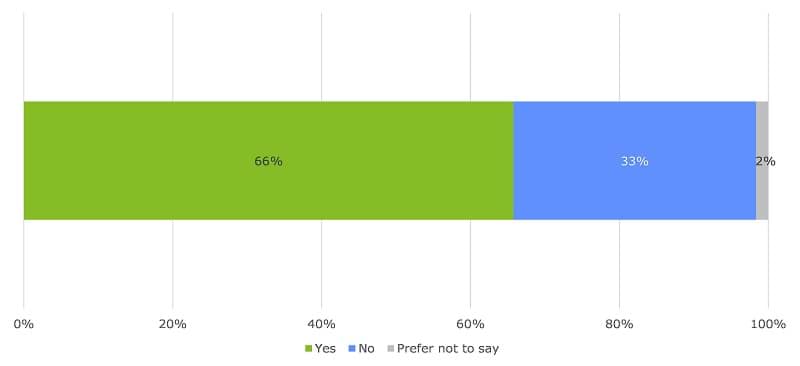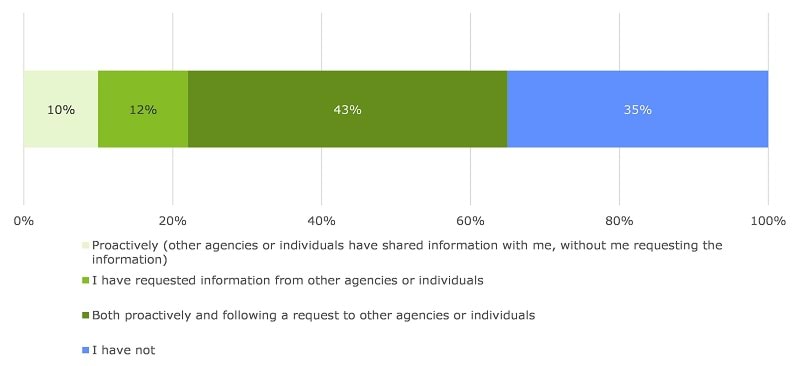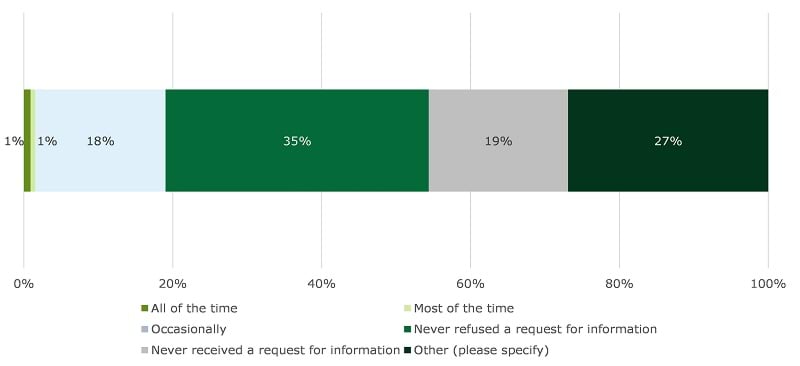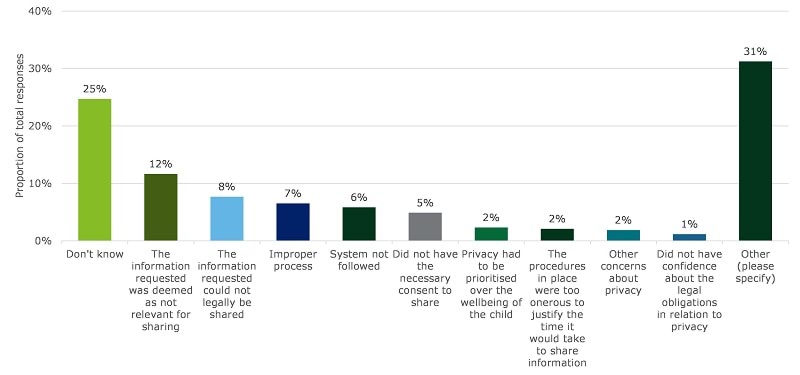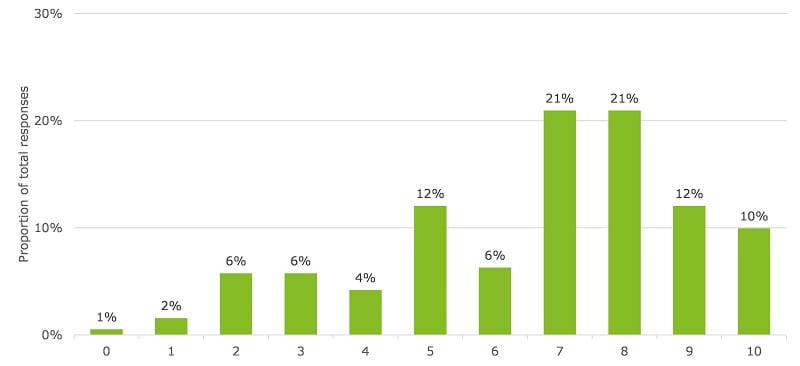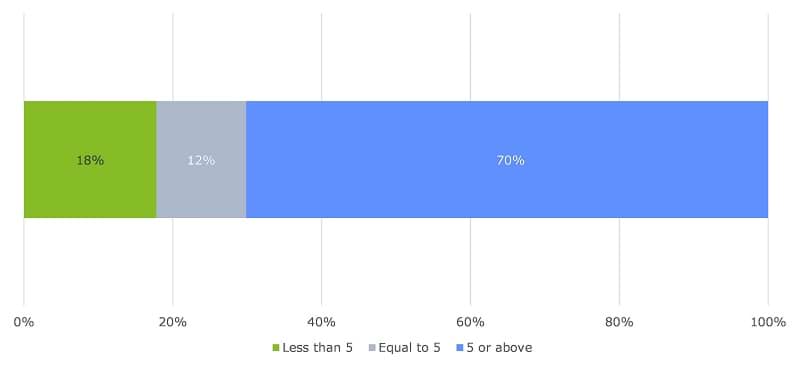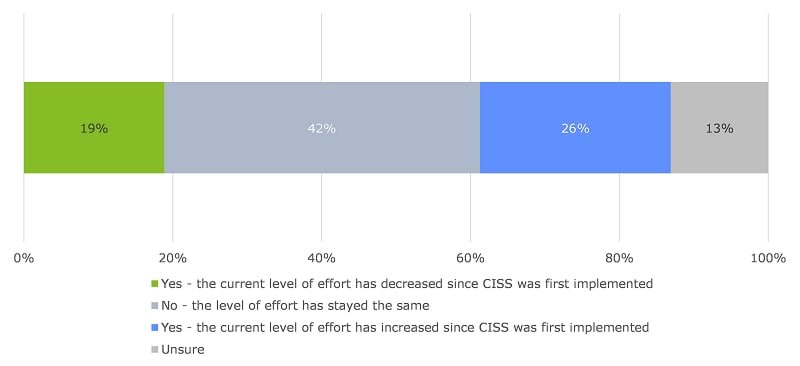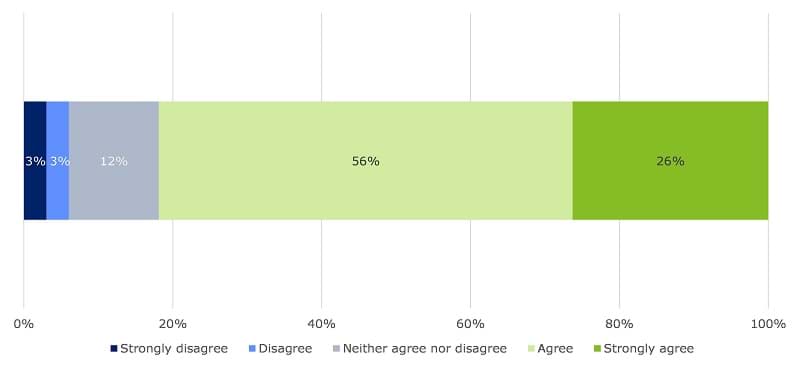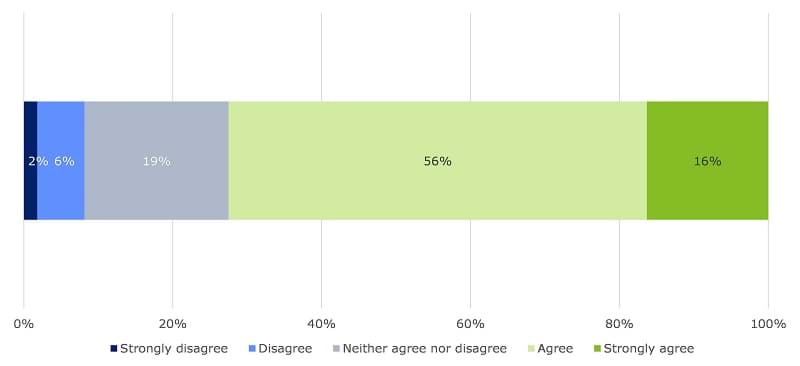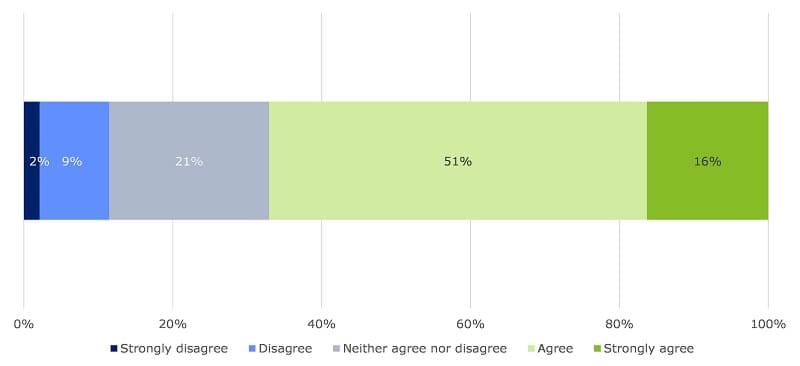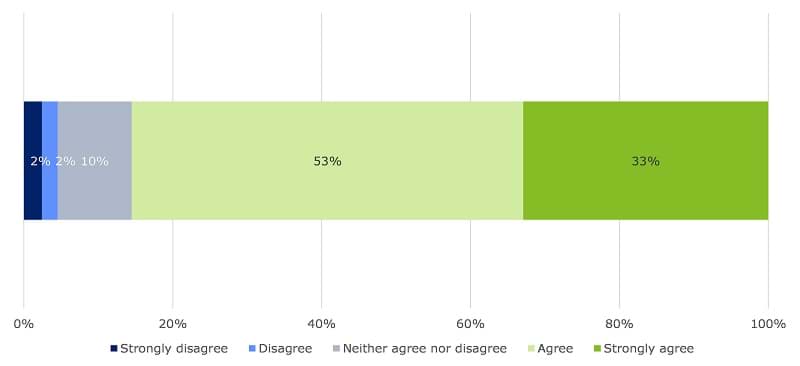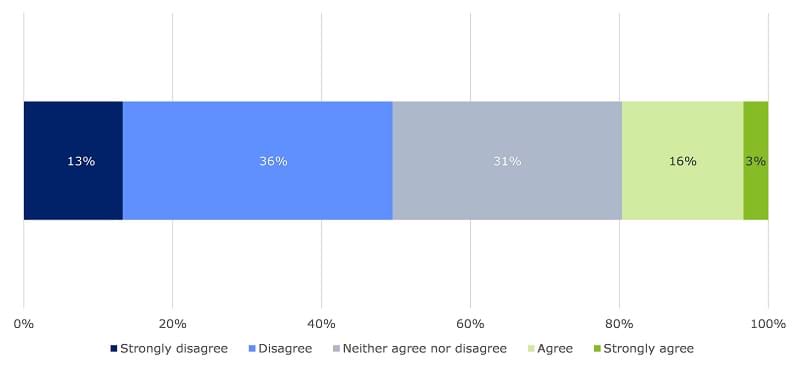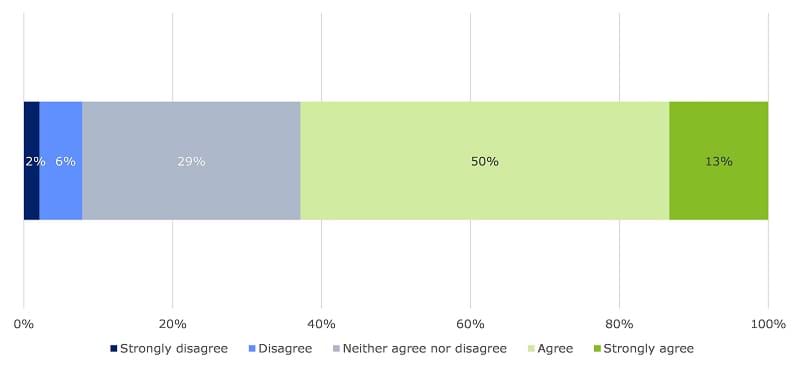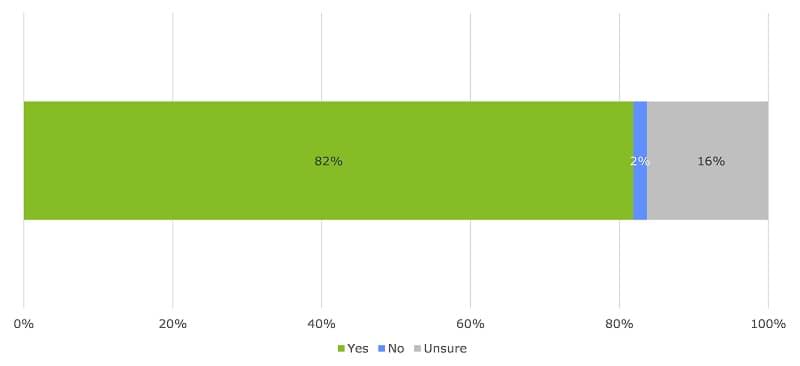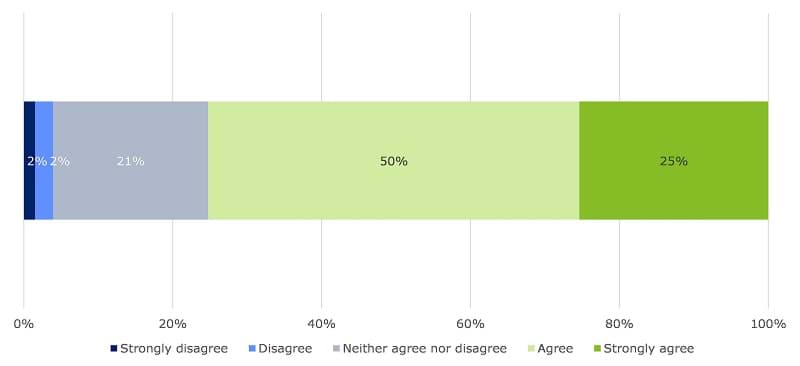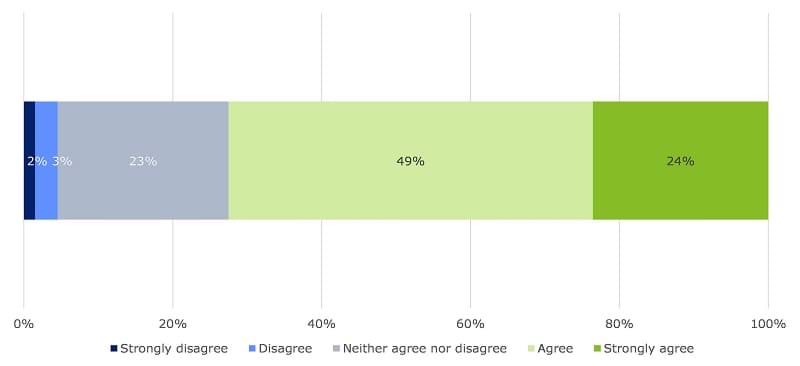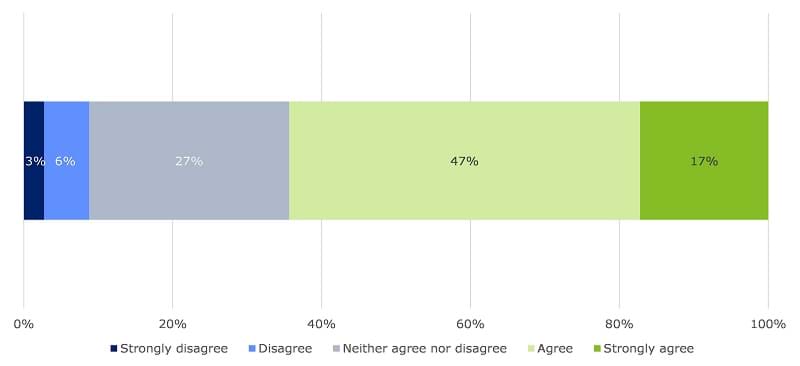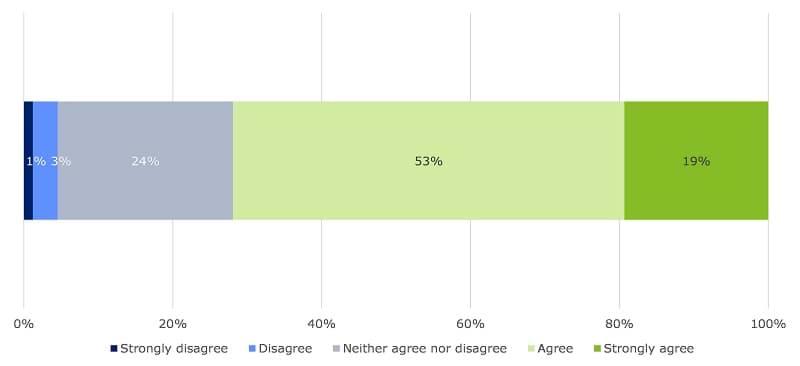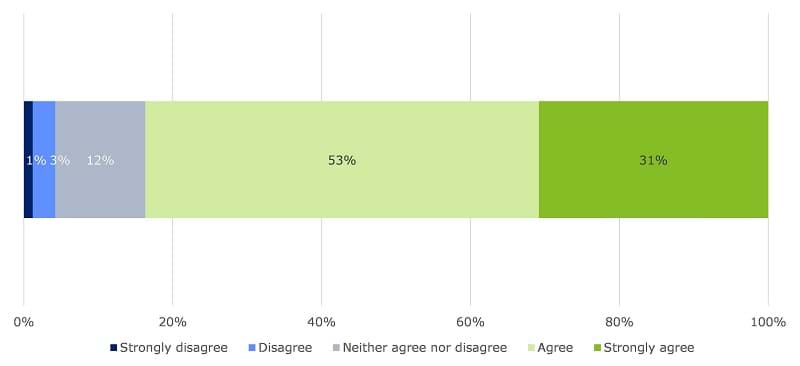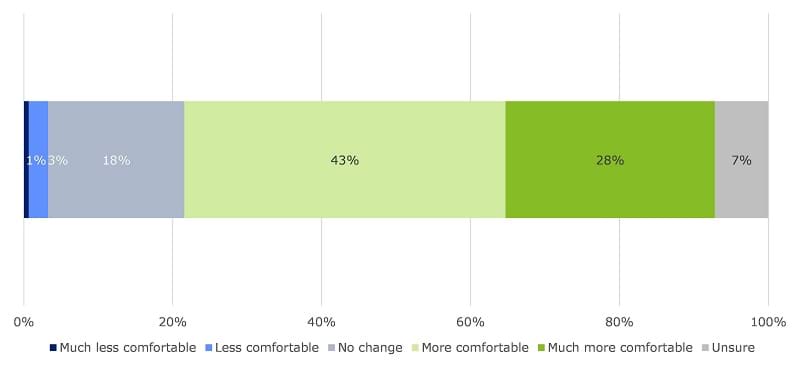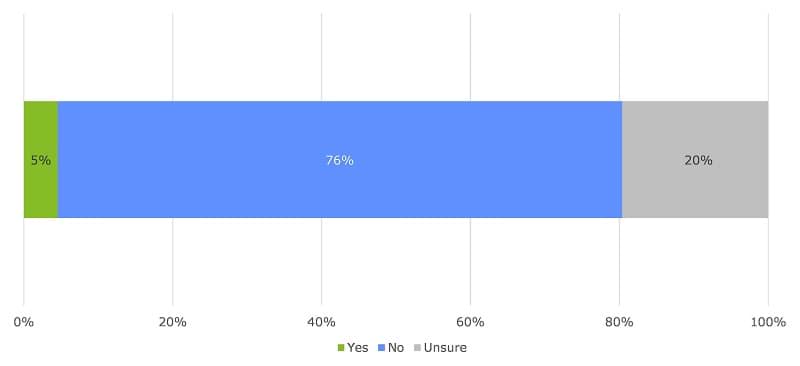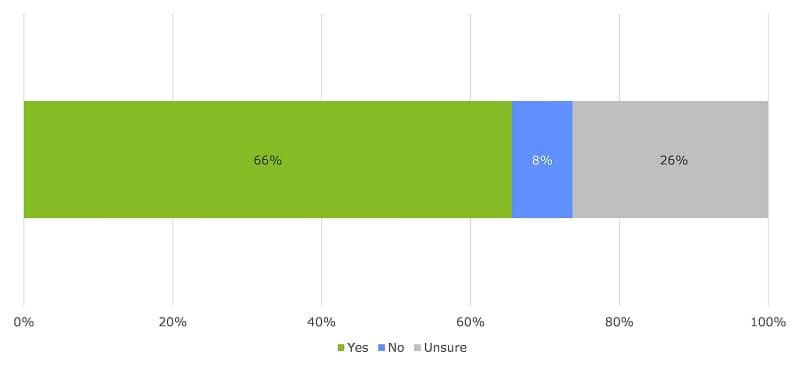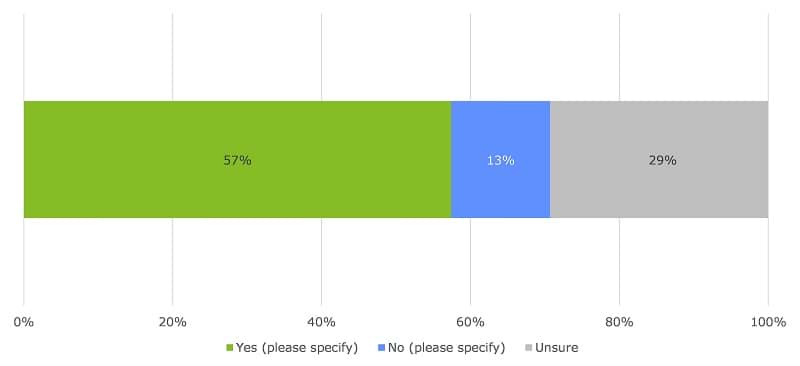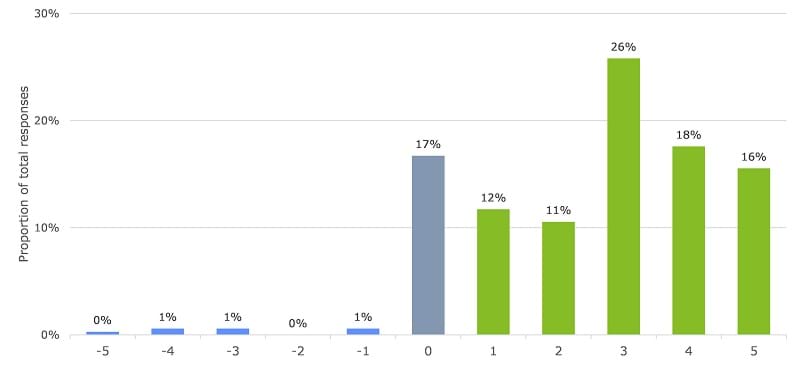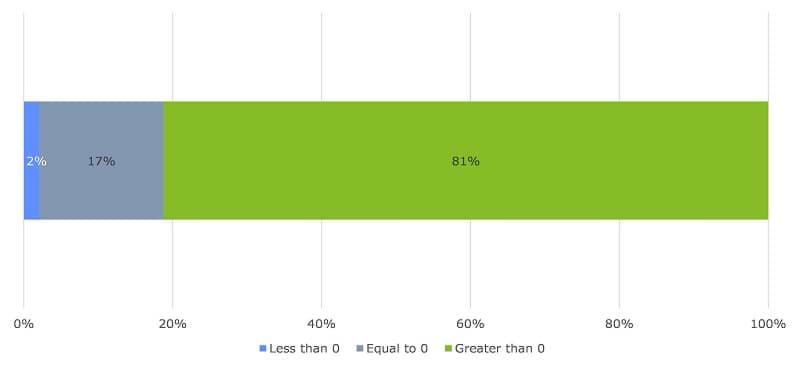- Published by:
- Department of Education
- Date:
- 28 Aug 2024
The Child Information Sharing Scheme (CISS) is subject to an independent review of its operation within 2 and 5 years of commencement under sections 41ZN and 41ZO of the Child Wellbeing and Safety Act 2005.
The 2-year review took place in 2020, covering the period from September 2018 to September 2020. For more information, see Child Information Sharing Scheme Reviews.
The 5-year review covers the period from September 2018 to September 2023. It considers two key review questions:
- to what extent has the operation of CISS achieved its intended reform outcomes to date?
- do the findings from the review support any considerations for changes to the legislative and/or regulatory settings of the reform?
Government response
The Victorian Government has provided a response to the recommendations of the 5-year review.
Key Insights
The Victorian Child Information Sharing (VCIS) Reform – including the Child Information Sharing Scheme (CISS) – is a broad and ambitious reform affecting the entire ecosystem of services that relate to children and families in Victoria. In policy, planning, implementation and practice it should be understood as extending beyond government and encompassing the whole community.
Implementation has been effective and collaborative
- CISS implementation is an example of a number of Victorian Government departments and agencies working collaboratively and effectively to introduce a significant reform.
- Implementation has generally been effective to this point in the scheduled rollout of Phase One (September 2018) and Phase Two (April 2021).
There are positive signs towards achieving medium-term outcomes relating to cultural change towards information sharing
- There is high awareness of CISS. Understanding of CISS is higher among Phase One Information Sharing Entities (ISEs) as would be expected.
- There has been significant progress in willingness to share information and in realising cultural change of attitudes towards information sharing. This is especially pronounced in Phase One workforces and in the education (Phase Two) sector.
Although awareness of CISS has grown, there is not a complete picture of ISE familiarity
- A large amount of training, support services and communication effort has occurred, reaching thousands of individuals and ISEs. However, there is no register of who has completed CISS training across ISEs and/or whether an ISE has an appropriately trained individual member(s) on staff at any given time.
There is an opportunity to improve understanding of Scheme activity
- Recording of information sharing is designed to only occur at an ISE level. Consequently, there is no comprehensive single source of truth regarding overall Scheme use by different ISEs and workforces, making it difficult to assess growth in information sharing over time.
More needs to be done to enable assessment of CISS’ impact
- The Department is progressively implementing an outcome measurement framework for CISS. While there is an opportunity to track CISS’ impact on child wellbeing and safety, the current data collection approach does not enable this to meaningfully occur.
- While this Review considered implementation and understanding of CISS among ISEs and government stakeholders, including feedback about CISS’ operation, there are information gaps regarding CISS’ overall effectiveness.
There are potential risks inherent in aspects of CISS currently
- Reporting of misuse of information is the responsibility of ISEs. While this Review did not uncover specific incidents of information being misused, it received qualitative reports of instances of ISEs inadvertently sharing an unnecessary amount of information. Some stakeholders were concerned about the level of understanding regarding what may and may not be shared in different circumstances.
- While the Department and partner agencies have sought to ensure safeguards within CISS for Aboriginal cultural safety through the legislative framework and guidelines, CISS’ decentralised oversight model incurs a risk that could lead to unintended consequences for some vulnerable groups if these guidelines are not followed.
- Some workforces that hold information relating to the wellbeing and safety of children were not included in Phase One or Phase Two, including disability services that are not delivered within registered community health services, and private mental health services or those that are not Commonwealth-funded. Adjacent jurisdictions are also not included. These exclusions can reduce the comprehensiveness of information available in certain circumstances.
Opportunities
This Review recommends that these aspects of CISS’ oversight and community engagement be refined:
- Scheme oversight can be improved through expanding the Outcome Measurement Framework to include ongoing monitoring of the Scheme’s utilisation. This will allow better understanding of Scheme outcomes, a clearer process for complaints and ensuring ISEs understand their obligations.
- Communities can be empowered to make decisions within the CISS guidelines by expanding the place-based approach to Scheme education and communication and recognising non-government organisations in advising on CISS. A specific program of work partnering with Aboriginal leaders, communities, organisations and stakeholders is needed, recognising Victoria’s commitment to self-determination and building confidence in the use of CISS. More work is required to understand the impact of CISS on diverse communities and Victorians experiencing vulnerability.
- A further phase of rollout would be strengthened through implementation of these improvements, along with continuation of the enquiry line and inclusion of other jurisdictions subject to required agreement(s) being reached.
Executive Summary
The Child Information Sharing Scheme
Multiple independent reviews and inquiries have been conducted into child wellbeing and safety in Victoria since 2011.1 A common theme to emerge from those reviews was that a lack of information sharing was a significant barrier to effective and timely support for families and children.2 Overall, there was found to be a risk-averse culture to information sharing created by the complexity of multiple legislative frameworks, including the Children Youth and Families Act 2005,3 Privacy and Data Protection Act 2014 and the Health Records Act 2001.4,5,6 The Child Information Sharing Scheme (CISS) was established in September 2018 under Part 6A of the Child Wellbeing and Safety Act 2005 (the Act) in response to these reviews. CISS was designed to enable prescribed Information Sharing Entities (ISEs) to share confidential information in a timely and effective manner to promote the wellbeing and safety of children.
CISS aims to facilitate the early identification, assessment and management of child wellbeing and safety through inter-service collaboration across a range of contexts, and operates alongside other information sharing schemes such as the Family Violence Information Sharing Scheme (FVISS)7 and digital tools such as the Child Link Register (Child Link). The Victorian Department of Education (the Department) leads the implementation of CISS, and the Department of Families, Fairness and Housing leads the implementation of FVISS, and implementation has been coordinated across these reforms and the Multi-Agency Risk Assessment Framework (MARAM). The coordination in reform delivery is in recognition of the significant overlap between the workforces and organisations prescribed under the schemes and that child wellbeing and safety concerns can be observed at multiple touchpoints across distributed service systems and in a variety of situations in which the schemes may be applied.8
There is a total of 8,269 prescribed ISEs under CISS, with approximately 700 entities prescribed in Phase One (September 2018, primarily Victorian Government agencies such as secondary and tertiary services overseen by the Department of Families, Fairness and Housing, the Department of Justice and Community Safety, and Victoria Police) and approximately 7,500 prescribed in Phase Two (April 2021, primarily universal services overseen by the Department of Education and the Department of Health).
This Review
Under Section 41ZN and 41ZO of the Act, CISS is subject to an independent review of its operation within two and five years of commencement. The Two-Year Review of CISS (the Two-Year Review) took place in 2020, covering the period from September 2018 to September 2020.
This Five-Year Review (this Review) covers the period from September 2018 to September 2023. This Review considers two key review questions:
- to what extent has the operation of CISS achieved its intended reform outcomes to date?
- do the findings from the review support any considerations for changes to the legislative and/or regulatory settings of the reform?
To support responding to these two key questions, nine sub-review questions were developed (see Sub-review questions of the Five-Year Review below), organised into the three domains of implementation, effectiveness and legislative and regulatory settings. The evidence and findings in this report are structured in response to these review questions, as well as to the outcomes in the VCIS Reform Program Logic Model (the Program Logic), detailed at Appendix A.
A mixed-methods approach was adopted to obtain the relevant data and information to respond to the review questions. The detailed methodology is included at Appendix B.
As detailed at Appendix C, the CISS Workforce Survey was distributed to and completed largely by public sector staff and agencies involved in CISS activity. The consultations were held across government and non-government stakeholders, including representation from small ISEs.
Sub-review questions of the Five-Year Review
Review Domain 1: Implementation
- Is CISS being implemented within its scope as defined by Part 6A of the Child Wellbeing and Safety Act 2005?
- What have been the key enablers and barriers to implementation?
Review Domain 2: Effectiveness
- To what extent has CISS achieved its intended outcomes to date? How close is CISS to achieving its medium-term (5-year) outcomes and are there early indicators of CISS achieving its long-term (10- year) outcomes?
- Is there any evidence of negative impact of CISS on diverse communities and communities experiencing disadvantage?
- Are there any unintended consequences of implementation – both positive and negative?
Review Domain 3: Legislative and regulatory impact and settings
- Are there any unintended consequences of interpretation – both positive and negative?
- Do the findings of this review support any considerations for changes to the legislative settings of CISS?
- What are the impacts of the current Child Wellbeing and Safety (Information Sharing) Regulations 2018 and what are the issues related to the Regulations (if any)?
- What could be done to address the issues, if any, related to the Regulations? When answering this, consider both Regulatory amendment and non-Regulatory options.
Key findings
Recommendations
This Review makes the following recommendations grouped into three categories: CISS oversight, community empowerment, and growth opportunities. It should be noted that the recommendations would require resourcing during the implementation phase and some may impose an ongoing regulatory burden or cost on some stakeholders relative to the current arrangements. However, where this is the case, it is because the review has formed a view regarding the adequacy of certain aspects of CISS’ design and operation. It would consequently be advisable for the anticipated benefits and costs of the recommendations to be assessed prior to their implementation, particularly where the change suggested is relatively significant. Equally the inherent difficulty in foreseeing and measuring all costs and benefits relating to information sharing is acknowledged. This uncertainty should not be cited as a barrier to reasonable and proportionate strengthening of CISS, which is the overall intent of these recommendations.
CISS oversight
Summary: Recommendations regarding CISS oversight are built around the identified need to create greater understanding and visibility of CISS’ usage at a departmental level and embed greater accountability and awareness of obligations at the ISE level. These recommendations taken together seek to strengthen the degree to which CISS is able to deliver on its intent and minimise the risks of misuse.
Recommendation 1
Establish a mechanism to capture data that enables an accurate picture of the use of CISS to be developed over time.
Recommendation 2
Prioritise the continued improvement and full rollout of the Outcome Measurement Framework including an accompanying data collection and analysis approach that will improve understanding of the impact of CISS on child wellbeing and safety, which will in turn guide CISS improvement.
Recommendation 3
Ensure every ISE has appropriate representative(s) who have undertaken up-to-date CISS training.
Recommendation 4
ISEs maintain a CISS training register to ensure information about trained individuals is available to the Department upon request.
Recommendation 5
Strengthen support available to ISEs through implementation activities such as training (mandatory/refresher), support services and communication to ensure all ISEs understand their obligations to report potential breaches of the Act and/or misuse of information.
Recommendation 6
Clarify the CISS complaints process for ISEs wishing to raise concerns or make complaints about non-privacy related matters.
Community empowerment
Summary: Recommendations regarding community empowerment are built around the identified need to embed CISS practices more deeply across all sectors, workforces and communities prescribed under CISS. These recommendations are designed to support a greater understanding at the departmental level of the diverse ecosystems within which decisions around the CISS must be made by ISEs, and to provide pathways for the co-creation of targeted programs of work and materials that will instil confidence and agency across communities in their use of CISS.
Recommendation 7
Adopt a place-based approach to change management and supporting ISEs with meeting their CISS obligations and opportunities for information sharing, including providing support to ACCOs and services directly from the Department of Education and partner agencies.
Recommendation 8
To ensure that CISS is embedded to benefit Aboriginal children and their families, the Department should collaborate with Victorian Aboriginal communities to inform how the principles of Indigenous Data Sovereignty and Data Governance can be embedded and understood through CISS, enabling ACCOs and communities to make self-determining decisions about their data.
Recommendation 9
Develop a program of work (as a monitoring activity within the Outcome Measurement Framework) to better understand the impact of CISS on diverse communities and communities experiencing disadvantage including how any positive impacts of information sharing can be enhanced with any unintended consequences identified.
Recommendation 10
Improve ISE confidence and capability in engaging with children and their parents or carers about the benefits of information being shared to promote the wellbeing and safety of children.
Recommendation 11
Include non-government organisations in the CISS governance model, recognising that CISS is designed to extend well beyond Victorian Government entities in its scope.
Growth opportunities
Summary: Recommendations regarding growth opportunities are built around the identified need to facilitate the sharing of information between professionals to promote child wellbeing and safety wherever and with whomever that information is held, beyond the current scope of prescribed ISEs. These recommendations respond to gaps in the current Regulations as they relate to the exclusion of workforces and organisations, recognises the intersection and interaction of different legislative and regulatory systems in the State, as well as jurisdictional challenges that will require collaboration with governments outside of the state of Victoria. While expansion of CISS may be appropriate, the precise scope of any proposed expansion needs to be determined and expansion should only proceed with agreement of the CISS partner agencies.
Recommendation 12
Work with other governments (particularly New South Wales, South Australia and the Commonwealth) to enhance information sharing, particularly to promote child wellbeing and safety in border communities.
Recommendation 13
Determine the appropriate scope of further CISS expansion to remaining sectors that have high involvement with children and families.
Recommendation 14
Consider implementing the improvement opportunities identified by the above recommendations, to further strengthen CISS and support any expansion of ISEs.
Notes
1 These reviews and inquiries were identified by the Child Information Sharing Scheme Ministerial Guidelines – Guidance for information sharing entities to include: Commission for Children and Young People 2014–15 Annual Report; Commission for Children and Young People 2015–16 Annual Report; Commission for Children and Young People 2016–17 Annual Report; Commission for Children and Young People 2016, Neither seen nor heard: Inquiry into issues of family violence in child deaths; Coroner Court of Victoria, 2015, Inquest into the Death of Baby D; Cummins, et al 2012, Report on the Protecting Victoria’s Vulnerable Children Inquiry; Department of Health and Human Services 2016; Royal Commission into Family Violence, 2016, Report and recommendations; Victorian Auditor-General’s Office, 2011, Early Childhood Development Services: Access and Quality; Victorian Auditor-General’s Office, 2015, Early Intervention Services for Vulnerable Children and Families; Royal Commission into Institutional Responses to Child Sexual Abuse, 2017.
2 Regulatory Impact Statement: Child Wellbeing and Safety (Information Sharing) Regulations 2018.
3 Victorian Government, Children, Youth and Families Act (2005)
4 Victorian Government, Privacy and Data Protection Act (2014)
5 Victorian Government, Health Records Act (2001)
6 Ibid.
7 The FVISS supports the sharing of information to assess the risk of family members from family violence (including adult and children victim survivors).
8 Regulatory Impact Statement: Child Wellbeing and Safety (Information Sharing) Regulations 2018.
9 The total size of the CISS workforces is estimated to be approximately 265,000 professionals.
The Child Information Sharing Scheme
1.1 Background
Multiple independent reviews and inquiries were conducted into child wellbeing and safety in Victoria since 2011. These include:10
- Protecting Victoria’s Vulnerable Children Inquiry, 2012
- Victorian Auditor-General’s Office reports into vulnerable children and families
- Early Childhood Development Services: Access and Quality, 2011
- Early Intervention Services for Vulnerable Children and Families, 2015
- Coroners Court of Victoria, Inquest into the Death of Baby D, 2015
- Commission for Children and Young People Child Death Inquiries, 2014-17
- Commission for Children and Young People Inquiry into issues of family violence in child deaths, 2016
- Royal Commission into Family Violence, 2016
- Royal Commission into Institutional Responses to Child Sexual Abuse, 2017.
These independent reviews and inquiries highlighted a lack of sharing of critical confidential information between state-funded service provider entities. This lack of information sharing was identified as a significant barrier to effective and timely support for children and families experiencing vulnerability, with service providers unable to coordinate and collaborate effectively. In Victoria, the Royal Commission into Family Violence (2016) identified significant barriers to effective information sharing among entities involved in family violence cases, including concerns about privacy, confidentiality, legal constraints and a lack of coordination among various agencies and service providers. The fragmented and uncoordinated approach to sharing of information was noted to particularly hinder comprehensive risk assessment cases involving children, making it difficult to identify and manage risks effectively and in a timely manner. The Royal Commission into Family Violence (2016) emphasised the need for clear and consistent information sharing protocols and procedures and recommended the creation of a central information point.
At a national level, the Royal Commission into Institutional Responses to Child Sexual Abuse (2017) emphasised the need for improved information sharing and recommended the establishment of a national information exchange scheme, with nationally consistent legislative and administrative information sharing arrangements in each Australian jurisdiction. It also stressed the importance of education, training and guidelines to promote the understanding of, and confidence in, information sharing arrangements among key entities. Based on its findings, the Royal Commission into Institutional Responses to Child Sexual Abuse (2017) made recommendations to address these barriers to information sharing. These are summarised in Figure 1.1.
Figure 1.1: Recommendations from the Royal Commission into Institutional Responses to Child Sexual Abuse (2017) that relate to information sharing schemes
Recommendation 8.6
The Australian Government and state and territory governments should make nationally consistent legislative and administrative arrangements, in each jurisdiction, for a specified range of bodies (prescribed bodies) to share information related to the safety and wellbeing of children, including information relevant to child sexual abuse in institutional contexts (relevant information). These arrangements should be made to establish an information exchange scheme to operate in and across Australian jurisdictions.
Recommendation 8.7
In establishing the information exchange scheme, the Australian Government and state and territory governments should develop a minimum of nationally consistent provisions to:
- enable direct exchange of relevant information between a range of prescribed bodies, including service providers, government and non-government agencies, law enforcement agencies, and regulatory and oversight bodies, which have responsibilities related to children’s safety and wellbeing
- permit prescribed bodies to provide relevant information to other prescribed bodies without a request, for purposes related to preventing, identifying and responding to child sexual abuse in institutional contexts
- require prescribed bodies to share relevant information on request from other prescribed bodies, for purposes related to preventing, identifying and responding to child sexual abuse in institutional contexts, subject to limited exceptions
- explicitly prioritise children’s safety and wellbeing and override laws that might otherwise prohibit or restrict disclosure of information to prevent, identify and respond to child sexual abuse in institutional contexts
- provide safeguards and other measures for oversight and accountability to prevent unauthorised sharing and improper use of information obtained under the information exchange scheme
- require prescribed bodies to provide adversely affected persons with an opportunity to respond to untested or unsubstantiated allegations, where such information is received under the information exchange scheme, prior to taking adverse action against such persons, except where to do so could place another person at risk of harm.
Recommendation 8.8
The Australian Government, state and territory governments and prescribed bodies should work together to ensure that the implementation of our recommended information exchange scheme is supported with education, training and guidelines. Education, training and guidelines should promote understanding of, and confidence in, appropriate information sharing to better prevent, identify and respond to child sexual abuse in institutional contexts, including by addressing:
- impediments to information sharing due to limited understanding of applicable laws
- unauthorised sharing and improper use of information.
Source: Royal Commission into Institutional Responses to Child Sexual Abuse (2017).
These reviews consistently highlighted the detrimental impact of inadequate information sharing on the wellbeing and safety of children, and identified the need for simplified information sharing arrangements which promote a shared responsibility among service entities to improve outcomes for children. Recurring overarching themes highlighted by these reviews included:
- Victoria’s legislative framework was complex and had contributed to the creation of a risk-averse culture which hindered the effective sharing of information
- entities were unable to form a holistic understanding of a child’s circumstances and participation in services, which risked delays in timely intervention.
Subsequent to the establishment of CISS, the Commissioner for Children and Young People conducted the ‘Lost, not forgotten’ (2019) inquiry into children and young people who died by suicide and were known to Child Protection between 1 April 2007 and 1 April 2019. The inquiry report found that there was inadequate information sharing and collaborative practices among services in these cases.
1.1.2 Victorian Child Information Sharing Reform
In response to the findings and recommendations of these reviews, the Department led a program of policy work and undertook extensive consultation with relevant stakeholders, including (but not limited to) those from the following sectors: health, community services, family violence, ACCOs and unions.
The policy work undertaken by the Department led to the establishment of the Children Legislation Amendment (Information Sharing) Act 2018, which inserted Parts 6A and 7A into the Act, which established CISS and enabled the establishment of Child Link, collectively referred to as the VCIS Reform.
The Victorian Child Information Sharing and Early Childhood Systems Division (VCISECS) is the team within the Department that is responsible for implementing the VCIS Reform.
The purpose of the VCIS Reform, as noted in the Second Reading Speech, was to:
“…propose a new approach to child information sharing… that will boost [Victoria’s] capacity for early intervention and prevention. [The VCIS Reform] will elevate Victoria's already strong commitment to promoting child and family centred service collaboration and shared responsibility for the wellbeing and safety of our children to new levels.” 11
The objective of the VCIS Reform is to promote better child wellbeing and safety outcomes by enabling specified government agencies and service providers to share information that will:
- improve early risk identification and intervention
- change a risk averse culture in relation to information sharing
- increase collaboration and integration between child and family services
- support children’s participation in services.
Given the significance and complexity of CISS, provisions were inserted into the Act mandating a two- and a five-year independent review to assess the operation and any adverse impacts of CISS.
1.1.3 VCIS Reform timeline
Figure 1.2 provides an overview of the key milestones in the establishment and implementation of the VCIS Reform which are discussed throughout this report.
1.2 Policy context
1.2.1 Information sharing legislation existing prior to the Child Information Sharing Scheme
Prior to the establishment of CISS, Victoria’s legislative framework for information sharing in relation to children experiencing vulnerability was complex, with several overlapping Acts such as the Children Youth and Families Act 2005,12 Privacy and Data Protection Act 2014 and the Health Records Act 2001.13, 14 This legislation has supported the development of safe practices around information sharing for entities to best support families and protect children.
However, Commonwealth privacy laws and various confidentiality provisions under subject-specific pieces of Victorian legislation created confusion for entities about when and what information may lawfully be shared. Due to the complexity of the legislative environment, entities were required to understand and apply different legal standards to determine whether information could be shared in a particular circumstance and lacked confidence in their ability to do so. Historically, this had led to entities developing a risk-averse culture where information was not commonly shared, even when legally permitted and appropriate. Where critical information relevant to a child’s wellbeing and safety is not shared in a timely manner, opportunities for early intervention or prevention are often missed. These missed opportunities to prevent issues escalating to a crisis point, can lead to severe adverse outcomes for children, and an over-reliance on costlier child protection services.
Furthermore, there was no legislative provision which specifically authorised information sharing to promote child wellbeing and safety, with the legislative framework being narrowly focused on care and protection.
While the pre-existing legislation remains current, CISS was established to overcome these barriers by clarifying and expanding the circumstances in which entities can share information relating to the wellbeing or safety of children.
1.2.2 Roadmap for Reform
Building on the recommendations of the Royal Commission into Family Violence, the Victorian Government released the Roadmap for Reform: Strong Families, Safe Children (the Roadmap) in 2016.15 The Roadmap stepped out immediate actions to focus on early intervention and prevention, and enhance the child protection system, to better support the wellbeing and safety of children and families.
Information sharing was identified in the Roadmap as a key enabler for achieving reform objectives, encouraging collaboration and coordination and supporting a multi-agency approach to the identification of risk factors.
The actions in the Roadmap complement other Victorian reforms aimed at improving accessibility of universal services, such as the Education State reforms, targeted at developing a quality education system that is available to all students (including, for example, the Education State Early Childhood Reform Plan)16, and Victoria’s 10-Year Mental Health Plan.17
1.2.3 Family Violence Information Sharing Scheme and Multi-Agency Risk Assessment and Management
CISS operates alongside FVISS, which was incorporated into the Family Violence Protection Act 2008 in 2018. Both schemes facilitate information sharing among prescribed entities, with FVISS allowing the sharing of information to assess and manage family violence risks to both children and adults. The MARAM Framework sets out the responsibilities of different workforces in identifying, assessing and managing family violence risk across the service system, seeking to guide information sharing schemes wherever family violence is present.
As the information shared under FVISS may also be relevant to child protection and wellbeing, the application of both FVISS and CISS overlap in some circumstances for certain children and families.
1.2.4 Funding
The VCIS Reform has received funding allocations in Victorian State Budgets since its establishment, including:
- $42.9 million over four years in implementation funding in the 2018-19 Budget
- $97 million over four years in training and skills development across CISS, FVISS and MARAM in the 2021-22 Budget.
1.3 Child Information Sharing legislative framework
1.3.1 Child Wellbeing and Safety Act 2005
1.3.1.1 Child Information Sharing Scheme
Part 6A of the Act authorises prescribed organisations and services, defined as ISEs, to both request and disclose confidential information (either voluntarily or in response to a request) to another ISE for the purpose of promoting the wellbeing or safety of children.
In recognition that the disclosure of confidential information will not be appropriate in all circumstances, the Act excludes information from CISS under a number of prescribed circumstances, such as if the disclosure of the information could endanger a person’s life, result in physical injury or prejudice an investigation, a coronial inquest or inquiry, or a criminal or civil trial.
A number of principles intended to guide the collection, use or disclosure of information are set out in the Act. These principles include that ISEs should:
- prioritise the wellbeing and safety of children over privacy concerns
- only share information to the extent necessary to promote the wellbeing or safety of children
- encourage collaborative and respectful work between ISEs
- involve children and their families where appropriate and safe
- emphasise positive family relationships and cultural identities
- plan for the safety of all family members at risk from family violence
- promote cultural safety and recognise cultural rights and connections of Aboriginal or Torres Strait Islander children
- seek to maintain constructive and respectful engagement with children and their families.
1.3.1.2 Child Information Sharing Scheme Ministerial Guidelines
To support appropriate information sharing practices, Section 41ZA of the Act requires the Minister to issue guidelines which detail how ISEs should responsibly handle confidential information under CISS, as well as set out how the legislative principles outlined in the Act (see Section 1.3.1.1) are to be applied by ISEs.
The Ministerial Guidelines provide detailed guidance about the circumstances in which information can be shared between ISEs,18 including a three-part threshold that must be met in order to share confidential information under CISS:
- the purpose of sharing the confidential information is to promote the wellbeing or safety of children
- the disclosing ISE reasonably believes that sharing the information will assist the receiving ISE in conducting activities such as making decisions, assessments or plan related to children, initiating or conducting investigations, providing services or managing risks for children
- the information being shared is not known to be excluded information under Part 6A of the Act and is not restricted from sharing by any other law.
If the threshold is considered to be met, ISEs do not require consent from any person to share relevant information with other prescribed ISEs. Wherever reasonable and safe to do so, ISEs should, however, take into account the views of the children and relevant family members associated with the information, to inform their assessment.
The Ministerial Guidelines note that it is expected that prescribed ISEs will have policies and procedures in place that guide the use of CISS, consistent with the Act. Within these policies and procedures, ISEs should identify the roles within their organisation or service that are authorised to use CISS on behalf of the ISE.
1.3.1.3 Child Link Register (Child Link)
Part 7A of the Act legislated for the establishment of Child Link, a digital register designed to draw together information from existing government systems to create profiles for Victorian children. The purpose of Child Link, under the Act, is to improve wellbeing and safety outcomes for Victorian children through monitoring and supporting participation in government-funded programs and services. Child Link contains a profile for every Victorian child. While Child Link is not the focus of this review, it is a key enabler of CISS.
Child Link profiles include essential factual details about the child’s identity and their participation in early childhood and education services. Specifically, information entered on Child Link is limited by Part 46D of the Act to include only:
- basic personal details of a child, including the child’s full name, date of birth, place of birth and sex
- key family relationships, including the full names of persons with any parental or carer responsibility, as well as any siblings
- whether the child is Aboriginal and/or Torres Strait Islander
- whether a child protection order has been made under the Children, Youth and Families Act 2005
- limited details of government-funded services (excluding the National Disability Insurance Scheme) in which a child is enrolled or participates, including details of their participation.
1.3.2 Child Wellbeing and Safety (Information Sharing) Regulations 2018
Operation of CISS is supported by the Regulations. The objectives of the Regulations are to prescribe:
- organisations and services as ISEs authorised and obliged to share information for the purposes of promoting child wellbeing and safety
- record keeping requirements that ISEs must comply with.
The Regulations also prescribe particular secrecy and confidentiality provisions in other legislation which can be overruled when sharing information in accordance with CISS.
1.3.2.1 Prescribed ISEs
Organisations and services are designated in the Regulations as prescribed entities based on their specific role and expertise within the sector, and because the information they possess may be valuable in promoting the wellbeing and safety of children.
Phased incorporation of prescribed ISEs
The incorporation of prescribed ISEs into the Regulations occurred in two distinct phases, each targeting different groups of organisations and service providers:
- Phase One prescribed secondary and tertiary services19
- Phase Two prescribed additional government agencies including key universal services, and funded service providers.20
The recommendations of the Royal Commission into Institutional Responses to Child Sexual Abuse (2017) informed selection of workforces that should be prescribed as ISEs under CISS. Recommendation 8.7 reads:
"In establishing the information exchange scheme, the Australian Government and state and territory governments should develop a minimum of nationally consistent provisions to enable direct exchange of relevant information between a range of prescribed bodies, including service providers, government and non-government agencies, law enforcement agencies, and regulatory and oversight bodies, which have responsibilities related to children’s safety and wellbeing."
The Royal Commission also made a range of recommendations specific to information sharing in the education sector, particularly between schools when a child changes school. These recommendations, and the desire for alignment with prescribed workforces under the FVISS and MARAM reforms, informed the prioritisation of secondary and tertiary government services, the education sector and healthcare sectors in the first two phases of CISS implementation.
Phase One was rolled out when the Regulations initially took effect in September 2018. The entities prescribed under Phase One were selected for the initial rollout of CISS as it was considered their existing capability in formal risk assessment and management, complementary service functions and relatively small workforces (with the exception of Victoria Police) would allow for effective training and implementation of CISS in the first instance.
Phase Two of CISS commenced in April 2021, with the Regulations amended to prescribe a broader scope of universal service providers, ensuring prescription of services that interact with the vast majority of Victorian children.21
There is a total of 8,269 prescribed ISEs under CISS, with approximately 700 entities prescribed in Phase One and approximately 7,500 prescribed in Phase Two. Table 1.1 outlines the types of organisations and services prescribed as ISEs across the two phases.
Prescribed workforces were selected with consideration of the relative costs of implementation to the proposed ISEs and what had been provided for in the 2018-2022 State Budgets in terms of scope of training and support. The 2020 Regulatory Impact Statement identified the preferred option for Phase Two was estimated to prescribe around 7,500 workforces and an additional 236,000 workers. The preferred option was selected using a multi-criteria analysis which assessed each option’s anticipated effectiveness, risk of imposing infeasible requirements on ISEs and the prospective costs of implementation. The preferred option was selected primarily due to its prospectively high degree of effectiveness, combined with its relative feasibility for ISEs.
Table 1.1: Organisations and services prescribed as ISEs under Phase One and Phase Two of CISS (non-exhaustive list)
Source: The Department of Education
1.3.2.2 Record keeping requirements
Part 3 of the Regulations outlines specific record keeping requirements for ISEs. These requirements include documenting:
- the details of information shared, including the entity requesting the information, the time and date of sharing and the specific information shared, such as the content, source and recipient of the information
- the information that was requested, the information that was shared and any reasons for deciding to share or not share information related to the wellbeing and safety of children
- any consent received for sharing information and how informed decisions about whether and what information would be shared were made in cases where consent was not obtained
- a copy of any relevant documents, for example a family violence risk assessment or family violence-related safety plan
- security and access, including how the shared information will be securely stored and who will have access to it.
The Regulations are not prescriptive in how record keeping obligations are met, with records made and stored locally by the person or entity providing the information, depending on the needs, practices and requirements of the organisation or service.
The Regulations also specify record keeping obligations when a request is denied, specifically, the details of the request and why it was declined.
1.3.3 Amendments to intersecting Acts and information sharing provisions
CISS is one of many elements in Victoria’s legislative framework supporting data, privacy and information sharing, sitting alongside and interacting with a number of complementary schemes and systems.
The Children Legislation Amendment (Information Sharing) Act 2018 expanded the Privacy and Data Protection Act 2014 to include ISEs and Child Link users that were not previously subject to it. All ISEs covered by the Privacy and Data Protection Act 2014 must comply with the Information Privacy Principles in the Act, as well as the Health Privacy Principles in the Health Records Act 2001.
The Children Legislation Amendment (Information Sharing) Act 2018 also amended the Children, Youth and Families Act 2005, which simplified and streamlined the information sharing provisions within that Act to align with CISS. The amendments expanded the circumstances in which an authorised officer may direct an information holder to provide information related to a child’s safety or development.
1.3.4 Legal obligations of ISEs
The minimum obligations of ISEs include:
- the record keeping requirements as outlined in Section 1.3.2.2
- complying with a request for information from another ISE, and making requests or voluntarily sharing information if CISS’ requirements for sharing information are met
- sharing information in adherence to the Ministerial Guidelines.
It should be noted that the implementation of CISS and the associated culture change within child information sharing seeks to encourage further collaboration between services. This includes the proactive seeking and sharing of information to better support children and to improve the realisation of CISS’ intended benefits. However, it is noted that this implementation task and culture change is separate from the minimum obligations of ISEs under CISS.
It should also be acknowledged that CISS does not operate in isolation. For example, ISEs are also subject to the Child Safe Standards, the Reportable Conduct Scheme, and CISS is subject to the remit of the Commission for Children and Young People. Additionally, ISEs are subject to regulatory bodies such as the Office of the Victorian Information Commissioner (OVIC), the Health Complaints Commissioner (HCC), and the recently established Human Services Regulator.
1.4 Key elements of CISS delivery model
1.4.1 Governance
Part 6A of the Act is jointly administered by the Minister for Children, Minister for Education and Minister for Health.
From commencement of the VCIS Reform, the Information Sharing and MARAM Steering Committee was established to oversee CISS, FVISS and MARAM implementation, supported by an Interdepartmental Committee and Working Group. In 2020, this body was disbanded, and CISS governance transitioned to a specific CIS Steering Committee (CISSC).
The CISSC is convened by VCISECS and includes membership from the Department of Families, Fairness and Housing (including Family Safety Victoria), Department of Health, Department of Justice and Community Safety, Victoria Police, Courts Victoria, Department of Premier and Cabinet and Department of Treasury and Finance.
The purpose of the CISSC is to:22
- monitor the use and impact of the VCIS Reform
- evaluate the outcomes of the VCIS Reform
- oversee a Whole-of-Victorian Government (WoVG) workplan for implementing the Two-Year Review recommendations and funded activities under the 2021-22 State Budget Bid
- contribute to strategic direction on critical policy elements supporting the VCIS Reform
- provide strategic oversight and agree to actions and plans (e.g., budget bids, legislation and policy, etc.).
These governance arrangements reflect the legislative intent and shared responsibility for the VCIS Reform across numerous Victorian Government agencies.
The CISSC meets quarterly to discuss and report financial expenditure, implementation and training activities, demand on central units, and stakeholder concerns from each department involved in the implementation of CISS. Additional implementation activities such as the Change Plan 2022-23 and the MRF are presented by members of VCISECS to maintain transparency on progress of the implementation of CISS against communicated timelines and objectives. Each meeting further outlines any extreme or high-level implementation risks and proposed mitigation strategies for discussion amongst CISSC members and is supported by detailed meeting packs which contain the information and data referenced in each meeting.
1.4.2 Initial workforce training
CISS, FVISS and MARAM form part of the WoVG reforms in response to the Royal Commission into Family Violence. As a result, CISS and FVISS training was delivered together for Phase One ISEs, combined with an introduction to MARAM. Training development was led by the Department, with support from Family Safety Victoria. Swinburne University was commissioned to develop the suite of training materials. Box Hill Institute, Wodonga TAFE and GOTAFE were commissioned to deliver face-to-face training across Victoria. 23
Training was conducted between October and December 2018, within three months of CISS’ commencement. Training was delivered in a multimodal approach (face-to-face, e-learning, and self-directed online lectures) to allow for flexibility and choice for workforces based on their priorities. 24
1.4.3 Enquiry Line and inbox
The Enquiry Line and inbox have been open to Phase One prescribed organisations and services since the commencement of CISS in September 2018. This was originally a shared resource for queries related to FVISS, MARAM and CISS for most of the Phase One implementation period.
The Department took over operation of the Enquiry Line and inbox in 2019. Since then, the Enquiry Line’s focus has expanded to support Child Link and mandatory reporting enquiries for education workforces. The expanded functions are resourced separately to the Enquiry Line’s pre-existing functions.
1.4.4 Establishing Victorian Child Information Sharing Reform Outcome Measurement Framework
In 2020, the Department developed the Outcome Measurement Framework identifying the intended outcomes of the VCIS Reform, which are categorised by themes and timelines, and including seven short-term outcomes, 11 medium-term outcomes and six long-term outcomes.
In early 2023, the Department partially operationalised the Outcome Measurement Framework and is working with stakeholders within the Department and related agencies to ensure data is being collected in line with identified data sources.
The Outcome Measurement Framework was used in this Review to inform the development of a program logic as part of the Review framework. The Program Logic, along with the short-, medium- and long-term outcomes in the Outcome Measurement Framework are outlined in further detail in Section 1.6.3.2.
1.4.5 CIS Capacity Building Grants Program
The Department awarded grants to sector peak bodies in the 2021-22 and 2022-23 financial years to provide direct implementation support to prescribed sectors in CISS. This enabled grant recipients to provide practical support to workforces prescribed in CISS, providing information sessions, online resources, and opportunities to collaborate with other stakeholders.
1.5 Monitoring of CISS
In accordance with Section 41ZN and 41ZO of the Act, CISS is subject to an independent review of its operation and any adverse impacts within two and five years of commencement.
1.5.1 Two-Year Review of the Child Information Sharing Scheme
In 2020, the Two-Year Review of CISS was undertaken, covering the period September 2018 to September 2020. The final report was tabled in Parliament on 18 March 2021.25 The Two-Year Review focused on the implementation and operation of CISS during its first two years of operation. Only Phase One ISEs were prescribed in the Regulations at the time of the Two-Year Review.
The purpose of the Two-Year Review was to:
- determine to what extent CISS had been implemented effectively
- identify the key enablers and barriers to implementation
- determine to what extent CISS was achieving its intended outcomes
- consider and identify any adverse impacts of CISS
- assess the success of prescription of ISEs
- assess impacts on diverse and disadvantaged communities
- include recommendations (as necessary) on any matter addressed.
The Two-Year Review made a number of key findings aligned with these areas of inquiry and made 13 recommendations, of which the Victorian Government supported nine in full, three in principle and one in part. Detail of the recommendations, the government response to each and the status of implementation are detailed in Appendix D of this report. The evidence, data and findings from the Two-Year Review are referenced throughout this report.
Two-Year Review and Five-Year Review of the Family Violence Information Sharing Scheme
The monitoring of CISS occurs alongside the monitoring of FVISS. In 2020, the Legislative Two-Year Review of FVISS (FVISS Two-Year Review)26 was undertaken to review its implementation between October 2017 to December 2019. At the time of the FVISS Two-Year Review, only Phase One ISEs were prescribed under the Family Violence Protection (Information Sharing and Risk Management) Regulations 2018. The FVISS Two-Year Review made 22 recommendations.
In 2023, the Legislative Five-Year Review of FVISS (FVISS Five-Year Review)27 was undertaken to review the legislative and regulatory framework for FVISS, Central Information Point, and MARAM Framework. The FVISS Five-Year Review made 16 recommendations. The FVISS Five-Year Review was tabled in Parliament in August 2023.
While FVISS is not within the scope of this Review, it intersects with CISS as part of the WoVG approach to information sharing in response to the Royal Commission into Family Violence. This Review will refer to relevant findings from the FVISS Five-Year Review as appropriate.
Source: Victorian Government, Family Violence Information Sharing Scheme reviews.
1.6 Five-Year Review of the Child Information Sharing Scheme
1.6.1 Purpose of this report
This report is the Five-Year Review of CISS, covering the period from September 2018 to September 2023.
The rollout of Phase Two of CISS in 2021 expanded the scope of prescribed entities to include those ISEs listed in Table 1.1. Consequently, this Review has considered the operation of CISS across a significantly increased number of organisations and service providers in comparison to the Two-Year Review, spanning ISEs prescribed under both Phase One and Phase Two.
1.6.2 Review questions
The scope of this Review was to consider two key review questions and nine sub-review questions organised into the three domains of implementation, effectiveness and legislative and regulatory settings (see Sub-review questions of the Five-Year Review below).
The two key review questions are:
- to what extent has the operation of CISS achieved its intended reform outcomes to date?
- do the findings from the review support any considerations for changes to the legislative and/or regulatory settings of the reforms?
Sub-review questions of the Five-Year Review
Review Domain 1: Implementation
- Is CISS being implemented within its scope as defined by Part 6A of the Child Wellbeing and Safety Act 2005?
- What have been the key enablers and barriers to implementation?
Review Domain 2: Effectiveness
- To what extent has CISS achieved its intended outcomes to date? How close is CISS to achieving its medium-term (5-year) outcomes and are there early indicators of CISS achieving its long-term (10-year) outcomes?
- Is there any evidence of negative impact of CISS on diverse communities and communities experiencing disadvantage?
- Are there any unintended consequences of implementation – both positive and negative?
Review Domain 3: Legislative and regulatory impact and settings
- Are there any unintended consequences of interpretation – both positive and negative?
- Do the findings of the review support any considerations for changes to the legislative settings of CISS?
- What are the impacts of the current Child Wellbeing and Safety (Information Sharing) Regulations 2018 and what are the issues related to the Regulations (if any)?
- What could be done to address the issues, if any, of the Regulations? When answering this, consider both Regulatory amendment and non-Regulatory options.
1.6.3 Methodology overview
An overview of the methodology used in undertaking this Review is outlined below, with a detailed description of the methodology provided in Appendix B. To guide this Review, an evaluation framework was developed (see Figure 1.3 below).
1.6.3.2 Program Logic development
During this Review, the Outcome Measurement Framework was refined to ensure the intended outcomes remain accurate based on CISS developments since 2020. The Outcome Measurement Framework was revised to include:
- two additional short-term outcomes (SO8 and SO9 in Figure 1.4 below) and an additional long-term outcome (LO7 in Figure 1.4 below)
- the inputs, activities and outputs of the VCIS Reform
- assumptions regarding the implementation of CISS
- current contextual factors directly relevant to the implementation of CISS
- longer-term impacts intended to be delivered by CISS.
The revised Outcome Measurement Framework is referred to as the Program Logic. This Review assesses government’s progress towards realising the intended outcomes of CISS as defined within the Program Logic. The intended outcomes of the Program Logic are provided in Figure 1.4 below and the full Program Logic is provided in Appendix A.
Figure 1.4: Intended outcomes from the VCIS Reform Program Logic Model
Source: Deloitte Access Economics.
1.6.3.3 Data collection
A mixed-methods approach was adopted to obtain the relevant information and best respond to the review questions outlined in the Sub-review questions of the Five-Year Review (see above). Secondary data was initially collected through a literature and desktop review, consisting of publicly available literature, program data, previous reviews and documents, case studies and case files provided by the Department. Primary data was then collected through stakeholder consultation, consisting of:
- semi-structured interviews and focus groups with government, peak body, union and workforce stakeholders, undertaken between August and November 2023
- an online survey distributed to professionals who work in ISEs across workforces, distributed throughout September and October 2023. Respondents included Victorian Public Sector professionals (e.g., 61 respondents nominated the Department as their organisation), as well as professionals in non-public sector organisations, for example staff at independent schools and General Practitioners.
Detail on the design and distribution of the CISS Workforce Survey, as well as the survey questions and responses are provided in Appendix C.
To ensure ethical engagement was conducted with key workforces throughout the engagement in accordance with the principles and guidelines set out in the National Statement for Ethical Conduct in Human Research, ethics applications were submitted and approved by the Justice and Human Research Ethics Committee, the Department of Education (Research in Schools and Early Childhood Settings) and the Victoria Police Research Coordinating Committee.
The data collected brought together overlapping, complementary and contradictory information. Systematic thematic analysis was undertaken to bring this information together to identify emerging themes and enable the evaluation to present deep and balanced insights on CISS and the extent to which its intended objectives have been achieved.
1.7 Structure of this Report
This remainder of this report has been structured around the review domains, as follows:
- Chapter 2: Implementation
- Chapter 3: Effectiveness
- Chapter 4: Legislative framework
- Chapter 5: Recommendations
- Appendices containing supporting information.
Notes
10 Child Information Sharing Scheme Ministerial Guidelines – Guidance for Information Sharing Entities, 4.
11 Second Reading Speech, Children Legislation Amendment (Information Sharing) Bill 2017
12 Victorian Government, Children, Youth and Families Act (2005)
13 Victorian Government, Privacy and Data Protection Act (2014)
14 Victorian Government, Health Records Act (2001)
15 Victorian Government, Roadmap for Reform: strong families, safe children – The first steps (2016)
16 Victorian Government, Early Childhood Reform Plan – Ready for kinder, ready for school, ready for life (2017)
17 Victorian Government, Victoria’s 10-Year Mental Health Plan (2015)
18 Victorian Government, Child Information Sharing Scheme Ministerial Guidelines – Guidance for information sharing entities
19 Specified in the Child Wellbeing and Safety (Information Sharing) Regulations 2018. Prescribed secondary and tertiary services include key frontline workforces, such as Child Protection, Maternal and Child Health and Victoria Police.
20 Specified in the Child Wellbeing and Safety (Information Sharing) Amendment Regulations 2021. Prescribed universal service providers include universal education and health services, such as schools, public hospitals, Victorian council kindergarten, supported playgroup and out of school hours care services.
21 Victorian Government, Regulatory Impact Statement – Child Wellbeing and Safety (Information Sharing) Amendment Regulations 2020 (2019).
22 Child Information Sharing Steering Committee Terms of Reference.
23 Child Information Sharing Steering Committee Terms of Reference.
24 Department of Education and Training (2019). Information Sharing and Introduction to MARAM Training. Evaluation Report.
25 ACIL Allen Consulting, Child Information Sharing Scheme Two-Year Review (report commissioned by the Department of Education and Training, December 2020)
26 Monash University, Review of the Family Violence Information Sharing Legislative Scheme (report commissioned by Family Safety Victoria, 30 May 2020)
27 Family Violence Reform Implementation Monitor, Legislative review of family violence information sharing and risk management: reviewing the effectiveness of Parts 5A and 11 of the Family Violence Protection Act 2008 (Vic) (May 2023).
Implementation
2.1 Review questions addressed in this chapter
This chapter responds to the following review questions:
- Is CISS being implemented within its scope as defined by Part 6A of the Child Wellbeing and Safety Act 2005?
- What have been the key enablers and barriers to implementation?
2.2 Is CISS being implemented within its scope as defined by Part 6A of the Child Wellbeing and Safety Act 2005?
2.2.1 Scope of CISS as defined within Part 6A of the Child Wellbeing and Safety Act 2005
The legislative framework underpinning CISS has been established and defined by Part 6A of the Act. It outlines the key principles that ISEs are required to follow in sharing confidential information in a timely and effective manner to promote the wellbeing and safety of children. These principles are that ISEs should:
- give precedence to the wellbeing and safety of a child or group of children over the right to privacy
- only share confidential information to the extent necessary to promote the wellbeing or safety of a child or group of children, consistent with the best interests of that child or those children
- work collaboratively in a manner that respects the functions and expertise of each information sharing entity and restricted information sharing entity
- seek and take into account the views of a child and the child’s relevant family members, if it is appropriate, safe and reasonable to do so
- seek to preserve and promote positive relationships between a child and the child’s family members and persons of significance to the child
- be respectful of and have regard to a child’s social, individual and cultural identity, the child’s strengths and abilities and any vulnerability relevant to the child’s safety or wellbeing
- take all reasonable steps to plan for the safety of all family members who are believed to be at risk from family violence
- promote the cultural safety and recognise the cultural rights and familial and community connections of children who are Aboriginal or Torres Strait Islander or both
- seek to maintain constructive and respectful engagement with children and their families.
Part 6A restricts information sharing under CISS to ISEs prescribed through the Regulations. CISS does not apply to all persons in Victoria. As such, CISS’ current scope is significantly determined by the Regulations.
Part 6A also outlines the threshold for sharing information under CISS, any potential offences from improper data sharing and use, protections, records management, and the relationship of CISS with other information sharing and handling acts like FVISS, the Privacy and Data Protection Act 2014 and the Health Records Act 2001.
In determining whether CISS has been implemented within its scope, this Review has focused on the extent to which implementation activities have supported:
- prescribed professionals to share information through CISS as intended
- the systems change envisaged by Part 6A and the Program Logic (Appendix A)
- government oversight of CISS, including monitoring and compliance.
This Review has also discussed the activities undertaken in response to recommendations from the Two-Year Review, and areas of legislative scope which may benefit from further attention.
2.2.2 Supporting prescribed professionals to share information as intended
2.2.2.1 Training for prescribed professionals
Phase One
Phase One face-to-face training was attended by approximately 2,000 participants across 35 training sessions in 25 locations across metropolitan and regional Victoria.28, 29 Most attendees were from the former Department of Health and Human Services and their funded agencies (58 per cent), with the second highest being from Family Safety Victoria (23 per cent). In 2019, a further 1,058 participants across the then Department of Health and Human Services workforces participated in face-to-face training.30
Additional workforce-specific training and change management was delivered by the Department of Health, the Department of Justice and Community Safety, Victoria Police and Court Services Victoria.
An online LMS for the Information Sharing and MARAM reforms was launched in December 2018. The platform contains face-to-face, webinar and eLearning training on information sharing developed by the Department as well as training packages for other departments, and it is used by prescribed ISEs.
The LMS supplements, and is complementary to, other resources and materials made available to ISEs through a variety of platforms during Phase One. These are articulated in further detail in Section 2.2.2.2 below.
Phase Two
Phase Two workforces undertook similar training and skills development activities as Phase One workforces (outlined in Section 1.4.2). These activities commenced in March 2020 ahead of the rollout from April 2021. Training and skills development activities are intended to be finalised in June 2025.
Over 2,100 individuals in education workforces attended 56 face-to-face Information Sharing Information Sessions between June 2022 and June 2023. In addition to this, 36,977 professionals accessed training online through the LMS on CISS, FVISS and MARAM. Most professionals who accessed the LMS were from the Department and their funded agencies (56 per cent), with the second highest from the Department of Health and their funded agencies (18 per cent, n=40,103).31
The Department also delivers activities for its funded agencies and aims to deliver training and change management activities to approximately 20,000 participants over three stages between January 2020 and June 2024.32 These training programs and modules were refined during Phase Two to focus on meeting specific education workforce needs.33 The face-to-face and webinar training has incorporated reference to further reforms as they have commenced (e.g., the new Child Safe Standards) and has seen a reduction in duration to the minimum necessary to allow safe sharing. This has seen the length of training required reduce from 1 day, to 4.5 hours, to the current 1.5-hour duration. Workforce-specific training and change management is procured by the Department of Health, the Department of Families, Fairness and Housing, the Department of Justice and Community Safety, Victoria Police and Court Services Victoria.
Alignment of training to the scope of CISS
Sector-specific training developed and delivered to date by each department comprehensively addresses the requirements of Part 6A of the Act, as it outlines definitions, principles and guidance for permitted information sharing under CISS for ISE workforces within their portfolios. The training materials provide information on thresholds for information sharing, who to share information with, when to seek and consider the views of a child and relevant family members, and record keeping. They are supported by relatable case studies and videos where relevant.
The approach to training has enabled key departments and agencies to develop and deliver content that is tailored for their workforces. For example, while the Department has developed WoVG training materials for use across prescribed workforces, it has also developed tailored resources for education workforces.34, 35, 36 This specificity has emerged as an enabler for education workforces and agencies to consolidate their understanding of CISS. A survey of the Department’s workforces rated eight of the ten information sharing courses as high on the satisfaction scale. There is an opportunity to ensure tailored training and other materials (e.g., case studies, guidance) for other workforces is made publicly available and therefore, more accessible to ISEs.
2.2.2.2 Resources to support prescribed professionals
A broad range of information about CISS is available through the Victorian Government’s “Information Sharing and MARAM reforms” webpage, including:
- Ministerial Guidelines: The Guidelines explain how prescribed ISEs should handle confidential information responsibly, safely and appropriately under CISS. The Guidelines also set out how the legislative principles of CISS are to be applied.
- Guidance materials: These include organisational readiness guidance to support ISEs to transition policies and procedures within their organisation; user guides for ISEs; tips and factsheets for engaging with children and families about information sharing; checklists for making and receiving requests; record keeping examples; and complaints processes.
- Communications materials: These include fact sheets and flyers.
This is in addition to the ISE database, hosted on a bespoke website, that identifies which entities can share or request information through CISS.
During Phase Two, there was a significant focus from the Department on improving resources available to CISS users and ISEs outside of training activities, as part of the WoVG change management strategy to respond to the findings of the Two-Year Review. Additional resources developed included:
- a Contextualised Guidance and Toolkit resource for ISEs in education and health and wellbeing workforces which complements the face-to-face training and eLearning modules. This resource has been revised into a new toolkit, through codesign with impacted workforces, that was launched in January 2024
- more factsheets developed and released iteratively, including more targeted factsheets for specific sectors, workforces and Aboriginal and Torres Strait Islander communities
- additional case studies and "bright spots" examples, to illustrate how CISS works in practice and share success stories across sectors
- video resources to target service users and build service awareness
- development of guidance on roles and responsibilities within CISS.
Some of these resources were developed through the Supporting Reform in Place project and the CISS Capacity Building Grants program, which are discussed in further detail at Sections 2.2.3.2.1 and 2.2.3.2.2.
CISS Decision Making Tool App
One example of such a resource is the CISS Decision Making Tool App, which was developed by the Victorian Aboriginal Children & Young People’s Alliance (VACYPA) for ACCOs to use. Before using the Decision Making Tool, VACYPA advises that prospective users ensure they have completed their relevant Victorian Government Information Sharing Training. The Decision Making Tool asks users a series of questions about why, how and with whom information may be shared, and advises them of the legislative three-part threshold test for sharing information. The Decision Making Tool also advises users that they must not input the names of any individuals, their personal information or any other identifying information as part of their responses. While users answer the questions, they can refer to links to the Ministerial Guidelines and to a page of tips for using CISS as additional guidance sources. At the end of the questions, users are invited to download a record of their answers to assist with fulfilling their record keeping requirements.
These steps aim to inform users of the relevant considerations regarding CISS, so they can confidently exercise their professional judgement over when to use CISS. The Decision Making Tool does not provide decisions on whether the user should engage in information sharing activities. The invitation to download a record of their answers encourages compliance with CISS’ record keeping requirements.
Source: The Victorian Aboriginal Children & Young People’s Alliance, CISS Decision Making Tool.
2.2.2.3 Advice and support through the Enquiry Line and email inbox
Phase One
The Enquiry Line is a shared resource that responds to queries related to CISS, FVISS and MARAM. It has been in operation for CISS since September 2018 in line with the prescription of Phase One ISEs. It was originally operated by the Department of Families, Fairness and Housing in 2018 with operation assumed by the Department from 2019.
The Two-Year Review found that the majority of enquiries received by the Enquiry Line between January 2019 and June 2020 related to both CISS and FVISS (39 per cent) or only FVISS (29 per cent), while 11 per cent of enquiries in this time related only to CISS. Of these enquiries, 92 per cent sought to verify ISEs, seek guidance around consent and sharing confidential information, access training or resources, seek guidance around determining the threshold for information sharing, the extent of information sharing, and actions for when an information sharing request is refused.37
Phase Two
The Enquiry Line continued to be operated by the Department throughout Phase Two. Since the Two-Year Review, the Department expanded the system to:
- include phone and email enquiries (to be tracked in Microsoft Excel, which was replaced by professional call tracking software in September 2021)
- extend operational hours
- enhance the data recording system.
Additionally, Enquiry Line staff were supported by an Operations Manual and a Confluence Reference Manual to refer to answers to common questions.
This Review found that use of the Enquiry Line grew significantly compared to the period reviewed in the Two-Year Review, with 12,568 calls and emails managed from January 2021 to September 2023.38
Analysis of the queries data provided relating to the period January 2021 to end of September 2023, reveals that the majority of queries managed by the Enquiry Line related to mandatory reporting (70 per cent), while 15 per cent related to CISS and ten per cent related to Child Link (n=12,568). This data includes enquiries that related to multiple subject areas.
Of the CISS-related enquiries, the majority related to training (74 per cent), including LMS queries, with the next most common category relating to resources, policy, guidance or other support (19 per cent).
2.2.2.4 Stakeholder engagement and communications plans and activities
Phase One
The Department developed the WoVG Integrated Stakeholder Engagement Strategy: CISS and Child Link in 2020. The Strategy describes the overarching communication and engagement approach, key messages, and engagement objectives for CISS and Child Link, with reference to FVISS and MARAM.39
Due to the inter-related reforms reducing family violence and promoting child wellbeing and safety being delivered by different agencies, the Strategy is applicable for the Department, the Department of Health and the Department of Families, Fairness and Housing (including Family Safety Victoria). The Strategy is supported by Engagement Project Plans and Communications Action Plans to drive messaging to key CISS workforces.
Phase Two
The Department developed a dedicated CISS Phase Two workplan across the stakeholder engagement, communications and governance workstreams. Similar to Phase One activities, this plan included FVISS, CISS, Child Link and MARAM activities. This has been further iterated with subsequent communications action plans in 2022-23 and 2023-24, targeting education sector stakeholders.
Some sector-specific or targeted engagement and communications activities were developed through the CIS Capacity Building Grants program, which is discussed in further detail at Section 2.2.3.2.2 below.
2.2.3 Supporting systemic change
2.2.3.1 Family Safety Victoria Sector Grants Program
The Family Safety Victoria Sector Grants Program was introduced in the 2017-18 financial year and provided funding to key representative and state-wide bodies for implementation of the information sharing and MARAM reforms. The program focused on implementation of the information sharing reforms in a family violence context. In 2020-2021, grant funding of $1.5 million was allocated to projects delivering tailored initiatives to key workforces relating to all three reforms.
Grants were accessed by peak/lead bodies including the Centre for Excellence in Child and Family Welfare, Municipal Association of Victoria, Council to Homeless Persons, Victorian Alcohol and Drug Association and the Victorian Aboriginal Child Care Agency (VACCA).
2.2.3.2 CISS Change Program
In response to the Two-Year Review, the Department implemented the CISS Change Program which consists of sectoral and place-based change initiatives to support the awareness, understanding and adoption of CISS in prescribed ISEs and their workforces. The CISS Change Program was supported by a dedicated implementation strategy, funding and regular reporting to the CISSC.
2.2.3.2.1 Supporting Reform in Place project
The CIS Supporting Reform in Place project aims to embed and uplift place-based and cross-sectoral networks of ISEs to facilitate and support information sharing and practice integration around the child and family, including cohorts experiencing vulnerability and disadvantage.
The project’s key objectives include:40
- adopting and trialling a place-based approach to embedding CISS amongst ISE workforces
- improving government understanding of CISS implementation and challenges amongst ISE workforces at a local level, across a diverse range of communities
- facilitating, embedding and uplifting cross-sectoral and place-based networks of ISEs
- enabling service system and practice integration around the child and family.
In August 2022, the Department proposed to the CISSC a total of ten implementation locations for the Supporting Reform in Place project across six metropolitan and four regional areas. These locations were chosen from an analysis conducted by the Department on ISE concentration, child vulnerability indicators and local reform activity, and a readiness assessment through consultation with local leaders to identify sites requiring further implementation support.41 Two priority locations were identified as Doveton (metropolitan) and Robinvale (regional).42
Initial engagement for the Supporting Reform in Place project consisted of a voluntary half-day hybrid “Sharing Places workshop” with the local ISE community. This workshop aimed to bring geographically close ISEs together to promote child information sharing awareness, assess local CISS progress, foster community support, discuss collaboration challenges, share best practices, and establish cross-sectoral connections. This workshop was designed and delivered by VCISECS and a lead local partner, with other key project partners able to provide feedback. 36 attendees attended the Sharing Places workshop in Doveton and 24 attendees attended the Sharing Places workshop in Robinvale in March 2023.
2.2.3.2.2 CIS Capacity Building Grants Program
CIS Capacity Building Grants were accessed by peak/sector bodies including Australian Childcare Alliance Victoria, Australian Primary Health Care Nurses Association, Catholic Education Commission of Victoria, Centre for Excellence in Child and Family Welfare, Centre for Mental Health Learning, Community Child Care Association Inc, Community Housing Industry Association Victoria, Early Childhood Australia (Victorian Branch), Early Learning Association Australia, Municipal Association of Victoria, United Workers Union, VACYPA (under the auspices of the Bendigo and District Aboriginal Cooperative) and Victorian Aboriginal Community Services Association Limited.
The CIS Capacity Building Grants have supported diverse activities including supporting culturally safe information sharing practices, place-based events and awareness raising, communities of practice, and networking and informational activities.
As at May 2023, this program had delivered:
- 191 information sessions to approximately 3,400 attendees
- 200 communiqués to approximately 100,000 people
- 11 sector surveys and gaps and needs analysis
- 59 other resources to support CISS implementation, including case studies, online modules, and guides.
The program also promoted cross-sectoral communities of practice to build linkages between ISEs.
Approximately $3.3 million in funding was allocated through the CISS Change Program over two years,43 noting several initiatives are still in progress and funding may not all have been released or utilised at this stage.
2.2.4 Supporting government oversight of CISS
2.2.4.1 Governance
The governance model established for CISS has been described in Section 1.4.1. Activity updates and risk management are detailed and communicated regularly to key stakeholders through this governance structure. Data and information reported through the CISSC on a quarterly basis is comprehensive. The items included in the reports include (but are not limited to):
- detailed updates and tracking of actions arising from previous meetings (tracked through an action register)
- an update on CISS implementation, containing data from other key agencies (e.g., Department of Health, Department of Justice and Community Safety, Department of Families, Fairness and Housing, etc.)
- updates on implementation activities in response to the recommendations from the Two-Year Review
- a detailed risk register containing mitigation strategies.
However, any form of shared cross-departmental responsibility will always have complexity in alignment and there is still some room for enhancement in these arrangements in the areas of data collection. More information is detailed in Chapter 3.
2.2.4.2 Enforcement
Offences are dealt with in Sections 41ZK, 41ZL and 41ZM of the Act,44 prescribing financial penalties, and in some instances, imprisonment, for instances where information is improperly used or disclosed among ISEs, or where unauthorised individuals make use of CISS.
In the implementation of CISS to date, there are limited mechanisms through which the Victorian Government conducts compliance monitoring or enforcement of the offences listed under Part 6A, Division 5 of the Act, noting these offences primarily relate to unauthorised use or disclosure of confidential information received through CISS. Offences do not relate to improper sharing of information under CISS by the original holder of the information, only by the third party with whom the information is shared.
CISS operates as a devolved model, meaning that the onus of identifying and reporting potential breaches rests with ISEs. For non-privacy related matters, complaints need to go through the respective ISE organisation and their complaints process.
Information on the Information Sharing and MARAM website indicates that children and families can make a complaint to either OVIC or HCC about how their information has been used. This is the established pathway for privacy-related complaints. However, in the OVIC’s and the HCC’s privacy guidance for individuals available online, there is limited mention of CISS and it is not clear whether these authorities can take complaints from ISEs or non-ISEs related to information shared through CISS for matters unrelated to privacy or to the individual’s own information (e.g., a professional seeking to report the misuse of information by another professional or escalate an issue about regular refusal of another ISE to share information related to the wellbeing and safety of a child). Furthermore, neither agency has reported on the number or nature of complaints received about CISS in their annual reports, indicating that either this data is not being collected or no complaints have been made that are identifiably related to CISS. Given that CISS operates alongside other schemes and regulatory bodies, the publicly available guidance on the relevant complaints pathway should be improved as the current pathway may lead people to OVIC, HCC, or the Department.
While the Department has not become aware of any instances of improper use of information through CISS to date, it is also the case that there is currently no mechanism through which potential offences can be detected by or reported to the Department. Guidance materials focus on ISE obligations to keep records about complaints and escalation pathways that can be offered to complainants through the OVIC and the HCC. The Enquiry Line’s operations manual makes explicit that they do not take complaints about the use of CISS.45 Therefore, the extent to which any risk of improper use of CISS is materialising is unknown.
2.2.5 Progress against Two-Year Review recommendations
Critical to implementing CISS within its scope are government’s efforts to action the recommendations from the Two-Year Review. At a high level, the progress made by the Victorian Government is provided below. For further detail on the Two-Year Review’s recommendations and implementation status, please refer to Appendix D.
2.2.6 Areas of legislative scope requiring further attention
To realise intended outcomes, it is critical that CISS progresses beyond rollout to workforces (noting that there needs to be consideration of prescribing all appropriate and required workforces through further implementation, see Recommendation 13) and evolves to focus also on embedment. The rollout of CISS is a considerable and multifaceted change management task for the Victorian Government. Successful implementation of CISS is dependent on several factors but most critically, on culture change across ISEs. This relies on robust training and communication, collaboration between service providers, and collaboration between service providers and children and families.
2.2.6.1 Place-based approaches
The Victorian Government’s response to the Two-Year Review articulated a vision for dispersed, place-based leadership across ISE workforces to champion the VCIS Reform. This included promoting/supporting distributed leadership for CISS, FVISS, and MARAM, and championing reforms through place-based leaders and place-based approaches to support the Aboriginal service sector and ACCOs. There is an opportunity to develop further place-based reforms associated with CISS in a similar vein to the two place-based sites in Robinvale and Doveton.
2.2.6.2 Activity output data
In line with the design of CISS, reporting of information sharing activities is maintained at the individual ISE level. However, it should be acknowledged that the Department has implemented reporting mechanisms for partner agencies to maintain oversight of information sharing activities occurring in these agencies. As such, there is only a partial understanding of the extent to which CISS is being utilised.
2.2.6.3 Outcomes data
Further to this, the Outcome Measurement Framework is in early stages of implementation. The Outcome Measurement Framework underpins the Department’s MRF.
In 2021, the Outcome Measurement Framework was presented to the CISSC for noting and discussion on the operationalisation of the framework. In late 2021, following consultation with all departments and agencies, the CISSC endorsed the preferred option for the MRF.
In response to the Two-Year Review Recommendations, the Victorian Government committed to developing the MRF. While government has made good progress towards establishing the MRF, further efforts are required to fully develop and implement it. The Outcome Measurement Framework, while an underpinning component, remains in early stages of implementation.
While some outcomes-related data was available to be assessed as a part of this Review, government is currently limited in its ability to measure its progress against the intended medium- and long-term outcomes of CISS and demonstrate the impact of CISS on child wellbeing and safety. Refer to Chapter 3 for further discussion and analysis on progress towards the intended outcomes of CISS.
2.2.6.4 Consistency of CISS implementation activities across workforces prescribed by the Regulations
There was limited data available about efforts to target Phase One workforces in the period since the Two-Year Review. The primary proxy available is sector-specific mapping of accessing the Information Sharing and MARAM LMS, which indicated a high representation of engagement from the education sector (65 per cent of all information sharing eLearns and webinars) and comparatively limited engagement across other sectors, such as direct service health workforces prescribed in Phase Two (11 per cent), and the justice sector (which includes Victoria Police, youth justice, court services, victim services, and numerous funded justice services, who together comprised one per cent of training participants).
The comparatively limited engagement of workers outside the education, early childhood and family violence workforces with the available training resources may indicate that further work is required to increase widespread adoption of CISS. The extent to which these workforces have incorporated CISS training within their broader training and development programs is not known, as these activities are not regularly monitored by the Department or the CISSC.
2.2.7 Conclusion
The Victorian Government has made a significant investment ($97 million over four years) in CISS implementation, focusing on supporting prescribed professionals to share information through CISS as intended. Considering the ambitious nature of the VCIS Reform, activities have comprehensively addressed CISS’ current scope and scale. Some elements of the legislative scope have been prioritised during this initial transition period, which presents opportunities for further focus on monitoring and compliance activities in the future.
2.3 What have been the key enablers and barriers to reform implementation?
2.3.1 Key enablers to reform implementation
2.3.1.1 Multimodal training activities and resources
In the CISS Workforce Survey, 81 per cent (n=87) of Phase One workforces and 80 per cent of Phase Two workforces (n=243) agreed or strongly agreed that the training they received to use CISS was useful and informative. This was reiterated through consultation with both Phase One and Phase Two workforces.
Stakeholders appreciated the ability to choose and tailor training resources and activities based on their preferences and working environments. Stakeholders indicated that the training activities were convenient to access as required. For example, the website and documents helped refresh their understanding of CISS and were saved in their bookmarks bar for easy access. Some education stakeholders also expressed a preference for face-to-face training delivered by the Department which also helped build their networks to share information and noted the impact of training videos to improve understanding of CISS.
Overall, the breadth of available training and resources combined with the ability for ISEs to access those activities and resources that were most relevant to them, enabled an increase in their understanding of CISS. In turn, this increased understanding enabled CISS’ implementation. However, some ISEs experienced barriers when training and resources were designed to be sector-specific (see Section 2.3.1.2 below).
2.3.1.2 Sector-specific tailoring of training and guidance materials
Implementation activities were enabled by delivery of tailored and targeted measures (e.g., guidance specific to the mainstream education and early childhood sector, CIS Capacity Building Grants Program, and CIS Reform in Place Project) to promote organisational awareness and tailored implementation of the reforms. However, this approach created barriers to understanding and using CISS for stakeholders in different contexts.
The Department developed and delivered sector-specific training materials for education professionals. Eighty-eight per cent of education workforces either agreed or strongly agreed that the training they had received was useful and informative (n=133). However, one education professional (Phase Two) observed that current training and guidance is targeted at larger mainstream schools in a metropolitan context, which made it less applicable to rural, small, or specialist schools. Consequently, this professional reported a low-level understanding of CISS and its application within their school’s context.
Seven per cent (n=87) of all respondents from Phase One workforces and eight per cent (n=243) of all respondents from Phase Two workforces disagreed or strongly disagreed that the training received was useful and informative. The information within training materials is high-level and brief which impacts understanding for some professionals. Peak body and education sector stakeholders said that information at the “principle level was good but could be improved at the detail level”.
“The information needs to literally be that target audience. If you’re talking to kindergartens, it must have a kindergarten example. If you’re talking to out of school care, it needs have an out of school care programme context and an example.” – Phase Two education peak body.
The Enquiry Line, CIS Supporting Reform in Place Project and the CIS Capacity Grants are available to support more detailed and contextualised understandings of CISS and tailored implementation in relation to specific work environments and cohort-based needs.
Education stakeholders in the CISS Workforce Survey indicated that if there are knowledge gaps, they are more likely to consult with their peers rather than access additional training materials from the Department. This further indicates that training materials and activities could be more tailored and relevant to deepen understanding of CISS. Advice from the stakeholder consultations, particularly from non-education stakeholders, was that those who did not understand how CISS should be applied in their specific circumstances are less likely to use CISS.
Overall, similar to the findings of the Two-Year Review, tailored and targeted training and guidance enabled some professional groups to implement CISS more effectively, but these same products created barriers for professionals that could not access materials more relevant to their workplace and context. There is an opportunity to ensure tailored materials developed by all departments and agencies is easily accessible (e.g., made available online) for ISEs across different sectors and that a place-based approach to developing local ISE understanding of CISS is adopted more widely.
2.3.1.3 Dedicated resourcing within the Department of Education
Implementation activities have been enabled by dedicated resourcing from VCISECS. This dedicated team has ensured that WoVG implementation activities for CISS have been delivered as communicated and with the appropriate funding and resources. The ability to dedicate resources to the implementation of CISS has resulted in success; 76 per cent of respondents to the CISS Workforce Survey who were asked about their confidence in their understanding of CISS indicated that they feel confident (n=330). This ability to understand CISS and engage as intended can be attributed to the WoVG support provided by the Department.
2.3.1.4 Cultural shift towards information sharing
A clear theme emerging from stakeholder feedback was there has been a cultural shift towards information sharing. However, culture and behaviour towards information sharing varies within and between service sectors. This variability is to be expected and, in many cases is linked to established professional practice and norms within each sector.
In the CISS Workforce Survey, the majority of respondents (64 per cent, n=330) either agreed or strongly agreed that there is more communication and collaboration between service providers through their organisation’s use of CISS.
An enabler to more open and collaborative culture of information between professionals is the strong adoption and use of training materials and resources delivered during implementation. This was more apparent for education professionals in Phase Two who had engaged more with the Department’s training materials and had access to more sector-specific guidance. These professionals are more open and willing to share information under CISS in alignment with intended outcomes. For example, one Phase Two education peak body said: “the training materials have helped professionals think differently about how we engage with families (irrespective of whether it sits under CISS or FVISS).” This appears to reflect a shift in how ISEs in education conceptualise sharing information towards viewing it as one accessible concept facilitated by multiple tools that can positively impact their relationships with children and families.
It should be noted that all professionals, including those in sectors where organisational or cultural barriers existed, reported they either agreed or strongly agreed that they understand when they could share information for child wellbeing and safety (84 per cent, n=330).
Overall, organisational culture remains a key factor in either enabling or tempering effective engagement with the CISS rollout and is likely to continue to impact the adoption of CISS.
2.3.1.5 Child Link implementation
Part 7A of the Act provides for the establishment of Child Link, a digital tool that consolidates and displays information about every child in Victoria, to promote the wellbeing and safety of children. Child Link is an enabler of CISS and operates as one component of the VCIS Reform; however, it can be used with or without CISS. That is, Child Link can be used to access high-level information about a child to facilitate information sharing activities under CISS or for other professional purposes. Child Link became operational in December 2021, with authorised professionals gradually onboarded from 2022.
Many CISS professionals in child protection, maternal and child health, early childhood, and education workforces will be able to access Child Link following their completion of mandatory training. Professions captured under both Child Link and CISS include child protection workers, maternal and child health nurses, early childhood teachers and staff members in school education settings.
The information displayed in Child Link is likely to be a key enabler for CISS amongst professionals who can access both schemes, as Child Link can help users to identify other services engaged in supporting a child that may hold relevant additional information that could be shared under CISS. For example, a professional accessing Child Link could identify that a child in their care is under a child protection order or the details of other services they are accessing, such as their registered school or a Maternal and Child Health service. Another Phase Two education peak body said, “it would really help an educator to proactively share information.”
2.3.2 Key barriers to reform implementation
2.3.2.1 The scale and diversity of CISS workforces
As CISS has been rolled out to more than 8,000 ISEs across multiple service sectors, there are many individual professionals prescribed under CISS providing a wide range of services. The distribution of ISEs according to which department or entity oversees their activities is reflected in Table 2.1 below. The 2020 Regulatory Impact Statement indicated that there were approximately 121,000 prescribed professionals in education workforces, and 108,000 prescribed healthcare professionals.48
Table 2.1: Number of ISEs prescribed under CISS
| Overseeing entity | Number of ISEs |
|---|---|
| Courts | 1 |
| Department of Education | 6,890 |
| Department of Families, Fairness and Housing | 656 |
| Department of Health | 593 |
| Department of Justice and Community Safety | 126 |
| Victoria Police | 1 |
| Other | 2 |
| Total | 8,269 |
Source: Department of Education
The scale and diversity of the workforces prescribed under CISS has contributed to the complexity involved in implementing CISS. This complexity posed a challenge to implementation.
There is significant complexity involved in harmonising information sharing practices with sector-specific frameworks across a multitude of organisations. The requisite systems-level change relies on process-level changes in each organisation, as well as widespread cultural change. While CISS was introduced with the objective of complementing the practices prescribed in FVISS and MARAM, many CISS practitioners are also subject to other frameworks. Examples of these frameworks include the Key Ages and Stages framework for Victorian Maternal and Child Health services, and the Framework for Improving Student Outcomes for Victorian schools. Services develop their own internal processes and policies outlining the activities their workforces must undertake to comply with these frameworks. These processes could be adapted to incorporate information sharing practices, leading to embedment of CISS across services.
To add to this complexity, significant turnover across all prescribed workforces presents a further challenge for the Department in both rollout and embedment of CISS. For example, in January 2022, the child protection workforce saw 19 per cent turnover.49
2.3.2.2 Trust between workforces
A barrier to implementation and adoption of CISS in some workforces was continued perception of tension between CISS and historical privacy-based information sharing schemes. This was particularly apparent in Phase One secondary and tertiary workforces that operate in a more risk-averse environment and the Phase Two healthcare professionals, who have strong competing professional obligations regarding patient confidentiality.
Professionals in child protection, family services, and justice noted they are less likely to consider proactively sharing information for children’s wellbeing and safety. One Phase One child and family safety peak body said: “there’s a bit of reluctance from the change of previous legislation. Service providers are concerned that the information they share could harm the child, compromise the child’s relationship or even be used negatively”.
This may pose a risk to the extent of CISS’ use in these sectors compared to professionals with fewer cultural tensions and sensitivities. One Phase Two health peak body noted that culture change to share information under CISS is “maturing” and “slow”. However, this may ultimately be in accordance with CISS’ intended outcomes, as stakeholders primarily expressed concerns about sharing information where it may not promote the child’s wellbeing or safety (see Section 3.3.9.2 for further detail on culture change).
2.3.2.3 COVID-19
COVID-19 and associated restrictions to manage the transmission of the virus in Victoria coincided with the Two-Year Review’s final round of data collection. The impact of COVID-19 on the community and service providers has been profound, affecting service delivery and placing significant pressure on many of the secondary and tertiary services involved in CISS. This caused disruption to planned implementation initiatives while other priorities required attention. Only 58 per cent of prescribed workforces surveyed in 2020 responded that there had been no change to child information sharing as a result of COVID-19, pointing to a significant proportion of Phase One workforces who reported a change.
Unsurprisingly COVID-19 hindered the rollout and uptake of CISS for both Phase One and Phase Two ISEs. While the rollout of CISS to Phase Two workforces was planned for September 2020, the Department was required to shift rollout to April 2021. In particular, the healthcare workforce who were at the forefront of the COVID-19 response were most impacted. However, there were impacts to other CISS workforces such as the education workforce who were required to shift to remote and virtual learning and the police workforce who were tasked with enforcement of public health measures. While there was alignment in the rollout of CISS and FVISS to their respective Phase Two workforces, the rollout of multiple legislative frameworks and the new Child Safe Standards in 2022 created significant demand on overstretched and under-resourced workforces.
While COVID-19 did not significantly delay CISS implementation activities, as many were designed to be delivered remotely or were able to be rolled out as COVID-19 restrictions and disruptions eased (e.g., CISS Change Program), it did impact services’ capacity to engage with, learn about and implement CISS.
As the COVID-19 response is no longer a focus, the Department must now work with partner agencies and ISEs to refresh training and communication across both Phase One and Phase Two workforces. Phase Two ISEs noted some additional training would be useful as a refresher given their initial training was rolled out during the stressful and distracting period affected by COVID-19. Further, given the turnover across CISS workforces is high, the current training model is unlikely to be sufficient in supporting building awareness and understanding, and embedment and application of CISS in the long-term. A further shift towards a more place-based approach to understanding and using CISS (through all available tools) is likely to be needed.
2.3.3 Conclusion
Several key enablers have facilitated the implementation of CISS, which include the provision of training and resources tailored to workforce sectors and locations. The establishment of Child Link allowed some CISS users to identify other services or individuals supporting a child in a timely manner. Additionally, the dedicated resourcing for CISS implementation within the Department has played a crucial role. Some sectors benefitted from an organisational culture that promotes trust, communication and collaboration within and between different workforces, fostering more timely and proactive child information sharing. A significant challenge in CISS’ implementation arose from the scale and diversity of prescribed workforces, characterised by varied functions, roles and workplaces. COVID-19 further exacerbated these hurdles, causing delays and restrictions in the delivery of specific implementation initiatives, particularly affecting Phase One workforces.
Notes
28 ACIL Allen Consulting, Child Information Sharing Scheme Two-Year Review (December 2020).
29 Ibid.
30 Department of Education.
31 Provided by the Department.
32 Department Training Plan provided by the Department.
33 Ibid.
34 Victorian Government, Child Information Sharing: information for families, carers, children and young people, vic.gov.au (11 November 2022)
35 Victorian Government, Child Information Sharing: caring for all Koorie children in Victoria, vic.gov.au, (15 November 2022)
36 Victorian Government, Hear from the champions of the Child Information Sharing Scheme, vic.gov.au, (18 January 2023)
37 ACIL Allen Consulting, Child Information Sharing Scheme Two-Year Review (December 2020).
/node/27629
38 Provided by the Department.
39 Victorian Government, Whole-of-Victorian Government Integrated Stakeholder Engagement Strategy: CISS and Child Link.
40 Victorian Government, Whole-of-Victorian Government Integrated Stakeholder Engagement Strategy: CISS and Child Link.
41 Department of Education, Supporting Reform in Place – Initial Implementation Strategy (2022).
42 Ibid.
43 Provided by the Department.
44 Section 41ZK of the Act prescribes penalties relating to the unauthorised use and disclosure of confidential information. Section 41ZL of the Act prescribes penalties (including possible imprisonment) relating to intentional or reckless use and disclosure of confidential information. Section 41ZM of the Act prescribes penalties relating to the false claim that a person is or represents an information sharing entity or restricted information sharing entity.
45 Department of Education, Information Sharing and MARAM Enquiry Line and Inbox: Operations Manual (version July 2023), 22.
46 Department of Education, Child Information Sharing – Caring for all children in Victoria Fact Sheet (2022)
47 Department of Education, Child Information Sharing Flyer (2022).
48 Victorian Government, Regulatory Impact Statement – Child Wellbeing and Safety (Information Sharing) Amendment Regulations 2020 (2019), 78.
49 Victorian Auditor-General’s Office, Quality of Child Protection Data (2022).
Effectiveness
3.1 Review questions addressed in this chapter
This chapter responds to the following review questions:
- To what extent has CISS achieved its intended reform outcomes to date? How close is the reform to achieving its medium-term (5-year) outcomes and are there early indicators of the reform achieving its long-term (10-year) outcomes?
- Is there any evidence of negative impact of the reform on diverse communities and communities experiencing disadvantage?
- Are there any unintended consequences of reform (implementation) – both positive and negative?
3.2 Outcomes assessed in this Review
It should be noted that the majority of the evidence presented in this chapter relates to the initial impacts demonstrated through CISS’ implementation, which largely pertain to building awareness and understanding of CISS. There is less evidence demonstrating the extent to which some medium- and long-term outcomes have been achieved. Additionally, it is acknowledged that there will always remain a level of uncertainty when measuring the long-term child wellbeing and safety outcomes attributable to CISS due to a range of factors. These include the complex nature of factors affecting child wellbeing and safety, information sharing being one component which can potentially impact these outcomes, and the lack of a standard definition or framework for wellbeing. As such, more time and investment of resources is required to allow for further embedding of CISS consistently across service systems to better demonstrate the achievement of medium- and long-term outcomes.
This section considers the short-term and medium-term outcomes in Table 3.1 below.
Table 3.1: Relevant short- and medium-term outcomes to Chapter 3
Short-term outcomes
| Program | Logic Model Outcomes |
|---|---|
| SO6 | ISEs consider the views of children and/or parents where appropriate, to inform professional judgement. |
| SO7 | ISEs demonstrate quality, timely and appropriate child information sharing. |
| SO8 | Increased early identification of potential issues, risks and/or harm to children. |
| SO9 | Organisations provide appropriate support to professionals to facilitate implementation of the VCIS Reform. |
Medium-term outcomes
| Program | Logic Model Outcomes |
|---|---|
| MO1 | Improved service system coordination and collaboration in the interests of the child. |
| MO5 | High human service job satisfaction. |
| MO6 | ISE workforces are confident to share child information. |
| MO7 | Professionals are collaborating to provide integrated and cohesive services to children and their families. |
| MO8 | A shared understanding and commitment to child wellbeing across services and communities. |
| MO9 | Users have an improved understanding of a child’s circumstances, enabling earlier identification of needs and risks. |
| MO10 | Professionals have increased confidence in sharing information appropriately and effectively, shifting the risk averse culture around information sharing. |
| MO11 | Professionals effectively identify issues, risks and vulnerabilities to better inform decision-making and further appropriate support and intervention. |
Note: Refer to Appendix A for more detail on the Program Logic.
3.3 To what extent has CISS achieved its intended short- and medium-term reform outcomes to date?
The understanding of CISS by its users is critical to achieving program outcomes related to child wellbeing and safety. Users must comprehend CISS’ principles, guidelines, and the specific circumstances under which information can be shared. Without a clear understanding, professionals may hesitate or inadvertently misuse CISS, potentially leading to delays in taking timely and appropriate action to protect Victorian children in need. This section details evidence of the understanding of CISS among prescribed ISEs, delineating between Phase One and Phase Two entities where possible.
This chapter focuses on the effectiveness of CISS in realising its intended short- and medium-term outcomes as defined within the Program Logic. Progress against outcomes have been described in order from: 1) building understanding of CISS among ISEs; 2) utilisation and adoption of CISS among ISEs; and 3) building a shared responsibility and commitment for child wellbeing and safety.
3.3.1 A shared understanding of the purpose of CISS
This section provides evidence on CISS’ progress against achieving outcome MO8.
Responses to the CISS Workforce Survey showed that respondents have a clear understanding of the scope of CISS as defined by the Act as demonstrated through CISS training materials and communications. For example, the successful delivery of initial training highlighted in Section 1.4.2 resulted in a high overall satisfaction rate among Phase One workforces who participated in the training. The usefulness of the training as reported by stakeholders has then translated into a generally positive perception of stakeholders in their understanding of CISS.
“It is helpful that there is now a shared understanding between services/systems about information sharing.” – Phase One stakeholder
However, workforces’ understanding of CISS is varied. Half of CISS Workforce Survey respondents agreed, and a further 28 per cent strongly agreed that they would benefit from more training on CISS (n=83). Similarly, stakeholders consulted in this Review indicated they believe that further training is required to address the varied levels of understanding of CISS between workforces, sectors and regions.
It is noted that understanding of CISS was higher for individuals who benefitted from both training and supporting place-based activities (e.g., the CIS Reform in Place Project and the CIS Capacity Building Grants program). For example, a Phase One education professional who had benefitted from the CIS Reform in Place Project reported a stronger understanding and practice of CISS. The stakeholder noted, “[CISS] has led to significant system improvements and a shared, deep commitment to understanding what’s in the best interests of the child, particularly in cases of transition of services. There is a higher priority given to supports required for the family as well as supports for the child.” This highlights the strength of combined training and place-based support to consolidate ISE’s knowledge of CISS’ purpose and principles.
In comparing the understanding of CISS between Phase One and Phase Two ISEs, who gained access to CISS three years later, certain differences are anticipated. Phase One ISEs, having had earlier access to CISS, are likely to exhibit a more established and nuanced understanding of its objectives and use in practice. Phase Two ISEs, while having recent access to CISS, may benefit from the experiences and lessons learned by Phase One ISEs. The key findings and differences between the phases are explored in the following sections.
3.3.1.1 Understanding of CISS among Phase One workforces
The CISS Workforce Survey indicated varying levels of confidence and understanding regarding CISS among Phase One workforces. A substantial 72 per cent of respondents either agreed (62 per cent) or strongly agreed (10 per cent) that they have a good level of understanding of CISS, suggesting a majority with confidence in their understanding (n=330). However, 18 per cent neither agreed nor disagreed, indicating a group with uncertain or ambiguous knowledge. 5 per cent disagreed, possibly reflecting some knowledge but a lack of confidence, while 4 per cent strongly disagreed, implying minimal or no understanding. These results were corroborated by stakeholders consulted in this Review, including the identification of challenges or barriers which have hindered a good level of understanding among workforces in some instances.
“Individuals and organisations are at different levels of understanding. At different sites, people are well aware of the CISS and are using it. A lot of organisations have limited knowledge and are just quite beginning.” – Phase Two stakeholder
Stakeholders in the health sector reflected the Department’s focus on increasing awareness of CISS and building skills in child mental health for their members, aiming to boost their confidence in addressing child wellbeing concerns. While there was acknowledgement of a generally good understanding among professionals in the sector, the need for improvement, particularly in instilling confidence in using CISS when specific situations arise was also emphasised. Stakeholders noted that in certain sectors, information sharing is integrated into daily work, whereas for many nurses for example, it may only surface periodically, necessitating better guidance on accessing resources.
For stakeholders within the broader child and family services (including family violence), levels of understanding and confidence vary among professionals regarding the use of CISS. While information is available, there are variations in organisations’ effectiveness in disseminating this information to their staff. Notably, there is a perceived lack of clarity for services whose roles are not solely to work with children, creating uncertainty about their roles within CISS and in addressing children’s wellbeing concerns. This lack of clarity extends to the identification of who is prescribed to share information and points to implementation challenges, with some professionals unaware of the existence of an ISE list for reference. Additionally, there is a need to enhance awareness of available resources that can support professionals in their information sharing efforts.
There are different working understandings of “wellbeing” amongst local government, justice, family safety, health, and education stakeholders. The Department has recognised this in the Ministerial Guidelines by allowing for sector-specific application of the definition and defining wellbeing thresholds in a manner that is appropriate to their industry and context. For example, a Phase One stakeholder noted, “the concept of wellbeing and proactive sharing is very different to working in courts or justice.”
“Wellbeing has been given a [weak definition] and not given as much significance. It jeopardises the legitimacy of the Scheme” - Phase One stakeholder
Additionally, Phase One workforces tended to see wellbeing as being one of many components that come under the category of safety, rather than wellbeing being its own category that is distinct from safety. For example, a Phase One stakeholder noted, “in practice, safety and risk always supersede wellbeing as people always rush to look at immediate safety. Child wellbeing is not prioritised as much.” Due to these inconsistent definitions and thresholds, it is difficult for this Review to determine how effective implementation activities have been in promoting the wellbeing of children.
A common theme among Phase One workforces is the expressed need for greater clarity in defining roles and responsibilities, especially for services not specifically funded for child-related work, such as those in the family violence sector. Many stakeholders expressed awareness and implementation challenges, often related to a lack of knowledge about essential resources. Capacity building was consistently emphasised, with a focus on understanding how information sharing is meant to be utilised, particularly when engaging with young people. Moreover, the availability of resources and comprehensive training emerged as vital factors influencing professionals’ confidence and effectiveness.
3.3.1.2 Understanding of CISS among Phase Two workforces
Similar to Phase One workforces, Phase Two workforces’ confidence in their understanding of CISS was mixed. 64 per cent agreed and a further 10 per cent strongly agreed that they were confident in their understanding of CISS (n=243). However, the remaining ISEs (26 per cent) neither agreed nor disagreed (16 per cent) or disagreed (6 per cent disagreed and a further 4 per cent strongly disagreed) that they are confident in their understanding of CISS. A large proportion of respondents (78 per cent) to the CISS Workforce Survey also indicated they would benefit from more training on CISS (30 per cent strongly agreed while a further 48 per cent agreed, n=82).
Phase Two stakeholders in the early childhood sector highlighted several challenges regarding information sharing within services, including the intersection between CISS, FVISS and MARAM. There is a noticeable increase in awareness of these schemes, although the understanding of their details remains limited until professionals receive specific requests for information.
Stakeholders emphasised the value of sharing information among various services, such as schools, psychologists, and maternal and child health, to achieve a more comprehensive understanding of individuals’ needs. Additionally, some agencies have established central information sharing schemes across CISS and FVISS. However, the abundance of resources pertaining to CISS and FVISS may have led to confusion, indicating a need for simplification. While ISEs’ understanding of the high-level principles of information sharing develops, further work is required to translate understanding into practice. For example, stakeholders expressed the need for further support in the form of developing case studies to provide meaningful examples of CISS’ application in real-life scenarios.
“There are reems (sic) of information which services are provided with may create confusion and ambiguity. It could be simpler, and therefore clear up some of that confusion.” – Phase Two stakeholder
Schools highlighted several challenges relating to awareness and comfort within schools regarding information sharing. A key challenge reported is the apprehension towards information sharing among schools, driven by a fear relating to parents' reactions, as there is no requirement for consent to share information. Additionally, stakeholders reported there is a perceived disconnect between the Department’s understanding of the education sector’s needs and what has transpired in practice. Stakeholder feedback provided through the CISS Workforce Survey observed that training has been legislation-focused. While this Review recognises the need to inform workforces of their obligations under the Act, stakeholders have suggested that this focus has limited the application of the materials by professionals across distinct sectors and workforces, particularly those that provide specialised services or operate in regional areas. For example, education stakeholders more broadly requested case studies to contextualise the use of CISS in real-life situations to improve their understanding of information sharing. Without this tailored support, stakeholders have reported a preference in some instances to share information through other mechanisms than CISS.
“Give schools bite-sized chunks of usable information such as flow charts and graphics and contextualised settings. Help us understand the prospective benefit of information sharing in our settings. We also need best practice examples on if there was an example of how information sharing helped children and families and the impact of following the process in a clear and considered way.” – Phase Two stakeholder
Feedback from educators suggested that training on CISS should be made mandatory. They expressed a desire for a more streamlined and comprehensive approach to training, potentially under a single umbrella (combining the information sharing schemes), as the current system was reported to be confusing.
Stakeholders indicated further strengthening of available materials and resources is required to address knowledge gaps across both Phase One and Phase Two workforces. For example, a stakeholder from the early childhood sector indicated, “practitioners seem to understand FVISS and MARAM, but that real proactive wellbeing aspect is challenging, especially for certain sectors. We’re finding this even in the workshop participation.” Additionally, a stakeholder from the education sector noted that the definition of wellbeing had been communicated through the training materials and resources, but not to the extent required for ISEs to effectively share information for the purpose of promoting wellbeing.
Stakeholders from local government highlighted varying levels of understanding within the sector, which can fluctuate due to factors such as staff turnover. This fluctuation is more noticeable when education efforts for CISS are continuous rather than when there are periodic intensive education initiatives. It was also reported that keeping understanding high about specific pieces of legislation was a challenge. Furthermore, the early adoption of CISS in the sector has created difficulties in determining which other entities are prescribed. Despite these challenges, there was perceived to be a strong awareness among the workforces about their obligations in the sector.
The identified challenges in the early childhood and education sectors take on added significance as they represent Phase Two entities, implying that they have not had as much time with CISS as Phase One entities. The relatively recent exposure to CISS may explain the varying levels of awareness and understanding reported in these sectors. This shorter timeframe with CISS has likely contributed to the observed disconnect between the high-level principles and actual application or adoption of CISS. The importance of simplification, case studies, and tailored support becomes more evident when considering the shorter period of engagement with CISS. In contrast, services delivered by local government councils, though also Phase Two entities, appear to have a strong awareness of their obligations. This is likely due to the Municipal Association of Victoria being a grant recipient in both rounds, which has allowed them to work closely with local councils, resulting in an improved application of CISS in a different context relative to other workforces, and an ability to more quickly adapt to CISS’ requirements.
Overall, while there is some distinction in experiences between Phase One and Phase Two workforces, there is a clear need for ongoing, tailored support and education as different workforces embed CISS in day-to-day practice.
3.3.2 Understanding of a child’s circumstances to enable early identification of needs and risks
This section provides evidence on CISS’ progress against achieving outcome MO9.
In the CISS Workforce Survey, the majority of respondents either agreed or strongly agreed that CISS had improved their organisation’s ability to identify risks to children early (73 per cent, n=330). There were no significant differences between Phase One (72 per cent, n=84) and Phase Two (73 per cent, n=243) in terms of ability to identify risks early.
Despite the results from the CISS Workforce Survey, stakeholder views on this issue were mixed. Consulted stakeholders from the justice sector provided an average score of three out of five on whether CISS has enabled earlier identification of risks to child wellbeing and safety. Additionally, stakeholders from the justice sector indicated that CISS has not necessarily enabled earlier identification of risks to child wellbeing and safety. These stakeholders and others also highlighted that there is no ability to track outcomes following responding to a request for information. That is, there is no capacity for an ISE responding to an information request to understand whether the potential risk of harm to a child was addressed after information regarding the child was shared.
“I can see how [CISS] may inform identification of risk across services but not necessarily at an earlier point. I think that lies in the struggle with proactively sharing information.” – Phase One stakeholder
This stakeholder feedback implies that further collaboration and communication between ISEs has the potential to support early identification of risks of harm to children. In the CISS Workforce Survey, the majority of respondents either agreed or strongly agreed that there is more collaboration and communication between service providers as a result of CISS (64 per cent), indicating that the CISS implementation activities undertaken to date that focus on promoting cross-sector collaboration (e.g., CISS Change Program) may support achieving this objective (n=330). A survey respondent noted that CISS’ impact on children has been observed “indirectly through services feeling more equipped with knowledge about the children, feeling able to support them better.” This highlights an indirect yet positive impact of CISS on children by emphasising the enhanced capabilities and knowledge of service providers. This heightened awareness allows service providers to offer more effective and tailored support, potentially leading to improved outcomes for children. As such, there is value in CISS not only facilitating information sharing, but also in fostering a more informed and responsive environment that ultimately benefits the wellbeing of children involved with these services.
3.3.3 ISE consideration of the views of children and families
This section provides evidence on CISS’ progress against achieving outcome SO6.
Available data is limited regarding the extent to which children and families are consulted with prior to or following the disclosure of their information through CISS. This consultation is a principle underpinning Part 6A of the Act – it must be recorded under the record keeping requirements and it is a feature of CISS training and guidance. In some instances where service providers did engage with families, some positive insights were shared.
“Where services have had open discussions with children and families about transparent information sharing, [CISS] is an enabler. Where services have not had open discussions, it is a barrier.” – Phase Two stakeholder
However, further evidence is required to understand the extent to which implementation activities have promoted visibility of these objectives and made progress towards these intended outcomes.
It should also be noted that consent is not required for ISEs to share information under CISS. However, in some cases where information sharing did not take place, discomfort about sharing without consent was a factor.
Additionally, the extent to which ISEs have consulted relevant person(s) prior to sharing information under CISS and any impacts of these consultations on proceeding or refusing to share information is only known at the ISE level due to the record keeping requirements under CISS.
The decision to share information for child wellbeing and safety will not always be straightforward for practitioners. There is an opportunity to further improve clarity regarding expectations about consultation before sharing information and the related issue of consent. Equally, the over-riding benefits of information sharing in most instances and the need to encourage information sharing is acknowledged. The development of additional case studies tailored to workforces and sectors may help support and build confidence in practitioners to make choices within this decision-making framework and further enhance understanding of the purpose and benefits of CISS.
3.3.4 Commitment to child wellbeing
This section provides evidence on CISS’ progress against achieving outcome MO8.
Professionals prescribed as ISEs under CISS are inherently expected to have a strong commitment to promoting child wellbeing and safety. However, this Review was not able to collect concrete evidence to confidently attribute the facilitation of this commitment to CISS. While CISS plays a crucial role in facilitating information sharing and collaboration, evidence from stakeholders consulted in this Review suggests that the commitment to child wellbeing and safety among service providers may be driven by broader factors, including professional standards, organisational culture and individual judgement. As a consequence of the diversity of sectors and workforces operating within CISS, there is significant differentiation between these broader driving factors, and thus, ISEs’ interpretation of CISS will vary. This further implies a need for localised practice guidance and reflection to be developed, coupled with effective support from the Department as the entity with overall responsibility of CISS.
3.3.5 Participation in child information sharing
This section provides evidence on CISS’ progress against achieving outcome SO7.
The Two-Year Review found that the reporting and recording by ISEs engaging in information sharing were inconsistent, with only some organisations providing this data, and in varying formats. Stakeholders consulted in the Two-Year Review indicated infrequent use of both schemes, with slightly greater use of FVISS. Data from the Department of Families, Fairness and Housing revealed that Victoria Police, family violence services, mental health services, Department of Justice and Community Safety – Youth Justice, and hospitals were the primary requestors through CISS. In contrast, the Department received significantly fewer CISS requests, with the majority coming from the Department of Families, Fairness and Housing, Child First, Victoria Police, and government schools. The Two-Year Review found that early childhood education, school, and community services sectors showed a proactive focus on child wellbeing and were more experienced with CISS. Local government representatives reported an increase in referrals due to information sharing, leading to a substantial time commitment for processing information sharing requests.
This Review considered data relating to the volume of information sharing activities from central information sharing teams where it was available. The datasets from each information sharing team varied across timeframes and in granularity, such that it is not possible to produce the same summative charts or directly compare insights from these datasets. The Department and the Department of Health do not have central information sharing teams, so there is no data available to determine the volume of information sharing activities for these organisations.
Victoria Police’s Inter-Agency Information Sharing Service (IISS) provided data on incoming requests for information under CISS from the 2018-19 financial year to the 2022-23 financial year (see Chart 3.1 below). Data under both CISS and FVISS was provided as the IISS identified that many requests made under FVISS include mention of children. For example, the IISS noted that 423 FVISS requests (six per cent of all 7,150 FVISS requests) in the 2022-23 financial year involved at least ‘one child party’. It is optional for ISEs who engage in information sharing activities under FVISS to mention children, so it is unknown how many FVISS requests involve circumstances impacting children.
It is important to note that Victoria Police’s investigative powers, which enable the agency to investigate incidents and suspected crimes (which includes requesting and sharing of information), were available to Victoria Police prior to the establishment of CISS and extend beyond those available through CISS. Mandatory reporting is a legal obligation for specific individuals or groups to report any reasonable belief of child physical or sexual abuse to child protection authorities such as Child Protection. Child Protection may, in turn, report certain cases to Victoria Police for potential criminal or civil action. During investigations into family violence, Victoria Police may encounter children who have experienced family violence and who are at risk, prompting referrals to Child Protection for further assessment. Child Protection and Victoria Police also have a Memorandum of Understanding that includes details on information sharing practices. The high frequency of police interaction with family violence matters also accounts for the higher use of FVISS by Victoria Police compared to CISS.
Additionally, the Reportable Conduct Scheme mandates that certain organisations respond to allegations of child abuse or other child-related misconduct involving their workers and volunteers. These organisations are required to notify the Commission for Children and Young People of any such allegations, with the Commission independently overseeing the organisation's responses to ensure appropriate actions are taken.
As such, it is unlikely that Victoria Police will utilise CISS for investigative purposes given there have been processes and mechanisms in place to do so since before CISS’ establishment. This reflects a broader context where law enforcement agencies may resort to established frameworks, such as the Reportable Conduct Scheme, when seeking information related to child wellbeing and safety from organisations such as ACCOs, potentially bypassing CISS in certain situations. Regarding the risk of misusing data, CISS has established criteria which enable ISEs to refuse a request for information if they determine that the request may lead to the misuse of data.
In practice, Victoria Police does not limit its information sharing requests to being made through the centralised information sharing team, so as to enable its members to quickly request information from other agencies as required and in a timely manner, including over the phone.
The Department of Families, Fairness and Housing’s Information Sharing Team (IST) provided data outlining the volumes of requests for information it received between 2018 and 2023 (see Chart 3.2 below). This data includes requests received under CISS only and requests received under both CISS and FVISS.
The IST provides responses to requests to historical Child Protection information. The IST refers information sharing requests for completion to Child Protection when they are open and working with the family at the time of the request. The IST supports development of the response and otherwise follows up completion of requests with Child Protection. The IST also works with other prescribed Department of Families, Fairness and Housing workforces.
The IST also advised that incoming requests may pertain to multiple people. For example, information about more than one child may be sought in one consolidated request. The IST has separately provided data on the numbers of children on a quarterly basis to the Department of Education.
The data shows that the volumes of information sharing requests under both CISS and FVISS, and CISS only have steadily increased since CISS’ implementation. Since 2019, there have been greater volumes of requests under both CISS and FVISS than under CISS only.
The most common requests of information made to the IST were from:
- Victoria Police
- family violence services
- mental health services
- Department of Justice and Community Safety – Youth Justice
- hospitals.
The Magistrates’ Court of Victoria (MCV) reported volumes of incoming requests for information to its Central Information Sharing Team since it voluntarily became an ISE under CISS in 2021 (see Chart 3.3 below). The total volumes of requests under CISS have increased each year, although this trend was also observed in the volume of incoming requests under FVISS during the same period. There is a significantly greater volume of incoming requests under FVISS than CISS, with incoming FVISS requests ranging between approximately 28,000 and 49,000 per year. This difference in volumes of incoming requests to MCV under FVISS compared with CISS is likely significantly driven by its role in the justice service system.
The Department of Justice and Community Safety reported volumes of information sharing activities by its central units in quarterly CISS Implementation Status Reports. While some ISEs were reported to have made and received material volumes of requests for information under CISS and/or FVISS, volumes for each of these ISEs were generally reported at least quarterly to the CISSC, with some instances of additional reporting where volume data was available. Those volumes were generally low (less than 20 per quarter), however this does not necessarily reflect low information sharing activities as the Department of Families, Fairness and Housing data indicated that Youth Justice (one of the central units) was one of the largest requestors to Child Protection.
The machinery of government change that moved Births, Deaths and Marriages (BDM) from the Department of Justice and Community Safety to the Department of Government Services resulted in a period in early 2023 where BDM was unable to share information under CISS. These factors detract from the extent to which the volume data can accurately reflect information sharing activities.
3.3.6 Quality, timely and appropriate child information sharing
This section provides evidence on CISS’ progress against achieving outcomes SO7, SO8, SO9, MO11.
In the CISS Workforce Survey, the majority of respondents either agreed or strongly agreed that:
- CISS makes it easier to share and access information to support a child’s wellbeing and safety (66 per cent, n=330)
- CISS allows for better support to be delivered to the children in their care (57 per cent, n=330)
- CISS improves their organisation’s ability to promote child wellbeing and safety (75 per cent, n=330).
Views were more measured in interview consultations with stakeholders. Phase One and Phase Two workforces across local government, education, and justice agreed and understood how increased information sharing under CISS could promote the safety of children but had limited understanding on how it promoted the wellbeing of children.
Overall, the CISS Workforce Survey and consultations both found that a broad range of sectors and stakeholders across Phase One and Phase Two workforces are sharing and accessing confidential information using CISS when it promotes a child’s wellbeing and/or safety. Compared to the information sharing landscape available to these professionals prior to the introduction of CISS, this is a net increase in information shared for this purpose. In particular, the prescription of universal education, early childhood and health workforces in Phase Two has significantly increased visibility of these issues, and the majority of these groups (65 per cent) considered that CISS improves their ability to share information to promote children’s wellbeing and safety (n=243). This is a critical indicator of CISS’ success.
However, there is limited evidence to definitively establish the extent to which CISS has facilitated quality, timely and appropriate child information sharing. This arises from the deliberate design intention of CISS to reduce the compliance and reporting burden on ISEs so as to encourage information sharing. For example, a stakeholder from the health sector noted that it is difficult for them to describe any impacts of CISS on children, as their use of CISS is typically focused on informing risk assessments and safety planning. As such, it is generally not possible to observe the outcomes or impacts of decisions flowing from information sharing.
The timeliness of responses to requests to share information is difficult to measure due to there being many ISEs and an unknown volume of information sharing activities due to CISS’ decentralised design. While there is limited data on the timeliness of responses to requests for information, some larger ISEs have developed central information sharing teams which collect data on requests for information. These teams and any internal measurements of timeliness in regard to information sharing are voluntarily generated, and are not required under the Act, Regulations or Ministerial Guidelines. This data has been analysed to provide some indicative insights into the timeliness of information sharing activities among these ISEs.
Victoria Police noted that the IISS’ business objective is to respond to requests for information within five business days and that the current average turnaround time for information sharing requests under both schemes was one to two days. The IISS’ response times are influenced by factors including periodic freezes on staff recruitment to Victoria Police, staff parental leave and vacancies, and growth in service demand.
Incoming requests to the Department of Families, Fairness and Housing’s information sharing team are allocated and given an internally imposed due date of five business days from the date of receipt for response. Since October 2022, the information sharing team has captured data including the date the requests were received, their nominated due dates and the date the requests were completed. A significant proportion of incoming requests are transferred to the appropriate channel (e.g., approximately 30 per cent of incoming requests for information relate to a child known to Child Protection). These requests are transferred to the appropriate Child Protection Practitioner for response.
Conversely, some stakeholders from ISEs that did not have central information sharing teams noted that responding to requests for information under CISS could be time-consuming.
“One barrier to using CISS is the time spent responding to applications, particularly as we don't receive many and have to spend considerable time refreshing ourselves of the appropriate responses and procedures.” – Phase Two health professional
“It's time-consuming dealing with information sharing requests. Sometimes the back and forth can take up half your day. It's a huge time burden and it's not accounted for. Within the database, there is no way to capture how much time is spent on information sharing.” – Phase Two local government professional
The demonstrable impact of CISS on the appropriateness of child information sharing has broadly remained the same over time. The Two-Year Review found that the percentage of designated workforces reporting occasional refusals of incoming information requests notably decreased by 11 per cent, declining from 46 per cent to 35 per cent. In contrast, the proportion of those stating they never refuse such requests saw a substantial increase of 17 percentage points, rising from 22 per cent to 39 per cent. In this Review, 35 per cent of respondents to the CISS Workforce Survey indicated they never refused a request for information through CISS, with 17 per cent indicating they occasionally refused a request (n=330). The common reasons reported by CISS Workforce Survey respondents for refusing a request for information include that insufficient information accompanied the request, making it challenging to ascertain whether sharing under CISS is permissible, or that thresholds or criteria for sharing were not met.
3.3.7 Improved service system coordination aligned to the interests of children and their families
This section provides evidence on CISS’ progress against achieving outcomes MO1 and MO7.
The Two-Year Review found that CISS has led to increased collaboration and coordination among ISEs at various levels. For example, different peak bodies joined working groups to forge new relationships and develop shared resources for their respective workforces. It was also evident that organisational collaboration was encouraged through CISS, with some ISEs implementing co-location to facilitate information sharing between traditionally separate organisations. Face-to-face training opportunities allowed participants from various sectors to interact, build relationships, and gain insight into different approaches to cases. Additionally, virtual platforms were reported to improve the efficiency of state-wide training and professional development, particularly in regional areas.
In this Review, stakeholders reiterated the importance of service system collaboration and coordination among ISEs. CISS Workforce Survey respondents reported an understanding that proactive sharing of information in the interests of children’s wellbeing and safety is a key consideration of CISS, through the enablement of collaboration among service systems. For example, a stakeholder noted that, “CISS provides the opportunity for collaboration between services in the best interest of the child ensuring services supporting families have up to date information regarding child health and development and awareness of any flags regarding the family relationship.” CISS has reportedly facilitated collaboration between services, which has allowed ISEs to become familiar with workers from other agencies, thus leading to the streamlined provision of care for children. Feedback was also received in relation to the understanding that receiving information is one aspect of keeping children safe, however there should be equal emphasis on collaboration to ensure that interventions are tailored and meet the needs of the child.
“CISS has been very helpful to ensure that everyone is on the same page and working for the benefit of the child's wellbeing and development.” – Phase Two early childhood professional
It is evident that stakeholders have furthered this understanding of the importance of collaboration and coordination into practice. Findings from the CISS Workforce Survey indicate that CISS has fostered improved communication and collaboration between service providers, with 74 per cent of respondents expressing a favourable response (n=330). Notably, Phase Two ISEs reported favourable outcomes (77 per cent, n=243) in a higher proportion when compared to Phase One ISEs (68 per cent, n=87). Moreover, 11 per cent indicated they had shared information proactively and a further 50 per cent indicated they had shared information both proactively and in response to other agencies or individuals (n=330).
Stakeholders from the family violence (Phase One) and health (Phase Two) sectors highlighted the perceived positive impact of CISS on coordination and collaboration within service systems. Importantly, a stakeholder not prescribed as an ISE under CISS reported that: “[CISS] has enabled professionals working with children to work together on shared goals and to have a shared understanding of the family’s needs. It has enabled services to work together to provide the services the child or family need in a coordinated manner.” This observation by a non-ISE demonstrates the facilitation of a broader cultural shift towards collaboration enabled by CISS, extending its benefits beyond the prescribed ISEs and promoting a more holistic and effective approach to child wellbeing and safety.
It should be noted that 16 per cent of CISS Workforce Survey respondents had only shared information in response to requests from other agencies or individuals, and 20 per cent had not shared information under CISS (n=330). These results align with the fact that the majority of respondents who had not shared information under CISS were from Phase Two workforces, constituting 25 per cent of Phase Two respondents (n=243). However, it should be noted that these results do not directly comment on ISEs meeting their legal obligations as explored in Section 1.3.4, and rather provide some insight on CISS’ progress against improved service system coordination. Cultural shift that maximises the impact that CISS can have on better outcomes for children will be realised when services are systematically and proactively sharing information or requesting information, which they may do under CISS. As such, it should be noted that while significant progress has been made to demonstrate improved collaboration and coordination to date, further work is required to ensure that this is consistently and systematically demonstrated (particularly for Phase Two ISEs who have not shared information under CISS at the time of this Review).
3.3.8 High human service job satisfaction
This section provides evidence on CISS’ progress against achieving outcome MO5.
Assessing the precise impact of CISS on human service job satisfaction is challenging. Job satisfaction in human service environments is influenced by a multitude of diverse factors, including organisational culture, work environment, support systems, service outcomes, employment conditions and individual motivations. While CISS may play a role in improving service coordination and information sharing (see Section 3.3.7) in a way that gives employees the capacity to influence outcomes for children, it is just one component of the broader professional landscape. The nuanced and multifaceted nature of job satisfaction makes it inherently difficult to isolate CISS as the sole driver of high satisfaction levels. Stakeholders consulted as part of this Review were not able to provide any insights into the impact of CISS on their job satisfaction.
3.3.9 Confidence and culture change in child information sharing
This section provides evidence on CISS’ progress against achieving outcomes MO6 and MO10.
3.3.9.1 ISE confidence in sharing child information
As the awareness and understanding of CISS among ISEs has improved (see Section 3.3.1), professionals’ confidence in using CISS also appears to be improving and is higher among Phase One workforces. CISS Workforce Survey findings reveal that a lack of confidence was the least nominated reason Phase Two ISEs would refuse a request for information (one per cent, n=429).
Notably, no Phase One ISEs reported a lack of confidence in this aspect. Furthermore, ISEs are displaying increased confidence in sharing information under CISS, with 28 per cent stating they are more confident about sharing information under CISS compared to before CISS was introduced (n=153).
Of Phase One workers who responded to the CISS Workforce Survey, the majority had either shared and/or received information through CISS (92 per cent), which comprises a majority of the respondents who knew they were able to share information under CISS (98 per cent, n=87). While Phase One workers generally agreed or strongly agreed (80 per cent, n=87) that they are confident in their understanding of CISS, a similar proportion either agreed or strongly agreed they would benefit from more training (82 per cent, n=17). Overall, this indicates significant progress towards CISS’ short- and medium-term outcomes for Phase One workforces.
Further, 63 per cent agree and 11 per cent strongly agree they are confident in their understanding of CISS in the CISS Workforce Survey (n=330). Conversely, 5 per cent disagree and 3 per cent strongly disagree they are confident in their understanding of CISS. However, confidence to use CISS was significantly influenced by the extent of professionals’ engagement with implementation activities.
As outlined in Section 2.2.2.1, most Phase Two professionals who accessed the LMS were from the Department and their funded agencies (56 per cent, n=40,103). As such, 69 per cent of early childhood professionals (n=51) and 81 per cent (n=133) of education professionals reported a high confidence in their understanding of CISS. This was supported by stakeholder views.
“[CISS] has resulted in increased confidence to have conversations within working teams and across service providers.” - Phase Two education professional
Health workforces across Phase One and Phase Two equally reported a high level of engagement with implementation activities (see Section 2.2.2 for more information) and had reported a high level of confidence in the CISS Workforce Survey (64 per cent, n=70).
Phase Two workforces, who predominantly work in education, including early childhood, and community health, reported more confidence in their ability to share information about the wellbeing of children under CISS compared to Phase One workforces. For example, a stakeholder in the education sector noted, “early childhood education uses [CISS] for the child’s wellbeing on their background or the family to provide early intervention and care to connect and see if there are deeper issues with the child or the family,” whereas another Phase One justice stakeholder expressed discomfort with the wellbeing thresholds and did not know when to share information for wellbeing concerns. This may be because Phase Two working environments operate with a stronger and more definitive care, health, and wellbeing lens compared to Phase One workforces, which operate in more reactive environments that look to ensure the safety of children in danger. There was a view in workforces from statutory services such as child protection and justice that wellbeing is a somewhat vague concept which may lead to uncertainty regarding information sharing.
“Everyone views safety, wellbeing and risk so differently. There may be changes in individual organisations’ practices, but not across the services at large.” - Phase One justice stakeholder
Confidence to share information through CISS continued to mature for other professionals based on their engagement with implementation activities. All of Phase One justice workforces either agreed or strongly agreed they would benefit from more training on CISS, which impacted their confidence to share information under CISS. However, this confidence improved with more engagement. A Phase Two stakeholder in child protection noted, “it took a while for staff to build up confidence to be okay to share. There was still hesitancy at the start but as time has progressed, [information sharing] has become a fluid experience that it was originally.” Additionally, another Phase Two peak body cited, “uptake [with focus groups] was low and confidence with CISS was low. Now 18 months later, the confidence is low but building and services have a better understanding of the scheme than they used to.”
“Workers experience anxiety around privacy and confidentiality concerns and do not understand the CISS’ process, translation of policy into practice and understanding of child focus practice.” – Phase Two early childhood professional
The relevance and depth of training materials (outlined in detail in Section 2.2.2.2) also impacted confidence to share information under CISS. A Phase One child and family service stakeholder reported, “the e-learns can be quite brief. The feedback is that those service providers don't feel comfortable and they need more training.”
3.3.9.2 Culture change among ISEs in child information sharing
The Two-Year Review found that CISS has played a crucial role in fostering shared responsibility for child wellbeing and safety among organisations. While there was a significant positive shift in attitudes and cultural changes within these entities, the effectiveness of information sharing remained unclear. Workforces expressed a willingness to share, but the lack of uniform understanding on how to robustly record and share information posed obstacles. There was a recognised need for further efforts to enhance the capabilities and capacities of ISEs. While CISS had heightened awareness, there was a call for a more substantial practice uplift to bridge the gap between intent and practical implementation, ensuring that shared responsibility translates into tangible actions.
In this Review, stakeholder consultation themes evidenced a positive shift in culture change from establishment of CISS. Stakeholders, particularly those from the family violence, early childhood, and local government sectors, noted they believe there has been a shift in culture change regarding information sharing that has been facilitated by CISS. This is of particular importance, given some workforces were previously in risk averse environments regarding information sharing.
However, further work is required to ensure that this culture change is implemented consistently across all workforces and in ways that translate to measurable improved outcomes. Although there is limited evidence to suggest that culture change has been driven across all systems at this point, this consistent insight from many stakeholder groups suggests that there is good progress in the understanding of CISS and achieving systemic change over time since the Two-Year Review.
“We’ve seen pockets of positive change, but I think that the significant work [around] practice and culture change is [still] ahead” – Phase One child and family services professional
3.3.10 Monitoring the adoption of CISS
3.3.10.1 Maintenance of information sharing records
In preparation for CISS, ISEs had revised their record keeping policies and processes with the aim to ensure compliance.50 However, the Two-Year Review highlighted that record keeping practices were mixed at the time with higher compliance rates when ISEs received requests compared to when they were requesting information or responding to a complaint. Most organisations surveyed at the time of the Two-Year Review indicated that they were not recording all of the required information under the Regulations. Since the Two-Year Review, the Department has established some further guidance material to support compliance with record keeping processes. For example, since the Two-Year Review, the Department has developed the ‘Example record keeping form’51 and the ‘Tips for information sharing and record keeping’ 52, which are accessible online. Stakeholders indicated this guidance has made the process for record keeping more efficient and streamlined.53
Some larger entities that are either ISEs, or have oversight roles of ISEs such as the Department of Families, Fairness and Housing have established centralised teams within their organisations to manage sharing and requesting of information, including record keeping. For information sharing requests relating to a child known to Child Protection, the Department of Families, Fairness and Housing information sharing team directs those to the appropriate Child Protection Practitioner and undertakes follow-up activities with that Practitioner where appropriate. Through consultation with the Department of Families, Fairness and Housing, this Review understands that the centralised team provides more streamlined and efficient processes for information sharing, and in some cases also involves ad hoc upskilling where the team becomes aware of instances of misunderstanding of obligations under CISS. This team is designed to complement (rather than replace) information sharing practices among individuals within those ISEs.
3.3.10.2 Monitoring the adoption of CISS
There is potential for data captured through Child Link and/or recorded by ISEs to provide government with an understanding of the extent to which CISS is being utilised across the state. At this point in time, the Department receives and reviews data relating to the number of information sharing requests on a quarterly basis through reporting from key government agencies.54 Beyond this data, the Department does not maintain oversight of information sharing requests made or received by other ISEs. This approach has been intentionally chosen to minimise reporting burden and double handling of information across government and ISEs. However, it also limits government’s ability to understand the extent to which information is being requested and shared across ISE workforces.
Some stakeholders in the education and early childhood sectors interviewed expressed a desire for increased reporting, monitoring and oversight of information shared under CISS. Stakeholders considered this a necessary action to either measure the volume of CISS’ use as a means of informing its effectiveness, or to act as a safeguard against inappropriate and deliberate misuse of CISS. On the other hand, some public sector and education stakeholders noted that their respective organisations have introduced comprehensive information sharing documentation and record keeping requirements, and that these requirements varied significantly. However, the extent of processes imposed by ISEs can vary from organisation to organisation and be influenced by organisational size and resourcing.
It is acknowledged that any such process would impose a further reporting burden on ISEs, which are often resource-constrained workforces experiencing high levels of staff turnover (see Section 2.3.2.1). A balance is required to ensure that any monitoring and reporting activities undertaken by departments and agencies also consider the intent of CISS without undermining its intended outcomes.
3.3.1.1 Conclusion
Overall, this Review found that CISS has made considerable progress against achieving its short- and medium-term outcomes relevant to understanding of CISS, cooperation and collaboration across services, and confidence in sharing information related to the wellbeing and safety of children. Due to the intentional design feature of CISS, monitoring the adoption of CISS relies on data recorded by ISEs and the Department’s regular oversight of data collected by ISEs is limited to key government agencies. As such, this has limited the ability to demonstrate the extent to which CISS has been adopted across the relevant workforces and its impacts on broader child wellbeing and safety outcomes.
3.4 To what extent are there early indicators of the reform achieving its long-term outcomes?
This section considers the long-term outcomes in Table 3.2 below.
Table 3.2: Relevant long-term outcomes to Chapter 3
| Program | Logic Model outcomes |
|---|---|
| LO5 | A dominant professional practice ethic among ISEs of shared responsibility. |
| LO6 | Child and family service systems are effective, efficient, responsive and agile. They reflect a collaborative approach to support and share responsibility for children’s wellbeing and safety. |
| LO7 | Child wellbeing and safety is embedded in organisational leadership, governance and culture. |
Source: Deloitte Access Economics.
Note: Refer to Appendix A for more detail on the Program Logic.
It should be noted that, at this Review point in the implementation cycle, it is not expected that CISS will have achieved these long-term outcomes; rather, this section provides evidence on the extent to which CISS is on track to achieve these outcomes over time. Successful outcomes are likely dependent on a number of factors, including further implementation of CISS and improved engagement with the reforms across a wider range of providers. There should also be recognition of the longer timeframes required to achieve long-term child wellbeing and safety outcomes, and factors other than child information sharing that are likely to also affect the achievement of these outcomes.
3.4.2 Shared responsibility for child wellbeing and safety among ISEs
This section provides evidence on the extent to which CISS is on track to achieve outcomes LO5 and LO7.
In the Two-Year Review, it was noted that positive signs of impact were evident in terms of fostering shared responsibility for child wellbeing and safety. A notable cultural shift was observed among various ISEs, indicating an increased awareness of the importance of shared responsibility in safeguarding children's wellbeing and safety. This shift resulted in a greater willingness among ISEs to collaborate with other organisations and services with the common goal of enhancing child wellbeing and safety. Stakeholders from the Two-Year Review highlighted the growing willingness of different parts of the organisation to work together, underscoring a deeper understanding of the significance of child safety. Moreover, for those already aware of shared responsibility, the implementation of CISS further reinforced and operationalised this collective commitment.
In this Review, it is apparent that this has continued to develop, with a widespread perception that CISS is a positive force in contributing to child wellbeing and safety efforts. For example, CISS Workforce Survey respondents reported that generally, staff at their organisation are aware of their legal responsibilities when sharing information through CISS (56 per cent agree and a further 16 per cent strongly agree, n=330). Nonetheless, it should also be noted that one-fifth of CISS Workforce Survey respondents neither agreed nor disagreed with this statement, indicating that there is still a segment within these workforces who may require further clarification or education regarding their legal obligations under CISS. This includes strengthening the understanding and engagement of all ISEs in their shared responsibility, which should in turn foster a comprehensive and unified approach in safeguarding child wellbeing and safety across various sectors.
“[CISS] fosters a culture about responsibility as to how you handle the child into the ‘next relationship’ as well (i.e., the individual child and the next entity they deal with).” – Phase One Commissioner
The effectiveness of CISS in promoting child wellbeing and safety can be improved through strategic alignment within the broader wellbeing and safety reform context in Victoria. For example, continued aligned implementation of CISS and FVISS is crucial for optimising the impact of information sharing as a whole. Further effort to ensure ISEs understand which scheme is the most appropriate to use in different situations could reduce the confusion among some stakeholders and increase efficiency in the use of information sharing (see Section 3.3.1).
3.4.3 Effective, efficient, responsive and agile service systems based on collaboration
This section provides evidence on the extent to which CISS is on track to achieve outcome LO6.
Considerable progress has been made in terms of building awareness and understanding (see Section 3.3.1) and facilitating collaboration and coordination among ISEs (see Section 3.3.7). However, it should be noted that CISS is still maturing in terms of facilitating a consistent and systematic approach to information sharing among all ISEs. As such, there is limited evidence to suggest the extent to which CISS is on track to achieve effective, efficient, responsive and agile service systems at this point, given these are reliant on a more sustained implementation effort to be embedded (see Section 2.2.6). Additionally, achievement of these outcomes cannot solely rely on CISS for their success. It is important to acknowledge that child and family services operate in a dynamic environment. The risk landscape continually evolves, and service systems must adapt accordingly. While CISS is a critical enabler of ensuring child wellbeing and safety, the ability of service systems to be effective, efficient, responsive and agile hinges on a multitude of factors, including adaptability to the ever-changing landscape within child and family services.
3.4.4 Long-term wellbeing, participation in universal services and early intervention
This section provides evidence on the extent to which CISS is on track to achieve outcomes LO1, LO2, LO3 and LO4.
The extent to which CISS is on track to achieve long-term outcomes relevant to child wellbeing, participation in universal services, and early intervention, is unclear at this point. The type of data that would be needed to understand the impact of CISS on these outcomes is not currently being collected by any agency and it has not been possible for this Review to obtain such data. This is a function of the current design of CISS and its limited reporting requirements as discussed above.
3.4.5 Conclusion
While it is not expected that CISS would have achieved its intended long-term outcomes in the timing of this Review, it is noted that there are early indicators of CISS achieving positive impacts over time, particularly relating to facilitating a cultural shift among ISEs towards shared responsibility for child wellbeing and safety. However, there is less evidence to determine the extent to which CISS is on track to achieve positive outcomes directly relevant to child wellbeing and safety, given there is limited data collected at this point pertaining to the achievement of such outcomes.
3.5 Is there any evidence of negative impact of the reform on diverse communities and communities experiencing disadvantage?
3.5.1 Cultural safety considerations
3.5.1.1 Consultation with Aboriginal Community Controlled Organisations
It is established that Aboriginal communities and children experience some of the highest levels of vulnerability which have the largest effects on wellbeing and safety. Complex community and family needs often intersect with a need for cultural safety in their engagements with systems of government. The Department conducted a series of consultations with relevant ACCOs prior to the introduction of CISS, in recognition of the nature of Aboriginal communities as a core audience and intended beneficiary of CISS. The Department advised that those ACCOs who were consulted were supportive of the VCIS Reform.
3.5.1.2 Provisions within the Act, Ministerial Guidelines and practice guidance
In recognition of the potential risks involved with information sharing involving communities experiencing disadvantage or vulnerability, government has established relevant provisions and guidance within the Act, the CISS Ministerial Guidelines and CISS practice guidance.
The Act, the CISS Ministerial Guidelines and practice guidance established by government have identified clear cultural safety safeguards identifying the key risks that should be managed.
As defined in Part 6A of the Act, CISS is intended to “promote the cultural safety and recognise the cultural rights and familial and community connections of children who are Aboriginal, Torres Strait Islander or both.”
The CISS Ministerial Guidelines define terms such as ‘good faith’ and ‘reasonable care’. Specifically, individuals are considered to act in good faith and with reasonable care if they:
- share information in accordance with their obligations, functions and authorisations
- intend for the information to be shared for the purpose of promoting the wellbeing and safety of a child and not for another purpose; and
- do not act maliciously, recklessly or negligently when exercising their power to share information.55
Further, the Minister for Housing, Disability and Ageing’s second reading speech outlined a clear commitment to cultural safety through the VCIS Reform, including:
“Similarly, we know that when Aboriginal and Torres Strait Islander children are supported early to develop a strong cultural identity, their educational and developmental outcomes greatly improve. Interventions that build children's social and emotional skills and confidence in their abilities have significant long-term benefits for those children, and society more broadly.”56
The Department has also established the CIS Fact Sheet and the CIS Flyer which reflect the principles provided within the Act.57,58 For example, the Department has emphasised that “information cannot be shared unless [it is] being used to promote the wellbeing and safety of children”. The CIS Fact Sheet also provides some short examples of how information should be shared and requested under CISS.
This Review acknowledges that at this time there is limited available data on the extent to which there have been instances of non-compliance with these cultural safety practices. The Department has indicated there have been no reports or complaints of any such instances. Equally, under the current Scheme design, such an instance may not be detected and may not become known to the Department or any other authority.
3.5.1.3 Aboriginal Community Controlled Organisations perspectives on CISS
Consultation with ACCOs for this Review revealed there is a good level of general awareness of CISS, however there were varying levels of understanding regarding details of the Scheme and how it was differentiated from others (FVISS or MARAM). There was limited evidence of formal information sharing activities under CISS. However ACCOs did advise that it is common for them to request further information of ISEs regarding the Aboriginality of children or families who have been referred to their service. This reflects that while a child or family may be referred to an ACCO, there is often a lack of accompanying documentation (proactive sharing).
ACCOs were generally familiar with CISS templates that have been developed by the Department of Families, Fairness and Housing for use across the child and families sector. The ACCOs consulted consider there is an opportunity to review these templates and other documents relating to CISS to ensure their cultural appropriateness and usability (e.g., the suggestion for CISS documents to be accessible online to minimise the administrative burden on ISEs).
There was a clear emphasis from ACCOs on the importance of information sharing being conducted in a culturally safe manner. To ensure CISS promotes cultural safety, ACCOs are often called on to facilitate cultural safety training for other public and related services, however these are not specific to the context of information sharing, and often done as a community service, without funding. As such, ACCOs advised that additional resourcing should be provided to enable cultural safety training with a focus on information sharing.
ACCOs highlighted a desire for CISS to embed self-determination for Aboriginal community and people in its goals and application, as community members expressed the need to be informed about things affecting their children, including how their information is shared. ACCOs all emphasised the value of CISS as a way of strengthening visibility and their capacity for tailored care of children and community, noting that the capacity to better understand a child’s experience with health, education and the justice system remains a shared benefit for the child and community. Some ACCOs indicated that they hope increased collaboration with Victoria Police and the justice system in particular, will allow the community to realise better outcomes and facilitate greater trust between ACCOs and the justice system.
Additionally, peak bodies in the ACCO space highlighted that they were often called on by the ACCOs to provide support for the rollout of VCIS programs, including CISS. They pointed out that they are the best placed to prepare community level 'model resources' and best practice and in some instances they are establishing best practice tools for their services that could usefully assist with CISS implementation. Their capacity to provide this support is limited because they do not presently receive funding for CISS implementation. There is an opportunity for CISS and ACCOs to work together in considering whether ACCOs could be resourced to provide this support.
3.5.2 Specific considerations for Aboriginal and Torres Strait Islander families, culturally and racially marginalised families, and families with additional needs including mental health and disability
Due to the size of the population subject to CISS (i.e., all children in the state of Victoria) it was necessary to design CISS to have broad reaching application. However, designing a scheme to be used in a “mainstream” capacity brings with it risks that those who have differing needs to the population at large, may have a different experience of CISS than was intended in the design.
To address this potential risk, efforts were undertaken to engage with a wide range of stakeholder groups in planning for CISS. A consultation paper was distributed to over 300 government and community stakeholders on the proposed legislative model for Child Wellbeing and Safety Information Sharing. This included representatives from the health sector, the community services sector, Aboriginal organisations, family violence organisations, regional organisations and unions.
Following the consultation paper, five key stakeholder workshops were convened. Issues tested by the consultation included:
- the extent of challenges with the current legislative system
- the principles that should guide information sharing
- exploring the proposed model for reform, in particular testing whether (i) a ‘concern’ threshold should be introduced; or (ii) a ‘non consent’ or ‘consideration of consent’ model should be adopted
- application (i.e., the ‘prescribed entities’ within scope)
- whether any exemptions should be permitted to sharing information
- how the Child Link proposal may support child wellbeing and safety information sharing.
In consultation for this Review, it was reported by the Department that there was broad endorsement of the proposed changes by stakeholders through this process, including by Aboriginal organisations.
The Two-Year Review sought stakeholder feedback in relation to “diverse and disadvantaged communities” however, with the exception of Aboriginal and Torres Strait Islander communities, the Review found there was an insufficient volume of feedback to allow conclusions to be drawn.
Nonetheless, the Two-Year Review made two recommendations with regard to diverse and disadvantaged communities: recommendation 10 that CIS Scheme partner government departments consider the adequacy of the current minimum record keeping requirements of the CIS Scheme, including as they inform the role of the CIS Scheme in responding to the needs of diverse population groups; and recommendation 11 that CIS Scheme partner government departments engage diverse and disadvantaged groups through sector and advocacy peak bodies and ISEs, to understand any specific barriers to the implementation of the CIS Scheme and use these findings to assist ISEs to overcome these barriers.
While the Victorian Government supported recommendation 11 in full, recommendation 10 was only partially supported, “Government does not support changes to the record keeping requirements as specified in the Ministerial Guidelines, but is however committed to simplifying the process of information sharing and record keeping, and to streamlining existing data collection for monitoring and reporting purposes where possible”. Implications of record keeping are further explored in Chapter 4.
This Review sought to understand the impact and potential negative consequences of CISS being experienced by a range of stakeholder groups. This Review did not pre-determine groupings of stakeholders, but through the consultation process, some specific groups were identified for whom specific concerns were articulated. This is not to be taken as an exhaustive list of all communities that may have experienced unintended impacts or negative consequences of CISS.
The groups identified were:
- Aboriginal and Torres Strait Islander families
- culturally and racially marginalised families
- families with additional needs including mental health and disability.
These groups are considered separately below so as not to conflate their experiences with CISS, however it is acknowledged that they are not like-for-like in terms of their identification, nor are they mutually exclusive to one another.
Furthermore, this Review respects the unique rights and responsibilities of Aboriginal communities as the First Peoples of the lands across Victoria and acknowledges that it is not appropriate to define their cultural or community needs and aspirations in relation to either diversity or disadvantage. For the purposes of producing a point of comparison with the Two-Year Review and consistent with this Review’s lines of enquiry, this Review sought to include Aboriginal community perspectives.
3.5.2.1 Information sharing risks for Aboriginal children and families in Victoria
It is important to consider CISS in the context of the political, social and cultural systems with which it intersects. CISS is an enabler of information sharing, but the lived experience of many Aboriginal and Torres Strait Islander peoples is that the information being shared about them is not in the interest of their care, but in the interests of state authority and control. It should be noted that CISS enables ACCOs to receive information about Aboriginal children from universal services, enabling them to do their important work as part of a children’s service system that better serves Aboriginal children, highlighting benefits of CISS for these communities. However, cultural safety issues, including systemic racism, have been highlighted across the many forms of ISEs prescribed under CISS – in justice,59 education,60 health and other forms of care.61 In the absence of sufficiently culturally informed people and practices embedded in these ISEs, there is a risk that information may be sought, shared and interpreted in a way that perpetuates rather than minimises harm for Aboriginal and Torres Strait Islander children and families in Victoria.
In Victoria, Aboriginal and Torres Strait Islander children come into contact with child protection at eight times the rate of non-Indigenous children.62 Aboriginal and Torres Strait Islander children are incarcerated in youth detention at eleven times the rate of non-Indigenous children.63 The Two-Year Review found a key barrier in the implementation of CISS expressed by ACCOs was the legacy and abiding harm of past experiences relating to services, with stakeholders acknowledging “there is still a lot of distrust and fear of children being removed as a result of information sharing.” This point in relation to CISS was also acknowledged through the FVISS Two-Year Review, noting “widespread concern that combined FVISS and CISS could lead to an increase in the involvement of Child Protection in Aboriginal mothers’ lives.”
While the Two-Year Review also stressed that CISS was aimed at increasing early interventions which would reduce rather than escalate referrals to Child Protection, it was also the case that to build trust in the new CISS would have required a significant investment in continuous education and culturally relevant resources for families, where the universal tools and materials did not appear to have been developed in consultation with Aboriginal people.
The likelihood of information being misinterpreted or misunderstood is increased for Aboriginal and Torres Strait Islander children and families due to generalised assumptions of Aboriginal disadvantage and the likelihood of varying levels of cultural safety amongst ISEs. Additionally, the likelihood of experiencing a negative outcome as a consequence of incorrect information will be higher amongst Aboriginal and Torres Strait Islander children and families. While there are many complex and intersecting factors contributing to the high proportion of Aboriginal and Torres Strait Islander children coming into contact with Child Protection or facing incarceration, the risk that incorrect information sharing that may inadvertently trigger a child being referred to child protection or criminal justice systems, is one that warrants further, dedicated consideration. In recognition of this, there is a range of government initiatives in train that prioritise the care and support of Aboriginal children to ACCOs,64 where cultural safety and culturally aligned models of care are intended to address this gap. These programs are expected to mature over the next cycle of CISS implementation and there is optimism about how they will succeed where past models have failed.
“The way information has been used against Aboriginal families and communities previously in other systems has led to an underlying distrust of services. They are concerned how their information shared under CISS will it be used against them. It is recommended that service providers outline how the information is going to be used and what info will be gathered and share information about whether it will be used in their favour. This has not been so clear in CISS.” – Non-government stakeholder
All children and families, regardless of cultural identity, face some level of risk that information being shared through CISS may be misused, misunderstood or misinterpreted, including by an authorised professional, and that this could contribute to a negative outcome for the child and family, and one which is greater than the potential benefit being sought by the professional. The Act and an ISE’s organisational obligations provide protections against and prohibitions of misuse of information sharing provisions and those requirements should respond to most risks. This Review further identifies that some risks remain and explores potential suggestions for resolution (see Chapter 5).
For Aboriginal and Torres Strait Islander communities, additional considerations should be given to the potential for information to be misused or misinterpreted, leading then to additional interactions with government agencies, which can be harmful both in the interaction itself and in the potential outcomes. Due to the lack of cultural safety in the child protection and justice systems, any level of intervention is likely to generate trauma and likely to be compounded given the continued high rates of child removal amongst Aboriginal and Torres Strait Islander communities. The Victorian Government has recognised this situation is unacceptable and is endeavouring to address this issue as described further below.
The Two-Year Review found that whilst among Aboriginal organisations and service providers stakeholders were cautious about the pace of implementation, stakeholders were also confident that CISS will lead to better outcomes for Aboriginal Women and Children.
The Two-Year Review made two recommendations in relation to Aboriginal communities, both of which have been fully supported by the Victorian Government:
Recommendation 12: that CIS Scheme partner government departments continue to work with and support the Aboriginal service sector to provide community engagement to ensure Aboriginal communities have a good understanding of the CIS Scheme, and to ensure that cultural safety is taken into account at all stages of using the CIS Scheme.
Recommendation 13: that CIS Scheme partner government departments work with Aboriginal lead bodies to develop culturally appropriate training and support materials for the effective implementation of the CIS Scheme in Aboriginal communities, both by Aboriginal-specific and mainstream ISEs.
This Review is presently not able to make a determination as to the degree to which potential negative or positive consequences of CISS are experienced by Aboriginal and Torres Strait Islander families.
Nevertheless, this Review acknowledges the progress made by the Victorian Government in consultation with Aboriginal-led organisations to improve outcomes for Aboriginal children in child protection more broadly, outlined through the Wungurilwil Gapgapduir: Aboriginal Children and Families Agreement (Wungurilwil Gapgapduir). Implemented in 2018, Wungurilwil Gapgapduir is the first ever agreement between the Aboriginal community, child and family services sector and the government to reduce the number of Aboriginal children in out-of-home care by building their connection to culture, Country and community.65
Moreover, the Victorian Government has developed initiatives to support the acquittal of objectives in Wungurilwil Gapgapduir. For example in 2020, the Victorian Government announced a pilot to investigate the effectiveness of ACCOs in providing tailored and culturally salient approaches to child protection investigations alongside child protection officers.66 This pilot was supported by three trials; the first conducted by Njernda Aboriginal Corporation and Goolum Goolum Aboriginal Co-Operative, the second conducted by VACCA, and the third trial called Garinga Bubup led by the Bendigo and District Aboriginal Co-Operative. The VACCA trial achieved a diversion rate of 78 per cent and Garinga Bubup trial achieved a diversion rate of 63 per cent.67 Their success could be attributed to the following factors:
- building relationships with families whilst maintaining a clear focus on the safety of children
- trial caseworkers receiving practice and cultural supervision within their own agency
- trial caseworkers working alongside parents to achieve agreed changes
- trial caseworkers linking families to other services provided by their agency or by other agencies.
This pilot highlights the benefit from collaborative information sharing between service providers and Aboriginal children and families on the wellbeing and safety of Aboriginal children. The Department advises its anticipation that CISS should assist ACCOs in performing their role, as it enables ACCOs to obtain timely and complete information about a child in their care. However, the pilot’s design is based on culturally appropriate principles of care and child protection which considers the systemic trauma and historical distrust of services (such as Victoria Police and the Court system) felt by Victorian Aboriginal communities. It is acknowledged that the Department, and other agencies, have gone to some effort to ensure CISS is culturally safe, but there are aspects of the design and use of CISS that may be contrary to the Victorian Government ACCO pilot’s principles, such as its lack of requirement for consent in sharing a child’s information.
Additionally, the Aboriginal Children’s Forum reports on the implementation and monitoring of Wungurilwil Gapgapduir’s objectives and actions with targets set by Closing the Gap and priorities and indicators outlined in the Victorian Aboriginal Affairs Framework.68 The forum meets quarterly and consists of representatives from Victoria’s ACCOs, Community Service Organisations and the Victorian Government. However, it does not discuss CISS, indicating further support is required to better integrate CISS with existing Aboriginal-led child protection initiatives to ensure cultural safety and salience in Aboriginal child protection.
3.5.3 Impacts on other communities
3.5.3.1 Children from culturally and racially marginalised communities
Culturally and racially marginalised communities face discrimination because of their ethnic, racial, cultural or linguistic background.69 Families’ lack of familiarity with Australian and Victorian systems, regulations, and customs; ISEs’ lack of understanding and familiarity with culturally diverse customs; as well as a lack of resources available in languages other than English, may increase the likelihood of the misinterpretation or misunderstanding of information which is shared by culturally and racially marginalised families.
Organisations interviewed and surveyed working with culturally and specifically linguistically diverse communities, particularly with victim survivors, expressed the need for reassurance regarding the implications of information sharing for their clients. Concerns revolved around potential repercussions, such as impacts on visa status. In some instances the organisations themselves noted a wariness to handling and recording sensitive information, even within their own systems. Striking a delicate balance is crucial, as these entities grapple with the dual challenge of safeguarding children's wellbeing while addressing the fears and potential blame associated with not adequately protecting the children under their care.
This part of the sector is the one most likely to proceed with great caution and to be slow and careful in the adoption of CISS capabilities and to be even more cautious in their participation in government funded evaluation and review activities for a regime that in the words of one participant, “could allow information that could harm our client to be obtained by arms of government or others with wrong intent”.
While information has been specifically developed for Aboriginal and Torres Strait Islander families on the Victorian Government Child Information Sharing website, no information is accessible online for practitioners, families or carers who speak a language other than English.
3.5.3.2 Children with complex needs, including disability and mental illness
In the Two-Year Review, the disability sector articulated a need for training and resources to be tailored to their work in order to assist with effective implementation.70
Disability service providers and private mental health providers have not been prescribed as ISEs, which presents a risk to the wellbeing and safety of Victorian children. Children could benefit from these providers participating in CISS, both from the perspective of them being able to request and receive information to support the child in their holistic health, social, wellbeing and educational experiences.
Many of the ISEs through which children with a disability and/or mental health needs engage, including health, and education entities, have known issues with providing safe and inclusive care.71,72 Furthermore, parents and carers of children with a disability and/or mental health issues may have experienced vicarious trauma through their efforts to obtain adequate and safe supports for their children. There is a risk that parents or carers may experience further mental distress as a result of additional interactions with ISEs to clarify shared information.
As a general principle, this Review holds that designing a system to support or protect the most vulnerable (i.e., those whose experiences include one or more of the following, noting the intersectional nature of vulnerability: discrimination [which may take many forms], disability, mental illness, family violence, childhood trauma, addiction, poverty, homelessness etc.) is both a moral imperative, and necessary, if CISS is to achieve its objectives in enhancing the wellbeing and safety of Victorian children.
3.5.4 Conclusion
The Victorian Government has provided provisions and guidance materials through several mechanisms to address the potential risks in information sharing, particularly concerning communities facing disadvantage or vulnerability. To mitigate risks to these communities, extensive efforts were made to engage various stakeholder groups, including representatives from health, community services, ACCOs, family violence organisations, regional entities, and unions. The Department has also developed cultural safety safeguards and practices, which were applied as part of the implementation rollout.
3.6 Are there any unintended consequences of implementation – both positive and negative?
3.6.1 Positive unintended consequences relating to reform implementation
The scope of CISS’ intended outcomes are intentionally broad, encompassing elements of child wellbeing and safety, workforce capability, and service collaboration and integration. This Review did not identify any positive impacts of implementation activities that did not align, to some extent, with CISS’ intended outcomes.
3.6.2 Negative unintended consequences relating to reform implementation
3.6.2.1 Potential negative impacts on children and families experiencing vulnerability or disadvantage
In the CISS Workforce Survey for this Review, four per cent of respondents had witnessed, and 20 per cent were not sure about witnessing, a negative impact on a person experiencing vulnerability or disadvantage resulting from information sharing through CISS (n=330). Further data collection and consultation would be required to understand the extent to which CISS practitioners can identify negative impacts, the drivers of any negative impacts on persons experiencing vulnerability or disadvantage, and how to best address these drivers within CISS.
3.6.2.2 Risks associated with sharing information too broadly or misuse of information
Stakeholders were able to identify potential negative unintended consequences. For example, stakeholders from the family violence sector identified risks associated with sharing information too broadly, particularly for the experience of families and children to whom the information relates. This was reiterated by ISEs, noting that sometimes organisational cultures clash and some do not want their information to be misused by other ISEs.
This Review has found no evidence that such a misuse or otherwise negative use of information has occurred due to information shared through CISS. However, in the absence of a monitoring process there is a risk that inappropriate information may be shared (e.g., mental health records for an unrelated matter) or that information shared under CISS could be misused (whether deliberately or not). With regard to this risk, this Review understands that any misuse of CISS has the potential to negatively impact the wellbeing and safety of children and/or family members. This may include, for example:
- the risk that information may be accessed, sought or shared for reasons not prescribed under CISS, leading to unintended and/or negative consequences for a child or family or an individual
- the risk that shared information may be misconstrued, misinterpreted, or misunderstood, leading to unintended and/or negative consequences for the child or family or an individual.
Risks relating to the misuse of CISS, whether intentional or accidental, were considered in the design of the legislation and Regulations, although with a particular emphasis on managing the risks regarding the ‘requesting’ of information and ‘sharing’ of information. While this Review acknowledges ISEs are responsible for professional judgement and compliance with the Child Safety and Wellbeing Act 2005, the focus on ‘requesting’ and ‘sharing’ of information inevitably generates a greater body of information being held about a greater number of children and families experiencing vulnerability. This in turn creates a potentially rich pool of information about children experiencing vulnerability for those willing to ‘misuse’ that information. This Review identifies this risk as an ‘access risk’ and sees it as potentially occurring where there are insufficient protocols in place within the organisation to prevent the deliberate or accidental accessing of information by workers (including unauthorised workers) within an ISE.
In the absence of strict internal controls about how information is shared, held and accessed, the risk of potential misuse may be increased in an environment that specifically facilitates a higher volume of sharing. The risk raises the level of potential harm when the controls are insufficient to prevent access by those with malicious intent, who would wilfully avoid triggering any reporting or recording protocols. This risk is increased where an ISE does not use CISS frequently and/or does not have a staff member(s) with current CISS knowledge and training.
3.6.2.3 Relationships between service providers and children/families
While there have not been specific instances of negative impacts reported in this Review, the implementation of CISS was identified by stakeholders to potentially influence practitioners' ability to engage with families. The key factor is the practitioner's experience, with trust being a critical component. When practitioners initiate upfront conversations about information sharing, there is often a sense of fear and resistance, highlighting the delicate nature of these interactions and the potential impact on the practitioner-family relationship.
3.6.2.4 Proliferation of information shared with some ISEs, potentially obscuring key risks or needs
Family violence stakeholders noted that they were receiving a greater volume of information about children that has been shared proactively under CISS, often through referrals from other services. This Review understands that this can create a bottleneck as some family violence services may not have adequate resources to process the incoming information as it is provided. Additionally, a significant proportion of the information being provided does not meet their threshold for intervention. This highlights that while proactive information sharing may be well intentioned, realising appropriate earlier intervention is not necessarily straightforward.
Stakeholders also reported challenges persisting in relation to those imposed by ongoing reforms, particularly in the context of child wellbeing and safety. There was a sense of being in the midst of a significant phase of reforms, with professionals expressing a feeling of burden due to information overload. Particularly for Phase Two ISEs, the complexity arises from the need to piece together various reforms (i.e., CISS, FVISS, MARAM, the Reportable Conduct Scheme and Child Safe Standards) to understand how they all interconnect, which ones are still in effect, and understanding when each Scheme is relevant. There was apparent confusion and challenges that workforces face in comprehending how these reforms align and affect one another, indicating a need for greater clarity and support in navigating the evolving landscape of child safety initiatives specified above.
3.6.3 Conclusion
This Review did not identify positive unintended consequences of CISS implementation. However, concerns about negative impacts of information sharing if shared too broadly or misused were raised by stakeholders, indicating a need for further understanding of the use of CISS through data collection on these potential consequences.
Notes
50 ACIL Allen Consulting, Child Information Sharing Scheme Two-Year Review (December 2020).
51 Department of Education, Example record keeping form.
52 Victorian Government, Tips for information sharing record keeping.
53 CISS Workforce Survey.
54 ISEs include the Department of Health, the Department of Justice and Community Safety, the Department of Government Services, the Department of Families, Fairness and Housing, Magistrates Courts of Victoria and Victoria Police.
55 Child Information Sharing Scheme Ministerial Guidelines. Chapter 6 – Safeguards when using the scheme.
56 Children Legislation Amendment (Information Sharing) Bill 2017.
57 Department of Education, Child Information Sharing – Caring for all children in Victoria Fact Sheet (2022).
58 Department of Education, Child Information Sharing Flyer (2022).
59 Victorian Government, Victorian Government Aboriginal Affairs Report 2021 (September 2022).
60 Australian National University, ‘SOAR – speak out against racism’ (4 June 2020).
61 Donnella Mills, ‘Systemic Racism in Health’, National Aboriginal Community Controlled Health Organisation (17 June 2022).
62 Australian Institute of Family Studies, Child protection and Aboriginal and Torres Strait Islander children (January 2020).
63 Sentencing Advisory Council, Aboriginal and Torres Strait Islander Young People in Detention (June 2023).
64 Victorian Government, Aboriginal Organisations To Lead Child Protection Support (10 March 2021).
65 Department of Families, Fairness and Housing, Wungurwilwil Gapgapduir Aboriginal Children and Families Agreement.
66 Victorian Government, Aboriginal Organisations To Lead Child Protection Support (10 March 2021).
67 Sarah Wise, Brody Atkinson, Graham Brewster, Leanne Fary, Hazel Hudson, Nicole Johnson, Samantha Pell, Dianne McLeod, Alys Sebire, Jack Stanton and Bethany Uhe, The new approach keeping Aboriginal children out of child protection (26 September 2023).
68 Department of Families, Fairness and Housing, Aboriginal Children’s Forum.
69 Australian Human Rights Commission, Let’s Talk About Rights, National Human Rights Consultation Toolkit, February 2009 (February 2009).
70 ACIL Allen Consulting, Child Information Sharing Scheme Two-Year Review (December 2020), 58.
71 Eleanor Jenkin, Claire Spivakovsky, Sarah Joseph and Marius Smith, Improving Educational Outcomes for Children with Disability in Victoria (June 2018).
72 Australian Institute of Health and Welfare, People with disability in Australia (5 July 2022).
Legislative Framework
4.1 Review questions addressed in this chapter
This chapter responds to the following review questions:
- Are there any unintended consequences of interpretation – both positive and negative?
- Do the findings of the review support any considerations for changes to the legislative settings of the reform?
- What are the impacts of the current Child Wellbeing and Safety (Information Sharing) Regulations 2018 and what are the issues related to the Regulations (if any)?
- What could be done to address the issues, if any, of the Regulations?
4.2 Are there any unintended consequences of interpretation?
This Review did not identify any unintended consequences of CISS in relation to interpretation of the legislative framework.
There will be opportunities to identify and address potential misinterpretation in the future, as the compliance monitoring and reporting process continues to mature.
4.3 Do the findings of the review support any considerations for changes to the legislative settings of the reform?
Overall, Part 6A of the Act is comprehensive, providing for:
- principles governing information sharing, including a clear focus on child wellbeing and safety
- prescription of both ISEs and restricted ISEs
- voluntary or requested disclosure of confidential information for relevant purposes to other ISEs
- voluntary disclosure of confidential information for relevant purposes to the child, a person with parental responsibility for the child, or a person who lives with the child
- issuance of Ministerial Guidelines
- protection of good faith use and disclosure
- record keeping requirements
- interactions with other privacy, information sharing and data protection laws
- offences for misusing information shared through CISS or falsely claiming to be an ISE.
There is strong alignment between the legislation and intended outcomes. This Review did not identify any legislative amendments required to enable CISS to meet its intended outcomes.
Noting the legislation is sufficient to achieve its intended outcomes, some issues could be further clarified to promote transparency and accountability within CISS.
This Review recognises there is an established pathway for children and their families to make privacy-related complaints to the OVIC or the HCC about the disclosure or use of their confidential information.
Currently, it is unclear which court jurisdiction or enforcement body has jurisdiction to investigate and enforce the offences listed in Part 6A, Division 5 of the Act. Currently, there is no body or authority ISEs or non-ISEs should report or escalate potential misuse of information shared through CISS (i.e., professionals) or refusal to share pertinent information under CISS (as opposed to children and their families making a privacy complaint to the OVIC or the HCC about the disclosure or use of their confidential information).
Other information schemes, such as the Privacy and Data Protection Act 2014 and Health Records Act 2001, provide members of the public with recourse to the Victorian Civil and Administrative Tribunal (VCAT) to consider complaints and issues related to these Acts. Alternatively, compliance powers and functions are provided to an agency to make a decision or take action against the offending party, subsequent to which parties may be provided legislative recourse to VCAT to dispute the regulatory decision. Currently, neither of these pathways to progress or resolve complaints are provided for in Part 6A of the Act.
There is an identified gap in a clear pathway for non-privacy related issues or complaints to be raised by any person. It is also primarily not clear to what body or authority ISEs or non-ISEs should report or escalate potential misuse of information shared through CISS (e.g., professionals) as complaints are managed at an ISE level (see Section 4.4.3 for further detail). Further consideration should be given to ensuring members of the public have a clear pathway to progress offences committed under Part 6A of the Act.
4.4 What are the impacts of the current Child Wellbeing and Safety (Information Sharing) Regulations 2018 and what are the issues related to the Regulations (if any)?
4.4.1 Prescribed information sharing entities and restricted information sharing entities
The current prescribed ISEs, detailed in Section 1.3.2.1, are of targeted scope, linked to the recommendations of the Royal Commission into Institutional Responses to Child Sexual Abuse and Royal Commission into Family Violence, and aligning with prescribed workforces under family violence reforms.
The CISSC has considered the possibilities for the expansion of CISS to include additional services and workforces to further strengthen the ability of CISS to promote child wellbeing and safety.73 Initial policy work identified disability and TAFE workforces as early possibilities, with further scoping and consultation considering additional funded agencies and workforces across Victorian Government departments and agencies. Prescription of additional ISEs depends on regulatory amendments.
It is noted that scoping and consultation does not appear to have progressed beyond the Victorian Government, and further consultation may be required with the Commonwealth and neighbouring jurisdictions (i.e., New South Wales, South Australia and Tasmania) to identify other workforces operating in or near Victoria, supporting Victorian children, that may be relevant to prescribe in the Regulations.
This Review did not identify any issues associated with certain workforces not being prescribed within the first five years of operation, however, a lack of access to CISS may prevent identification and management of risks to child wellbeing and safety when they are engaged with these services in a manner that prevents CISS from achieving its intended outcomes, which are intentionally broadly scoped.
The long-term vision of CISS is for all appropriate service providers supporting a child to be actively engaged in identifying and monitoring risks or issues associated with the child’s wellbeing or safety, regardless of how that service is funded (e.g., Commonwealth, State or private) or where that service is delivered (e.g., interstate within a border community). From this perspective, if the limited scope of prescribed workforces persists over the medium- to long-term, the Regulations may limit the ability of CISS to achieve its intended outcomes.
4.4.2 Information sharing record keeping
Part 3(7) of the Regulations prescribes information that must be recorded about information shared through CISS, including:
- the names of the ISE requesting and/or receiving confidential information
- the confidential information requested and disclosed
- the date of request and disclosure
- family violence risk assessments and safety plans in place (if applicable)
- details regarding engagement with the child and/or parents regarding the disclosure
- if the request is denied, the reason provided.
Provision for the secure storage and disposal of confidential information already exists within the relevant privacy and data protection legislative frameworks, and CISS does not make further specifications regarding these matters.
The Two-Year Review noted that there was an expectation that ISEs would leverage their existing systems to meet their record keeping requirements. Three quarters of those surveyed indicated that changes had been made to their record keeping arrangements in response to CISS.74
In developing the Regulations, an option was considered in relation to record keeping that would impose additional requirements on ISEs to record aggregate level data.75 Under this option, it was assumed that ISEs would receive weekly requests to report on aggregate data and that ISEs would respond to these requests. The option was not selected as it was noted that the Regulations could only prescribe record keeping requirements, not reporting requirements and that any additional requirement to report on aggregate data would need to be imposed through other means or powers, such as the Ministerial Guidelines.76 No additional requirements to report were ultimately imposed through the Ministerial Guidelines.
The Two-Year Review recommended that the Victorian Government consider the adequacy of the current minimum record keeping requirements of CISS, including the Department’s consideration of the role of CISS in responding to the needs of diverse population groups.77 In the Victorian Government Response to the Two-Year Review, a commitment to simplifying the process of information sharing and record keeping, and to streamlining existing data collection for monitoring and reporting purposes where possible, was supported. However, the government did not support changes to the record keeping requirements as specified in the Ministerial Guidelines.
CISS Workforce Survey respondents identified some barriers to using CISS due to the slow response by some ISEs to requests for information. This did not appear to be linked to the Regulations’ record keeping requirements and was generally associated with organisational capacity restrictions (e.g., staff shortages) or local administrative processes (e.g., ISE’s specific procedures regarding approvals for sharing confidential information). Given the concerns throughout implementation regarding the administrative burden of record keeping regulations, it does not appear that the current record keeping requirements in the Regulations are onerous or otherwise impeding the operation of CISS as intended.
The prescribed details regarding record keeping in the Regulations are sufficient to manage the breadth of risks identified in this Review (e.g., clearly identifying who the confidential information was shared with and for what purpose). However, as this data is not collated, there are missed opportunities to identify and address common issues and risks associated with child wellbeing and safety.
4.4.3 Complaints record keeping
The Regulations prescribe details to be recorded when an ISE receives a complaint. Information to be recorded includes:
- the date that the complaint was made and received
- the nature of the complaint
- the time taken to resolve the complaint (if resolved)
- any action taken in response, including to resolve the complaint or prevent or lessen risks of similar complaints.
Complaints may be made by any person, including children and their family members (e.g., if they consider that their privacy was breached) and other ISEs (e.g., if a request for information was not fulfilled). Privacy complaints may also be made to the relevant bodies under Victorian and Commonwealth privacy law.78 Complaints information held by ISEs is not centrally collated or reported.
The current approach has the advantage that any complaints which arise can be responded to in a timely manner. For example, addressing the complaint within the ISE will allow any organisational knowledge gaps to be quickly identified and addressed. Where a complaint is escalated by the complainant to the relevant Victorian or Commonwealth complaints body, it can be considered and monitored as part of a broader and more systemic response to privacy, information sharing and/or data protection within the respective scope of the body.
While recognising these advantages, there are also disadvantages that come with the lack of a centralised complaints process. ISEs and individuals may be reluctant to make complaints directly with an ISE due to the perceived lack of impartiality with which the complaint may be handled. If the complaint relates to privacy, individuals and other ISEs have avenues through which to raise concerns to an impartial authority. For complaints unrelated to privacy (e.g., the complaint relates to an instance of sharing incomplete information), individuals are limited to resolving their complaint with the ISE that is the subject of the complaint, with no clear pathways for further recourse to VCAT, the Department or another body. Furthermore, the lack of transparent complaints process means that there is no available data source through which to identify common issues or risks.
The prescribed details regarding complaints in the Regulations are sufficient for recording complaints. However, as complaints data is not collated, there are missed opportunities to identify and address common issues and risks associated with child wellbeing and safety and the operation of CISS.
4.4.4 Conclusion
Any potential misuse of information shared under CISS would not necessarily be detected under the current record keeping and data collection arrangements. The responsibility for reporting misuse of information lies with ISEs. However, the pathways and processes for complaints under CISS are lacking in clarity and transparency. As complaints data is not collated, there are missed opportunities to identify and address common issues and risks associated with child wellbeing and safety and the operation of CISS.
4.5 What could be done to address the issues, if any, of the Regulations?
4.5.1 Prescribed information sharing entities and restricted information sharing entities
Currently, there is a risk that information relating to the wellbeing or safety of a child is unable to be shared or requested, due to the organisation or individual not being a prescribed ISE. For example, a state-funded kindergarten prescribed in Phase Two cannot share information with the child’s occasional care centre.
To achieve the intended outcomes of CISS and effectively enable collaboration and information sharing between all services supporting the child’s wellbeing and safety, it will be necessary to plan for prescribing all entities who work with children in Victoria as ISEs over the medium- to long-term.
Expanding the operation of CISS carries some risks, particularly to the security of confidential information about children. Phasing should be carefully designed and staged to ensure new workforces are appropriately skilled and supported to share and receive confidential information in compliance with the CISS legislative and regulatory requirements.
Any expansion of CISS would require appropriate tailoring of implementation activities to the broad range of services who work with children in Victoria. These activities would likely incur a significant cost to government and the services. As with Phases One and Two, there is also the risk that understanding and use of CISS would take some time to be adequately embedded among these services.
4.5.2 Records required to be kept are not collated or aggregated to support Ministerial oversight
The Regulations prescribe a range of record keeping activities associated with complaints and instances of information sharing. However, data is not centrally collated or analysed to identify and address common issues and risks associated with child wellbeing and safety. Overall, there remains a risk that the current CISS reporting frameworks do not provide a complete picture of how child wellbeing and safety is being supported by CISS, and that relevant authorities (including ultimately, the Parliament) may not be able to obtain sufficient reporting completeness and transparency to determine the efficacy of CISS (including both benefits of CISS, and any unintended or adverse consequences).
It is acknowledged that there have been concerns throughout implementation regarding the impact of any data collation or reporting activities on ISEs, particularly regarding any potential administrative burden. Given these concerns, the issue of ongoing monitoring of CISS’ operation has not been substantively addressed or resolved. Currently, ISEs are collecting and keeping data regarding the utilisation of CISS, however, this data is not consistently or systemically used to inform an understanding of overall CISS usage or impact.
There remain opportunities to collate and use the records required to be kept by ISEs in an aggregated, de-identified manner to provide greater Ministerial oversight of how CISS is used, as well as informing the design and implementation of CISS in the future. If required, this could be supported by legislating powers to the Minister/s responsible for CISS to compel ISEs to provide data to the Department at nominated intervals or prescribing this in the regulatory requirements relating to the collection of data. However, any move in this direction would need to be proportionate to the anticipated benefit of such reporting requirements taking account of the time and effort burden on ISEs.
4.5.3 The inter-relationship of CISS with regulatory schemes and initiatives
CISS operates in conjunction with inter-related regulatory schemes and initiatives which aim to minimise adverse outcomes for Victorian children. For example, FVISS, MARAM, the Reportable Conduct Scheme, the Child Safe Standards and mandatory reporting. CISS is also subject to the remit of the Commission for Children and Young People, OVIC and HCC. Additionally, the recent establishment of the Human Services Regulator is intended to play a critical part in minimising harm and protecting the safety and rights of children and young people.
However, while there is an expectation that these schemes and initiatives collectively give adequate protection to the safety and wellbeing of children and the appropriate safeguarding of their personal information, they have been established incrementally over time and are intended to complement each other. This Review has focused on CISS, and analysis of the broader effectiveness of these inter-related schemes was beyond its scope. This Review suggests further analysis utilising appropriate legal and audit-based capabilities to assess the inter-relationship and comprehensiveness of these schemes in providing adequate safeguards for Victorian children should be considered.
4.5.4 Application of the legislative framework limited to Victoria
A key limitation of the legislation and regulations that cannot be addressed by the Victorian Government alone is CISS’ relatively limited application within the State’s borders. Many Victorians live in border communities, and services engaged in supporting a child may be dispersed across both Victoria and other jurisdictions (i.e., New South Wales, South Australia and Tasmania). This is also true where a child has recently moved states, and information may need to be sought from or shared by previous service providers. These issues of information sharing across borders were identified by the Royal Commission into Institutional Responses to Child Sexual Abuse, which then made several recommendations for all Australian Governments to support information sharing across borders where required to support children’s wellbeing and safety.
The outcomes of CISS would be best supported through clear links to complementary interstate schemes and clear procedural guidance for when information to support a child’s wellbeing and safety needs to be shared across borders.
4.5.5 Conclusion
The expansion of CISS to include all entities working with children in Victoria is recommended, subject to the relevance and appropriateness of the organisation and the information they hold, but careful planning is essential to manage security risks associated with confidential information. Moreover, the lack of central collation and analysis of records poses a risk to reporting completeness and transparency, hindering the ability to assess the effectiveness of CISS and any potential unintended consequences. Additionally, the limited application of the legislative framework to Victoria alone overlooks the border communities and services dispersed across jurisdictions, highlighting the need for clear links to interstate schemes and procedural guidance for cross-border information sharing to support children’s wellbeing and safety.
Notes
73 CIS Steering Committee, Agenda (17 November 2022).
74 ACIL Allen Consulting, Child Information Sharing Scheme Two-Year Review (December 2020), 30.
75 Victorian Government, Child Wellbeing (Information Sharing) Regulations 2018 – Regulatory Impact Statement (2017), 5
76 Ibid.
77 ACIL Allen Consulting, Child Information Sharing Scheme Two-Year Review (December 2020), 57.
78. Child Information Sharing Scheme Ministerial Guidelines – Guidance for Information Sharing Entities, 50
Recommendations
While recognising the implementation of CISS in line with its intended design, this Review has identified several successes and challenges in CISS’ implementation, effectiveness, and legislative framework since its commencement in 2018. Looking forward, this Review makes the following recommendations to further strengthen the operation of CISS in alignment with its intended long-term outcomes.
This Review makes the following recommendations grouped into three categories: CISS oversight, community empowerment, and growth opportunities. It should be noted that the recommendations would require resourcing during the implementation phase and some may impose an ongoing regulatory burden or cost on some stakeholders relative to the current arrangements. However, where this is the case, it is because the review has formed a view regarding the adequacy of certain aspects of CISS’ design and operation. It would consequently be advisable for the anticipated benefits and costs of the recommendations to be assessed prior to their implementation, particularly where the change suggested is relatively significant. Equally the inherent difficulty in foreseeing and measuring all costs and benefits relating to information sharing is acknowledged. This uncertainty should not be cited as a barrier to reasonable and proportionate strengthening of CISS, which is the overall intent of these recommendations.
5.1 CISS oversight
Recommendations regarding CISS oversight are built around the identified need to create greater understanding and visibility of CISS’ usage at a Departmental level and embed greater accountability and awareness of obligations at the ISE level. These recommendations taken together seek to strengthen the degree to which CISS is able to deliver on its intent and minimise the risks of misuse.
5.2 Community empowerment
Recommendations regarding community empowerment are built around the identified need to embed CISS practices more deeply across all sectors, workforces and communities prescribed under CISS. These recommendations are designed to support a greater understanding at the Departmental level of the diverse ecosystems within which decisions around CISS must be made by ISEs, and to provide pathways for the co-creation of targeted programs of work and materials that will instil confidence and agency across communities in their use of CISS.
5.3 Growth opportunities
Recommendations regarding growth opportunities are built around the identified need to facilitate the sharing of information between professionals to promote child wellbeing and safety wherever and with whomever that information is held, beyond the current scope of prescribed ISEs. These recommendations respond to gaps in the current regulations as they relate to the exclusion of workforces and organisations, as well as jurisdictional challenges that will require collaboration with governments outside of the state of Victoria. While expansion of CISS may be appropriate, the precise scope of any proposed expansion needs to be determined and expansion should only proceed with agreement of the CISS partner agencies.
Appendix A: CIS Reform Program Logic Model
Figure A.1: Program Logic Model inputs, activities and outputs
Figure A.2: Program Logic Model short-, medium- and long-term outcomes
Appendix B: Detailed methodology
B.1. Methodology overview
The scope of the Five-Year Review was to:
- review the legislative and regulatory settings underpinning CISS
- review impacts (if any) of CISS on diverse and disadvantaged communities, children and young persons
- review unintended consequences (if any) of CISS – both positive and negative
- review CISS’ role in achieving VCIS Reform outcomes to date.
This Review specifically investigates the extent to which CISS is meeting the intended outcomes articulated through the regulatory and legislative settings from:
- the Child Wellbeing and Safety Act 2005
- the Regulations
- the Child Wellbeing and Safety (Information Sharing) Amendment Regulations 2020 (the Amendment Regulations).
The following section details this Review’s methodology.
To guide this Review, an evaluation framework was developed to inform data collection and data analysis. This included the development of a program logic, key review questions, and performance indicator matrix.
Key review questions were developed for the evaluation framework which defined the scope and focus of this Review. A mixed-methods approach was adopted to obtain the relevant information and best respond to the key review questions. Collected data was then analysed thematically through a structured process of review, reflection and refinement.
B.2. Evaluation framework
The evaluation framework consists of a program logic, key review questions, and performance indicator matrix.
B.2.1. Program logic
A program logic was developed to define CISS’ expected chain of cause and effect by clearly articulating any assumptions and logical links which it is based on. It underpins this Review as it maps short-, medium- and long-term outcomes CISS is expected to deliver alongside the inputs, activities and outputs that support the realisation of these outcomes.
The Program Logic was based on the Outcome Measurement Framework developed by the Department in 2020, which was based on the CISS Program Logic Model at the time of this Review. Due to the comprehensive nature of the previous outcomes for CISS, no significant changes were made to the outcomes. Outcomes were instead re-classified with respect to timelines and thematic groupings. Where there was a significant conceptual overlap, long-term outcomes were merged.
Deloitte facilitated two Program Logic Workshops with the Department to discuss and co-design the Program Logic. Workshop 1 focused on CISS-related inputs, outputs, activities and outcomes. Following this Workshop, significant changes were made to the Program Logic, mainly in relation to the outcomes. These changes include:
- development of a vision statement, assumptions, and current contextual factors in Victoria to support the testing of the Program Logic during these reviews
- development of impacts to detail the intended broader, long-term impacts of CISS, past the point at which these systemic changes can be confidently attributed solely to these components of the VCIS Reform
- re-drafting of the outcomes to better reflect the current implementation stages (e.g., CISS Phase 1 and Phase 2) and levels of influence of CISS. At the time of these reviews, it is expected that CISS should have progressed past awareness of the VCIS Reform and so changes to the outcomes better highlight what CISS should be intending to achieve. The outcomes have also been grouped by the stakeholder group intended to benefit from CISS, which are children, service provider management, and service provider workforce.
Subsequently, Deloitte held Workshop 2 with the Department to discuss the changes to the Program Logic. The key review questions were developed off the Program Logic. The full Program Logic is shown in Appendix A.
B.2.2. Performance indicator framework
The performance indicator matrix is a tool to identify review questions and sub-questions and develop plans to collect the information needed to address them. Deloitte designed indicators and mapped corresponding data sources to enable assessment of the outcomes of CISS over this Review period and for findings to be made in relation to each key review question.
B.3. Data collection
A mixed-methods approach was adopted to obtain the relevant information and best respond to the key review questions outlined in Section 1.6.2. Primary and secondary data collection occurred between August to November 2023.
B.3.1. Primary data collection
Primary data for this Review was collected from semi-structured interviews with government, peak body, union, and workforce stakeholders, and a survey distributed to workforces who use CISS. The approach to primary data collection was informed by the following principles:
- being present and forming trusting relationships with stakeholders
- listening to and ensuring stakeholders have opportunities to outline how CISS meet or do not meet intended outcomes of the VCIS Reform
- working with the Department to ensure engagement is representative of the diversity of individuals who use CISS, including Aboriginal and Torres Strait Islander communities, culturally and racially marginalised communities, and lesbian, gay, bisexual, transgender, queer, and intersex (LGBTQI+) communities
- being flexible and adaptable in the approach to engaging with stakeholders to ensure our approach best meets their needs
- being independent and robust in the evaluation methodology
- sharing transparent and timely feedback with the Department and stakeholders
- recognising existing CISS strengths
- recognising that the outcomes of the VCIS Reform can take many years.
B.3.2. Ethics applications
Primary data collection occurred in an ethical manner and according to the Australasian Evaluation Society Guidelines. As this Review engaged with stakeholders from the Justice and Education sectors, applications to the Justice and Human Research Ethics Committee (JHREC), Research in Schools and Early Childhood Settings (RISEC), and Victoria Police’s Research Coordinating Committee were required.
An application to the JHREC was made on 4 August 2023. The purpose of this ethics application was to conduct ethical engagement with key workforces from the Department of Justice and Community Safety, and to ensure that this Review complied with the principles and guidelines set out in the National Statement for Ethical Conduct in Human Research. The application was given full approval on 14 September 2023 (Reference ID: CF/23/18898).
An application to Victoria Police’s Research Coordinating Committee was made on 28 July 2023. This application was eligible for a streamlined review process as a concurrent application was made to JHREC. The purpose of seeking this research approval was to engage with Victoria Police personnel in accordance with Victoria Police’s organisational strategic priorities. The application was given approval on 30 October 2023 (Reference ID: RCC 1074).
An application to the RISEC was made on 28 July 2023. The purpose of seeking this research approval was to conduct ethical engagement with government schools and early childhood settings in accordance with the Department’s duty of care. The application was given approval on 1 August (Reference ID: 23-07-072).
Data collection tools, participant information sheets, and consent forms were then developed based on advice from the JHREC, RISEC and Victoria Police ethics committees. These documents outlined key information including:
- what the purpose of the data collection and project is
- that participation is voluntary
- how information is stored and used
- that their information or survey responses will not be shared with other stakeholders
- all analysis (except for case studies with participant’s permission) will be conducted at a thematic level with no individuals identified
- who to contact with any questions.
B.3.2.1. Stakeholder consultation
36 semi-structured interviews and two focus groups occurred with 32 government, peak body, union, and workforce stakeholders between August and November 2023. These organisations are outlined in Table B.1 below.
Table B.1: Organisations who participated in semi-structured interviews
| Organisation | Number of people interviewed |
|---|---|
| Australian Education Union | 2 |
| Australian Nursing and Midwifery Federation | 2 |
| Australian Primary Health Care Nurses Association | 1 |
| Bendigo & District Aboriginal Co-operative | 1 |
| Bendigo Special Developmental School | 1 |
| Births Deaths and Marriages | 2 |
| Centre for Excellence in Child and Family Welfare | 2 |
| Centre for Mental Health Learning | 1 |
| Commissioner for Aboriginal Children and Young People | 1 |
| Commissioner for Children and Young People | 1 |
| Community Child Care Association Inc | 1 |
| Community Housing Federation of Victoria | 1 |
| Court Services Victoria | 2 |
| Department of Education | 5 |
| Department of Families, Fairness and Housing | 8 |
| Department of Justice and Community Safety | 2 |
| Department of Premier and Cabinet | 2 |
| Doveton College | 1 |
| Early Childhood Australia | 1 |
| Early Learning Association Australia | 1 |
| Melbourne Archdiocese Catholic Schools | 2 |
| Municipal Association of Victoria | 3 |
| Njernda | 1 |
| The Orange Door | 2 |
| Our Place | 2 |
| Principals Association for Specialist Schools | 1 |
| Rumbalara Aboriginal Co-operative Corporate | 1 |
| Sparkways | 1 |
| The City of Casey | 2 |
| The City of Greater Bendigo | 1 |
| The Department of Health | 2 |
| The Secretariat of National Aboriginal and Islander Child Care | 1 |
| United Workers Union | 2 |
| Victoria Police | 4 |
| Victorian Aboriginal Child Care Agency | 2 |
| Victorian Aboriginal Community Controlled Health Organisation Inc. | 2 |
| Victorian Aboriginal Education Association Inc. | 2 |
| Wathaurong Aboriginal Co-operative | 1 |
A total of 65 organisations were invited to participate in this Review. These organisations were recruited through emails which contained information around the scope of this Review, requirements to participate if they consented to, information on how their answers will be used, and mechanisms for additional questions or complaints. Follow up emails were sent for any non-responses within a week of the original email. If a response was received, Deloitte worked directly with the stakeholder to organise a time for an interview over Microsoft Teams. The following consultation principles were applied to conduct safe and considerate engagement with participating stakeholders:
- voluntary and consent-based engagement
- inclusive and respectful engagement
- listening and giving stakeholders the opportunity to share their views
- being flexible and adaptable to ensure consultation meets stakeholders’ needs
- remaining confidential and private.
B.3.2.2. Survey
An online survey was designed and developed in Qualtrics by Deloitte. It was disseminated in multiple tranches between 7 September and 27 October 2023, with a total of 340 completed responses received. The highest proportion of responses were from the education sector (40 per cent), followed by health (21 per cent) and early childhood education (16 per cent, n=340).
Further detail on the development and distribution of the CISS Workforce Survey, as well as the survey responses are provided in Appendix C.
B.3.3. Secondary data collection
Secondary data for this Review consisted of key documents provided by the Department to evaluate CISS’ implementation and effectiveness between 2020 (the end of the review period of the legislative Two-Year Review) and 2023. These included annual reports, previous reviews, training data, and other program documentation.
Supplementary information not shared by the Department was also reviewed against the key review questions. These included publicly available documents accessed through a desktop review, such as previous reviews of FVISS and MARAM and other similar information sharing schemes in other jurisdictions, and documents shared by stakeholders such as internal departmental manuals for information sharing under CISS.
B.4. Data analysis
Primary and secondary data were then thematically analysed to identify emerging themes, ensuring the privacy of evaluation participants is maintained. Qualitative data was then triangulated with findings from the secondary data and other data sets, to validate findings and gain more in-depth insights. Thematic analysis was undertaken through a structured process of review, reflection and refinement, outlined in detail below:
- Review – the information collected was read and topics/issues discussed or raised were coded to allow for consolidation into themes that can be drawn together across data sources
- Reflection – an initial thematic analysis was considered which reviewed the data collected through the reading and consultation
- Refinement – the themes were described as clearly and concisely as possible to minimise duplication between themes and consider the impact of the qualitative themes.
B.5. Limitations
B.5.1. Sample of participants
Primary data collection was conducted with a select mix of stakeholders who were familiar with CISS. This may impact the generalisability of the findings given CISS’ broad reach and use. Efforts to refine the implementation, effectiveness and legislative and regulatory settings require input from a more extensive range of stakeholders across different industries as well as the benefactors of CISS. This ensures that the findings and recommendations are developed to achieve desired information sharing for child wellbeing and safety. A subsequent review of CISS would benefit from further engagement with priority populations (e.g., culturally and racially marginalised populations, Aboriginal communities, individuals with disabilities) and Phase One workforces.
B.5.2. Establishing a baseline
The Survey developed and distributed for this Review contained some of the same questions as the Two-Year Review to allow for comparison. However due to the scope of this Review, the CISS Workforce Survey was not able to fulsomely establish a baseline. This resulted in limited ability to compare the findings of the Two-Year Review with the findings of this Review.
Appendix C: CISS Workforce Survey
C.1. Survey appendix
C.1.1. Development and distribution
This Review designed and developed an online survey. It was disseminated in multiple tranches between 7 September and 27 October 2023 to individuals who work in ISEs across workforces.
The CISS Workforce Survey was distributed directly to stakeholders in the Department and the Department of Families, Fairness and Housing using contact details provided by the Department. To increase and diversify the number of individuals responding to the survey, it was then sent to chosen ISEs using anonymous links who were tasked to then distribute the CISS Workforce Survey further amongst their workforces. The distributions through unique survey links allow for summative information like the number of recipients of the CISS Workforce Survey and number of completed surveys to be collected. This information is not available for the brokered distributions of anonymous survey links. The dissemination strategy is captured in Table C.1 and Table C.2 below.
Table C.1: Summary of direct survey disseminations
| Workforce | Dates of dissemination | Number of recipients |
|---|---|---|
| Department of Education | 7 September 2023 10 October 2023 | 975 567 Total: 1,542 |
| Department of Families, Fairness and Housing Department of Health | 11 September 2023 | 285 |
| Phase One workforces (identified by the Department) | 25 September 2023 27 September 2023 | 357 20 Total: 377 |
| Total | 2,204 |
Table C.2: Summary of survey distributions with anonymous links
| Workforce | Dates of dissemination |
|---|---|
| Department of Justice and Community Safety | 25 September 2023 |
| Victoria Police | 25 September 2023 |
| Births, Deaths and Marriages | 4 October 2023 |
| Additional Education workforces | 4 October 2023 |
| CIS Grants Program participants and peak bodies | 10 October 2023 |
| Department of Families, Fairness and Housing | 13 October 2023 |
| Department of Health | 13 October 2023 |
A total of 340 completed responses were received between the period of 7 September 2023 to 27 October 2023.
C.1.2. Survey questions and responses
C.1.2.1. Background
Introductory text (Question 1)
Five-Year legislative review of the Child Information Sharing Scheme
Why are we running this survey?
Deloitte has been engaged by the Department of Education (the Department) to conduct a five-year legislative review of the Child Information Sharing Scheme (CISS). CISS aims to promote better child wellbeing and safety outcomes by enabling specified services to share information that will:
- improve early risk identification and intervention
- change a risk averse culture in relation to information sharing
- increase collaboration and integration between child and family services
- support children's participation in services.
The purpose of this survey is to obtain your experiences and insights on how information to support the wellbeing and safety of children is being shared through CISS. Your views will help the Department understand whether CISS is operating effectively, especially for vulnerable children. Your views will also help identify areas requiring improvement to ensure CISS is fit-for-purpose over the long-term.
Is the survey confidential?
Your responses will be treated with absolute confidentiality. Results will be reported back to the Department in aggregate form and no individual will be identifiable. Please ensure not to provide any personal or identifiable information on any person, including personal information about yourself or a child.
How long will the survey take?
The survey should take approximately 20 minutes of your time. The survey will be open until 27 October.
What if I have issues accessing the survey?
Please contact the Deloitte review team at cisreformreview@deloitte.com.au with any queries.
Question 2
Please specify the name of your organisation
264 respondents provided a substantive response to this question. The names of the organisations provided broadly aligned with the proceeding questions on the sectors and activities that best reflect each respondent’s organisation.
Of those respondents, 61 nominated the Department of Education as their organisation. A further 25 responses included the word ‘school’, while ten other responses included the word ‘college’. 18 responses identified their organisation as a kindergarten, early learning centre, preschool or childcare centre.
44 respondents identified their organisation as belonging to the health sector. Of these, 33 responses included the word ‘health’, while nine included the word ‘hospital’.
27 respondents indicated that their organisation was a local government area.
Question 3
Please select the sector that best describes your organisation/service
Response options (single answer permitted):
- DFFH – Children, Youth and Families
- DFFH – Family Violence and Sexual Assault Services
- DFFH – Housing, Homelessness and Disability
- Early Childhood Education
- Education (including student health and wellbeing)
- Health
- Justice
- Other
Summary of results
91 per cent of respondents categorised their organisation or service according to one of the sectors provided in the response options.
Of all responses, the most selected sectors were Education (including student health and wellbeing) (40 per cent), Health (21 per cent) and Early Childhood Education (16 per cent).
Question 4
Please select the category that best describes the service your organisation/service provides
Display logics: display this question if the response to Q3 (‘Please select the sector that best describes your organisation/service.’) is: ‘DFFH – Children, Youth and Families’.
Response options (single answer permitted):
- Child Protection
- Community-based child and family services
- The Orange Door
- Out of home care services
- Risk Assessment and Management Panels
- Supported Playgroup
- Settlement or casework services for migrants, refugees or asylum seekers
- Refugee Minor Program
- Other (please specify)
Summary of results
26 respondents selected ‘DFFH – Children, Youth and Families’ as the sector that best describes their organisation/service. Of those respondents, 92 per cent selected one of the categories provided in the response options for Question 4.
The most selected category that best describes the respondents’ organisation/service was ‘Community-based child and family services’ (62 per cent).
Question 5
Please select the category that best describes the service your organisation/service provides
Display logics: display this question if the response to Q3 (‘Please select the sector that best describes your organisation/service.’) is: ‘DFFH – Family Violence and Sexual Assault Services’.
Response options (single answer permitted):
- Specialist family violence services
- Sexual assault services
- Sexually abusive behaviour treatment service
- The Orange Door
- Other (please specify)
Summary of results
12 respondents selected ‘DFFH – Family Violence and Sexual Assault Services’ as the sector that best describes their organisation/service. Of those respondents, 92 per cent selected one of the categories provided in the response options for Question 5.
The most selected category that best describes the respondents’ organisation/service was ‘Specialist family violence services’ (75 per cent).
Question 6
Please select the category that best describes the service your organisation/service provides
Display logics: display this question if the response to Q3 (‘Please select the sector that best describes your organisation/service.’) is: ‘DFFH – Housing, Homelessness and Disability’.
Response options (single answer permitted):
- Community Housing
- DFFH Housing
- Homelessness services
- Disability Services
- Multiple and Complex Needs Initiative
- Other (please specify)
Summary of results
Four respondents selected ‘DFFH – Housing, Homelessness and Disability’ as the sector that best describes their organisation/service.
All respondents selected ‘Homelessness services’ as the best option that best described their organisation/service.
Question 7
Please select the category that best describes the service your organisation/service provides
Display logics: display this question if the response to Q3 (‘Please select the sector that best describes your organisation/service.’) is: ‘Early Childhood Education’.
Response options (single answer permitted):
- Access to Early Learning Program
- Kindergarten Service
- Long Day Care Service
- Outside School Hours Care
- DE Quality Assessment and Regulation Division
- Other (please specify)
Summary of results
53 respondents selected ‘Early Childhood Education’ as the sector that best describes their organisation/service. Of those respondents, 81 per cent selected one of the categories provided in the response options for Question 7.
The most selected category that best describes the respondents’ organisation/service was ‘Kindergarten Service’ (47 per cent), followed by ‘Long Day Care Service’ (30 per cent).
Question 8
Please select the category that best describes the service your organisation/service provides
Display logics: display this question if the response to Q3 (‘Please select the sector that best describes your organisation/service.’) is: ‘Education (including student health and wellbeing)’.
Response options (single answer permitted):
- Catholic School
- Government School
- Independent School
- Victorian Curriculum and Assessment Authority
- Victorian Institute of Teaching
- Victorian Registration and Qualifications Authority
- Doctors in Schools Program
- DE Student Health and Wellbeing Service (e.g., Visiting Teachers, Student Support Services)
- School-Focused Youth Services
- DE Security and Emergency Management Division
- DE State-wide Vision Resource Centre
- DE Aboriginal Education and Engagement Service
- Student Reengagement Service (e.g., Navigator, LOOKOUT)
- Other (please specify)
Summary of results
136 respondents selected ‘Education (including student health and wellbeing)’ as the sector that best describes their organisation/service. Of those respondents, 90 per cent selected one of the categories provided in the response options for Question 8.
The most selected category was ‘DE Student Health and Wellbeing Service (e.g., Visiting Teachers, Student Support Services)’ (39 per cent), followed by ‘Government School’ (38 per cent).
Question 9
Please select the category that best describes the service your organisation/service provides
Display logics: display this question if the response to Q3 (‘Please select the sector that best describes your organisation/service.’) is: ‘Health’.
Response options (single answer permitted):
- Alcohol and other drug service
- Ambulance service
- Bush nursing centre
- Community health centre
- Early Parenting Centre
- General Practice
- Health and Hospital Service
- Integrated health and aged care services
- Maternal and Child Health Service
- Mental health service
- State-funded Aged Care Service
- Other (please specify)
Summary of results
71 respondents selected ‘Health’ as the sector that best describes their organisation/service. Of those respondents, 89 per cent selected one of the categories provided in the response options for Question 9.
The most selected categories that best describes the respondents’ organisation/service were ‘Health and Hospital Service’ and ‘Maternal and Child Health Service’ (both 27 per cent), followed by ‘Mental health service’ (14 per cent).
Question 10
Please select the category that best describes the service your organisation/service provides
Display logics: display this question if the response to Q3 (‘Please select the sector that best describes your organisation/service.’) is: ‘Justice’.
Response options (single answer permitted):
- Court Service
- Justice Health
- Multi-Agency Panel to Prevent Youth Offending
- Perpetrator intervention services, including trials
- Secretariat to the Youth Parole Board
- Victims Assistance
- Victoria Police
- Youth Justice
- Other (please specify)
Summary of results
9 respondents selected ‘Justice’ as the sector that best describes their organisation/service. Of those respondents, 89 per cent selected one of the categories provided in the response options for Question 10.
The most selected categories that best describes the respondents’ organisation/service were ‘Victoria Police’ and ‘Youth Justice’ (both 33 per cent).
Question 11
Please select the category that best describes the service your organisation/service provides
Display logics: display this question if the response to Q3 (‘Please select the sector that best describes your organisation/service.’) is: ‘Other’.
Response options (single answer permitted):
- Commission for Children and Young People
- Registry of Births, Deaths and Marriages
- other (please specify).
Summary of results
29 respondents selected ‘Other’ as the sector that best describes their organisation/service. Of those respondents, six per cent selected one of the categories provided in the response options for Question 11.
The most selected response to Question 11 was ‘Other (please specify)’. These respondents broadly identified their organisation provided one or multiple human services, including family violence support services and ‘community and family services’.
Question 12
How long have you been using or engaging with CISS?
Response options (single answer permitted):
- Less than 6 months
- 6 to 12 months
- 1 to 2 years
- More than 2 years
Summary of results
Most respondents indicated that they have been using or engaging with CISS for more than 12 months (79 per cent). Of all respondents, 54 per cent identified that they had been using CISS for more than 2 years.
The proportions of responses under each option incrementally increased with the incrementally longer timeframes offered in each response option.
Question 13
Is your service able to share information under CISS?
Response options (single answer permitted):
- Yes
- No
- Unsure
Summary of results
92 per cent of respondents provided a conclusive answer to this question. 89 per cent of all respondents indicated that they are able to share information under CISS. A greater proportion of respondents (8 per cent) indicated that they were unsure whether they were able to share information than those who indicated that they could not share information (3 per cent).
C.1.2.2. Understanding of the purpose of CISS
Question 14
Please describe your understanding of the purpose of CISS
Respondents indicated that the purpose of CISS included:
- sharing information to promote children’s safety
- sharing information to promote children’s wellbeing
- making services aware of issues relating to children (particularly issues relating to family violence)
- making services aware of risks relating to children
- allowing services across sectors to collaborate in support of tailoring their service provision
- allowing services across sectors to collaborate in assessing and managing risks relating to children
- encouraging smooth transitions between children’s services.
Some respondents indicated that CISS did not require the consent of the child or family to engage in information sharing activities. A relatively small proportion of responses noted that CISS was primarily implemented to address wellbeing and safety risks to children experiencing vulnerability.
Another small proportion of responses noted that CISS provided a legal framework for information sharing activities.
C.1.2.3. Training in CISS
Question 15
Please rate your agreement with the following statement: I found the training I received to use CISS useful and informative.
Display logics: display this question if the response to Q13 (‘Is your service able to share information under CISS?’) is: ‘Yes’, or ‘Unsure’.
Response options (single answer permitted):
• Strongly disagree
• Disagree
• Neither agree nor disagree
• Agree
• Strongly agree
• I did not complete the training.
Summary of results
93 per cent of respondents indicated that they had completed training on CISS. 86 per cent of all respondents provided a conclusive response to this question.
Most respondents (79 per cent) indicated that they found the training they received useful and informative (50 per cent selected ‘agree’, 29 per cent selected ‘strongly agree’). Four per cent of respondents indicated that they did not find the training they received useful and informative.
7 per cent of respondents indicated that they had not received training on CISS, while 9 per cent indicated that they neither agreed nor disagreed that they found the training useful and informative.
Question 16
Please rate your agreement with the following statement: I am confident in my understanding of CISS.
Display logics: display this question if the response to Q13 (‘Is your service able to share information under CISS?’) is: ‘Yes’, or ‘Unsure’.
Response options (single answer permitted):
- Strongly disagree
- Disagree
- Neither agree nor disagree
- Agree
- Strongly agree
Summary of results
84 per cent of respondents provided a conclusive answer to this question. Most respondents (74 per cent) indicated that they were confident in their understanding of CISS (63 per cent selected ‘agree’, 11 per cent selected ‘strongly agree’). A small proportion of respondents (eight per cent) indicated that they were not confident.
16 per cent of respondents indicated that they neither agreed nor disagreed with the statement that they were confident in their understanding of CISS.
Question 17
Please rate your agreement with the following statement: I would benefit from more training on CISS.
Display logics: display this question if:
- the response to Q13 (‘Is your service able to share information under CISS?’) is:
- ‘Yes’, or
- ‘Unsure’; and
- the response to Q16 (‘I am confident in my understanding of CISS’) is:
- ‘Neither agree nor disagree’, or
- ‘Disagree’ or
- ‘Strongly disagree’.
Response options (single answer permitted):
- Strongly disagree
- Disagree
- Neither agree nor disagree
- Agree
- Strongly agree
Summary of results
83 per cent of respondents provided a conclusive answer to this question. Most respondents (78 per cent) indicated that they would benefit from further training on CISS, while five per cent of respondents strongly disagreed that they would not benefit from further training.
17 per cent of respondents indicated that they neither agreed nor disagreed with the statement that they would benefit from further training on CISS.
Question 18
Does your organisation have policies and procedures that cover the sharing of children's information with external organisations?
Display logics: display this question if the response to Q13 (‘Is your service able to share information under CISS?’) is: ‘Yes’, or ‘Unsure’.
Response options (single answer permitted):
- Strongly disagree
- Disagree
- Neither agree nor disagree
- Agree
- Strongly agree
Summary of results:
84 per cent of respondents provided a conclusive answer to this question. 82 per cent of all respondents indicated that their organisation had policies and procedures that cover the sharing of children’s information with external organisations. Two per cent of respondents indicated their organisation did not have such policies and procedures.
16 per cent of respondents indicated that they were unsure.
C.1.2.4. Information sharing practices
Question 19
How have you shared information about children to support their wellbeing and safety through CISS?
Display logics: display this question if the response to Q13 (‘Is your service able to share information under CISS?’) is: ‘Yes’, or ‘Unsure’.
Response options (single answer permitted):
- In response to other agencies or individuals
- Proactively (sharing information with other agencies or individuals without them requesting the information)
- Both proactively and in response to other agencies or individuals
- I have not shared information
- Unsure
Summary of results
98 per cent of respondents provided a conclusive answer to this question. Of all respondents, most (77 per cent) indicated that they had shared information using CISS. Half (50 per cent) of all respondents indicated that they shared information both proactively and in response to other agencies or individuals.
Smaller proportions of respondents (27 per cent) provided answers which suggested that while information sharing was taking place, they were either entirely proactive or entirely in response to requests for information. 20 per cent of all respondents indicated that they have not shared information at all.
2 per cent of respondents were unsure if they had shared information.
Question 20
What services do you typically request information from or share information with to support child wellbeing and safety through CISS?
Display logics: display this question if the response to Q13 (‘Is your service able to share information under CISS?’) is: ‘Yes’, or ‘Unsure’.
Response options (multiple answers permitted):
- Protection services (e.g., Victoria Police, Courts, Family Violence)
- Schools
- Service providers (e.g., children and family services, health services)
- Government
- Peak bodies
- Unsure
- Other (please specify)
Summary of results
Respondents were able to provide multiple responses to this question, to allow for a fulsome picture of which services they typically engaged in information sharing activities with. Respondents were able to answer the question using the categories provided in 91 per cent of responses.
The highest proportion of responses (31 per cent) indicated that information sharing activities were conducted with protection services, followed by service providers (30 per cent) and schools (24 per cent).
Seven per cent of responses were categorised under ‘other (please specify)’. These responses indicated that they requested from, or shared information with Child Protection or the Orange Door. Two per cent of responses were categorised as ‘unsure’.
Question 21
What communication methods do you use to request or share information?
Display logics: display this question if the response to Q13 (‘Is your service able to share information under CISS?’) is: ‘Yes’, or ‘Unsure’.
Response options (multiple answers permitted):
- Telephone
- Verbally
- Other (please specify)
Summary of results
Respondents were able to provide multiple responses to this question, to allow for a fulsome picture of how they engaged in information sharing activities. Respondents were able to answer the question using the categories provided in 93 per cent of responses.
The highest proportion of responses (41 per cent) indicated that information sharing activities were conducted via email, followed by via telephone (34 per cent) and verbally (18 per cent).
52 per cent of responses indicated that information sharing activities were not conducted in writing (either via telephone or verbally).
Seven per cent of responses were categorised under ‘other (please specify)’. A significant proportion of those identified care coordination team meetings as the setting in which they request or share information.
Question 22
Have you shared or received information about children in your care to support their wellbeing and safety from other agencies or individuals in the past 12 months?
Display logics: display this question if the response to Q13 (‘Is your service able to share information under CISS?’) is: ‘Yes’, or ‘Unsure’.
Response options (single answer permitted):
- Yes
- No
- Prefer not to say
Summary of results
98 per cent of respondents provided a conclusive answer to this question. While most respondents (66 per cent) indicated that they had shared or received information, 33 per cent indicated that they had not.
Two per cent of respondents selected ‘prefer not to say’ to this question.
Question 23
How have you received information about children through CISS?
Display logics: display this question if the response to Q13 (‘Is your service able to share information under CISS?’) is: ‘Yes’, or ‘Unsure’.
Response options (single answer permitted):
- In response to other agencies or individuals
- Proactively (sharing information with other agencies or individuals without them requesting the information)
- Both proactively and in response to other agencies or individuals
- I have not
Summary of results
Most respondents (65 per cent) indicated that they had received information through CISS. 43 per cent of all respondents indicated that they received information both proactively and following a request to other agencies or individuals. Smaller proportions of respondents (22 per cent) provided answers which suggested that while ISEs were receiving information, they were received either entirely proactively or entirely in response to requests for information.
35 per cent of all respondents indicated that they have not received information at all.
Question 24
How often has your organisation refused an external request for information sharing through CISS?
Display logics: display this question if the response to Q13 (‘Is your service able to share information under CISS?’) is: ‘Yes’, or ‘Unsure’.
Response options (single answer permitted):
- All of the time
- Most of the time
- Occasionally
- Never refused a request for information
- Never received a request for information
- Other (please specify)
Summary of results
73 per cent of respondents were able to characterise their frequency of refusing external requests using the response options available. 35 per cent of respondents indicated that they had never refused a request for information, while 18 per cent indicated that they had only refused requests for information occasionally. However, 19 per cent of respondents had never received a request for information.
Of those who nominated ‘other (please specify)’ (27 per cent), a significant proportion indicated that they were unsure of how frequently requests for information were refused. This was often attributed to the size of their organisation being too large for the respondent to have visibility over the frequency of refusals.
Question 25
What were the most common reasons for refusing a request to share information?
Display logics: display this question if:
- the response to Q13 (‘Is your service able to share information under CISS?’) is:
- ‘Yes’, or
- ‘Unsure’; and
- the response to Q24 (‘How often has your organisation refused an external request for information sharing through CISS?’.) is not:
- ‘Never refused a request for information’, or
- ‘Never received a request for information’.
Response options (multiple answers permitted):
- Don’t know
- The information requested was deemed as not relevant for sharing
- The information requested could not legally be shared
- Improper process
- System not followed
- Did not have the necessary consent to share
- Privacy had to be prioritised over the wellbeing of the child
- The procedures in place were too onerous to justify the time it would take to share information
- Other concerns about privacy
- Did not have the confidence about the legal obligations in relation to privacy
- Other (please specify)
Summary of results
Respondents nominated a multitude of reasons for refusing a request to share information. Respondents who nominated ‘Other (please specify)’ (31 per cent of all responses), broadly indicated that they had refused requests in situations where they could not verify the identity of the requesting service, or that they did not work in a role which did not allow them to have visibility over common reasons for refusing a request.
The next most cited response was ‘don’t know’ (25 per cent), followed by ‘the information requested was deemed as not relevant for sharing’ (12 per cent).
C.1.2.5. Burden of ISEs’ adoption of CISS
Question 26
If you have been involved in the implementation of CISS within your service/organisation: on a scale from zero to ten where zero means "very little effort" and ten means "a very high level of effort", overall, how much effort has been required of your organisation to engage with/use CISS?
Display logics: display this question if the response to Q13 (‘Is your service able to share information under CISS?’) is: ‘Yes’, or ‘Unsure’.
Skip logic: skip to end of ‘Burden of ISEs’ adoption of CISS’ question block if the response to Q26 is: ‘I have not been involved in the CISS implementation’.
Response options (single answer permitted):
- Numbers zero to ten (inclusive)
- I have not been involved in CISS implementation
Summary of results
191 respondents indicated that they had been involved in the implementation of CISS in their organisation. Of those, 42 per cent indicated that the level of effort required to implement CISS was either a seven or eight on a scale to ten. The mean response was 6.67 out of ten. Chart C.22 provides the distribution of responses, while Chart C.23 provides the distribution of responses according to whether the response was less than, equal to or greater than five out of ten.
Question 27
Has this changed since you implemented CISS?
Display logics: display this question if the response to Q13 (‘Is your service able to share information under CISS?’) is: ‘Yes’, or ‘Unsure’.
Response options (single answer permitted):
- Yes – the current level of effort has increased since CISS was first implemented
- Yes – the current level of effort has decreased since CISS was first implemented
- No – the level of effort has stayed the same
- Unsure
Summary of results
87 per cent of respondents provided a conclusive answer to this question. Of all respondents, 42 per cent indicated that the level of effort required to engage with CISS has not changed since CISS was implemented. 26 per cent indicated that the level of effort had increased, while 19 per cent indicated that the level of effort had decreased.
13 per cent of respondents selected ‘unsure’ to this question.
Question 28
Please describe any enablers to using CISS.
Display logics: display this question if the response to Q13 (‘Is your service able to share information under CISS?’) is: ‘Yes’, or ‘Unsure’.
Identified enablers to using CISS included:
- a shared sense of goodwill and belief in supporting the wellbeing and safety of children
- a shared and correct understanding across services of how to use CISS
- appropriate training materials on CISS
- clear guidance materials on the appropriate use of CISS
- pre-existing relationships with other services.
25 per cent of respondents indicated that they either could not disclose any enablers to using CISS or were not using CISS at all.
Question 29
Please describe any barriers to using CISS.
Display logics: display this question if the response to Q13 (‘Is your service able to share information under CISS?’) is: ‘Yes’, or ‘Unsure’.
Identified barriers to using CISS included:
- a lack of awareness of CISS among services
- a lack of training on CISS
- that the training undertaken was not adequately clear
- that the training undertaken was not remembered such that refresher training was required.
These were identified as prominent barriers to services having the requisite knowledge to appropriately use CISS
Identified barriers to using CISS among existing users included:
- the time required to undertake information sharing activities according to the requirements of CISS
- that some services were slow in engaging with information sharing activities.
23 per cent of respondents indicated that they either could not disclose any barriers to using CISS or were not using CISS at all.
C.1.2.6. Understanding of CISS’ legal and regulatory settings
Question 30
To what extent do you agree with the following statements?
Display logics: display this question if the response to Q13 (‘Is your service able to share information under CISS?’) is: ‘Yes’, or ‘Unsure’.
Response options (single answer permitted):
- Strongly disagree
- Disagree
- Neither agree nor disagree
- Agree
- Strongly agree
30.1: Generally, staff at my organisation are open to sharing information with other agencies within the existing legal frameworks of CISS.
Summary of results
88 per cent of respondents provided a conclusive answer to this question. Of all respondents, most (82 per cent) indicated that they thought staff at their organisation were open to sharing information with other agencies within the existing legal frameworks (56 per cent selected ‘agree’, 26 per cent selected ‘strongly agree’). Six per cent of respondents disagreed with this statement.
12 per cent selected ‘neither agree nor disagree’ to this question.
30.2: Generally, staff at my organisation are aware of their legal responsibilities when sharing information through CISS.
Summary of results
81 per cent of respondents provided a conclusive answer to this question. Of all respondents, 72 per cent indicated that they thought staff at their organisation were aware of their legal responsibilities when sharing information through CISS (56 per cent selected ‘agree’, 16 per cent selected ‘strongly agree’). Eight per cent of respondents disagreed with this statement.
19 per cent selected ‘neither agree nor disagree’ to this question.
30.3: Generally, staff at my organisation know where to go for guidance on how to share information through CISS.
Summary of results
79 per cent of respondents provided a conclusive answer to this question. Of all respondents, 67 per cent indicated that they thought staff at their organisation were aware of where to go for guidance on how to share information through CISS (51 per cent selected ‘agree’, 16 per cent selected ‘strongly agree’). 11 per cent of respondents indicated that they disagreed with the statement in the question (nine per cent selected ‘disagree’, two per cent selected ‘strongly disagree’).
21 per cent of respondents selected ‘neither agree nor disagree’ to this question.
30.4: Generally, staff at my organisation understand how information sharing through CISS could benefit children.
Summary of results
90 per cent of respondents provided a conclusive answer to this question. Of all respondents, 86 per cent indicated that they thought staff at their organisation understood how information sharing through CISS could benefit children (53 per cent selected ‘agree’, 33 per cent selected ‘strongly agree’). Four per cent of respondents indicated that they did not agree with the statement in the question.
Ten per cent of respondents selected ‘neither agree nor disagree’ to this question.
30.5: Generally, staff at my organisation are reluctant to share information through CISS in the fear they may be doing the wrong thing.
Summary of results
69 per cent of respondents provided a conclusive answer to this question. Almost half of all respondents (49 per cent) indicated that they thought staff at their organisation were not reluctant to share information through CISS in the fear they may be doing the wrong thing (36 per cent selected ‘disagree’, 13 per cent selected ‘strongly disagree’).
19 per cent of respondents indicated that staff at their organisation were reluctant to share information through CISS in the fear they may be doing the wrong thing (16 per cent selected ‘agree’, three per cent selected ‘strongly agree’).
31 per cent of respondents selected ‘neither agree nor disagree’. This was the second-most common response.
30.6: Generally, staff at my organisation promote information sharing to others, where it may be of benefit within the existing legal frameworks.
Summary of results
71 per cent of respondents provided a conclusive answer to this question. Most respondents (63 per cent) indicated that they thought staff at their organisation promoted information sharing to others, where it may be of benefit within the existing legal frameworks (50 per cent selected ‘agree’, 13 per cent selected ‘strongly agree’). A small proportion (eight per cent) disagreed with this statement.
29 per cent of respondents selected ‘neither agree nor disagree’. This was the second-most common response.
Question 31
As far as you are aware, do your current information sharing practices align with the requirements under CISS?
Display logics: display this question if the response to Q13 (‘Is your service able to share information under CISS?’) is: ‘Yes’, or ‘Unsure’.
Summary of results
84 per cent of respondents provided a conclusive answer to this question. Of all respondents, 82 per cent indicated that their information sharing practices align with the requirements under CISS. Two per cent of respondents indicated that their practices did not align with the requirements.
16 per cent indicated that they were unsure whether their information sharing practices aligned with the requirements under CISS.
C.1.2.7. Effectiveness: impacts of CISS
Question 32
To what extent do you agree with the following statements?
Display logics: display this question if the response to Q13 (‘Is your service able to share information under CISS?’) is: ‘Yes’, or ‘Unsure’.
Response options (single answer permitted):
- Strongly disagree
- Disagree
- Neither agree nor disagree
- Agree
- Strongly agree
32.1: Through my organisation's use of CISS, there is an improved ability to promote child wellbeing and safety.
Summary of results
79 per cent of respondents provided a conclusive response to this question. 75 per cent of all respondents indicated that their organisation’s use of CISS had improved their ability to promote child wellbeing and safety (50 per cent selected ‘agree’, 25 per cent selected ‘strongly agree’). Four per cent disagreed with the statement in the question.
21 per cent of respondents neither agreed nor disagreed with the statement in the question.
32.2: Through my organisation's use of CISS, there is an improved ability to identify risks to children early.
Summary of results
77 per cent of respondents provided a conclusive response to this question. 73 per cent of all respondents indicated that their organisation’s use of CISS had improved their ability to identify risks to children early (49 per cent selected ‘agree’, 24 per cent selected ‘strongly agree’). Five per cent of respondents disagreed with the statement in the question.
23 per cent of respondents selected ‘neither agree nor disagree’.
32.3: Through my organisation's use of CISS, there is more communication and collaboration between service providers.
Summary of results
73 per cent of respondents provided a conclusive response to this question. 64 per cent of all respondents indicated that their organisation’s use of CISS had increased communication and collaboration between service providers (47 per cent selected ‘agree’, 17 per cent selected ‘strongly agree’). Nine per cent of respondents disagreed with the statement in the question.
27 per cent of respondents neither agreed nor disagreed with the statement in the question. This was the second-most common response.
32.4: Through CISS, there are more ways to share information with other service providers.
76 per cent of respondents provided a conclusive response to this question. 72 per cent of all respondents indicated that their organisation’s use of CISS had increased the ways to share information with other service providers (53 per cent selected ‘agree’, 19 per cent selected ‘strongly agree’). Four per cent of respondents disagreed with the statement in the question.
24 per cent of respondents neither agreed nor disagreed with the statement in the question. This was the second-most common response.
32.5: I understand when I can share information about children for their wellbeing and safety through CISS.
88 per cent of respondents provided a conclusive response to this question. 84 per cent of all respondents indicated that they knew when they could share information about children for their wellbeing and safety through CISS (53 per cent selected ‘agree’, 31 per cent selected ‘strongly agree’). Four per cent of respondents disagreed with the statement in the question.
12 per cent of respondents neither agreed nor disagreed with the statement in the question.
Question 33
To what extent do you feel more confident sharing information about children now compared with before CISS was introduced?
Display logics: display this question if:
- the response to Q12 (‘How long have you been using or engaging with CISS?’) is:
- ‘Less than 6 months’, or
- ‘6 to 12 months’, or
- ‘1 to 2 years’; and
- the response to Q13 (‘Is your service able to share information under CISS?’) is:
- ‘Yes’, or
- ‘Unsure’
Response options (single answer permitted):
- Much less comfortable
- Less comfortable
- No change
- More comfortable
- Much more comfortable
- Unsure
Summary of results
93 per cent of respondents provided a conclusive answer to this question. 71 per cent of all respondents indicated that they were more confident sharing information about children now compared with before CISS was introduced (43 per cent selected ‘agree’, 28 per cent selected ‘strongly agree’). Four per cent of respondents indicated that they were less confident. 18 per cent indicated that they had not experienced a change in their comfort in sharing information about children.
7 per cent of respondents were unsure of whether their comfort in sharing information about children had changed.
Question 34
In your experience of using CISS, have you witnessed a negative impact on a vulnerable or disadvantaged person resulting from information sharing?
Display logics: display this question if the response to Q13 (‘Is your service able to share information under CISS?’) is: ‘Yes’, or ‘Unsure’.
Response options (single answer permitted):
- Yes
- No
- Unsure
Summary of results
80 per cent of respondents provided a conclusive answer to the question. 76 per cent of respondents indicated that they had not witnessed a negative impact on a person experiencing vulnerability or disadvantage resulting from information sharing. Five per cent of respondents indicated that they had.
20 per cent of respondents were unsure as to whether they had witnessed a negative impact on a person experiencing vulnerability or disadvantage resulting from information sharing.
Question 35
Has using CISS made it easier for you to share and access information about children's wellbeing and safety?
Display logics: display this question if the response to Q13 (‘Is your service able to share information under CISS?’) is: ‘Yes’, or ‘Unsure’.
Response options (single answer permitted):
- Yes
- No
- Unsure
Summary of results
74 per cent of respondents provided a conclusive answer to this question. 66 per cent of all respondents indicated that CISS had made it easier for them to share and access information about children’s wellbeing and safety. Eight per cent of respondents indicated that CISS had not made it easier to share and access information.
26 per cent of respondents indicated that they were unsure of whether CISS had made sharing and accessing information easier.
Question 36
Do you think that CISS has allowed for better support to be delivered to the children in your care (or in your service)? How so?
Display logics: display this question if the response to Q13 (‘Is your service able to share information under CISS?’) is: ‘Yes’, or ‘Unsure’.
Response options (single answer permitted):
- Yes (please specify)
- No (please specify)
- Unsure
Summary of results
70 per cent of respondents provided a conclusive answer to this question. 57 per cent of respondents indicated that CISS had allowed for better support to be delivered to children in their care. Qualitative responses from these respondents broadly suggested that CISS provided them with the mechanism for receiving the information they needed to understand the circumstances surrounding a child, which enabled them to collaborate with other services to develop plans for more tailored service delivery for children.
13 per cent of respondents indicated that CISS had not allowed for better support delivery. Qualitative responses from these respondents suggested that information sharing practices that informed their service delivery either would have taken place irrespective of CISS, or were not common enough to conclude that CISS had allowed for better support to be delivered to children.
29 per cent of respondents indicated that they were unsure of whether CISS had allowed for better support to be delivered to the children in their care.
C.1.2.8. Impacts of CISS
Question 37
Please describe any impacts you have observed of CISS on children.
51 per cent of respondents were able to describe impacts of CISS that they had observed on children.
Responses which described positive impacts on children included:
- better wellbeing and safety outcomes for children
- greater comfort among children that they are being heard
- greater comfort among children that services are able to provide them supports
- earlier interventions through CISS enabled more robust service supports teams for children
- reduced incidence of child re-traumatisation through re-telling their story to multiple services
- faster response times for children experiencing crises situations.
While there were few responses which described negative impacts, many responses alluded to it being difficult to determine what impacts on children are attributable to CISS. Consequently, 49 per cent of respondents were unable to describe any such impacts.
Question 38
The below scale is from negative five to positive five, where negative five means 'very negative impact', positive five means 'very positive impact' and zero means 'no impact'. What impact has sharing information through CISS had on child wellbeing and safety?
Response options (single answer permitted):
- Numbers negative five to positive five (inclusive)
Summary of results
Respondents broadly indicated that sharing information through CISS had had a positive impact on child wellbeing and safety. The most common response (26 per cent) was positive three and the mean response was positive 2.54.
Chart C.41 provides the distribution of responses, and Chart C.42 provides the distribution of responses according to whether the response was less than, equal to or greater than zero.
Question 39
You may provide an explanation for your answer to the previous question if you wish.
31 per cent of respondents provided an explanation for their answer to Question 38.
While a significant proportion of responses suggested that they could not readily see how CISS would adversely impact children, they also noted that they were not able to confidently say that CISS specifically had had positive impacts on children. Some responses also noted that some information sharing activities that are now captured under CISS were taking place before CISS was implemented, which reduced the extent to which they could identify CISS having a positive impact.
Other responses noted that the extent of CISS’ positive impact on children largely varied with how ISEs used CISS, such that nominating a numeric value to reflect its positive impact was difficult.
Question 40
Do you have any suggestions to improve CISS?
57 per cent of respondents indicated that they had substantive suggestions to improve CISS.
Common themes among responses included:
- further workforce-specific training (including refresher training), particularly regarding ISEs’ legal responsibilities and obligations under CISS
- a single standard-form template document for conducting information sharing activities
- suggestions to simplify guidance material
- further alignment of information sharing practices across ISEs.
Concluding text (Question 41)
This is the end of the survey. Please click the forward arrow to submit your responses.
Appendix D: Progress against Two-Year Review recommendations
Open the accordions to view the evidence of the progress to date on each of the recommendations of the Two-Year Review.
List of Charts
- Chart 3.1: Number of information sharing requests made to Victoria Police under CISS, FY 2018-19 to FY 2022-23
- Chart 3.2: Number of information sharing requests made to DFFH under CISS, 2018 to 2023
- Chart 3.3: Number of information sharing requests made to MCV under CISS, 2021 to 2023
- Chart C.1: Responses to 'Please select the sector that best describes your organisation/service' (n=340)
- Chart C.2: Responses to 'Please select the category that best describes the service your organisation/service provides' (n=26)
- Chart C.3: Responses to 'Please select the category that best describes the service your organisation/service provides' (n=12)
- Chart C.4: Responses to 'Please select the category that best describes the service your organisation/service provides' (n=53)
- Chart C.5: Responses to 'Please select the category that best describes the service your organisation/service provides' (n=136)
- Chart C.6: Responses to 'Please select the category that best describes the service your organisation/service provides' (n=71)
- Chart C.7: Responses to 'Please select the category that best describes the service your organisation/service provides' (n=9)
- Chart C.8: Responses to 'Please select the category that best describes the service your organisation/service provides' (n=29)
- Chart C.9: Responses to 'How long have you been using or engaging with CISS?' (n=340)
- Chart C.10: Responses to 'Is your service able to share information under CISS?' (n=340)
- Chart C.11: Responses to 'Please rate your agreement with the following statement: I found the training I received to use CISS useful and informative' (n=330)
- Chart C.12: Responses to 'Please rate your agreement with the following statement: I am confident in my understanding of CISS’ (n=330)
- Chart C.13: Response to ‘Please rate your agreement with the following statement: I would benefit from more training on CISS' (n=82)
- Chart C.14: Responses to 'Does your organisation have policies and procedures that cover the sharing of children's information with external organisations?' (n=330)
- Chart C.15: Responses to 'How have you shared information about children to support their wellbeing and safety through CISS?' (n=330)
- Chart C.16: Responses to ‘What services do you typically request information from or share information with to support child wellbeing and safety through CISS?' (n=330)
- Chart C.17: Responses to 'What communication methods do you use to request or share information?' (n=330)
- Chart C.18: Responses to 'Have you shared or received information about children in your care to support their wellbeing and safety from other agencies or individuals in the past 12 months?' (n=183)
- Chart C.19: Responses to 'How have you received information about children through CISS?' (n=330)
- Chart C.20: Responses to 'How often has your organisation refused an external request for information sharing through CISS?' (n=330)
- Chart C.21: Responses to 'What were the most common reasons for refusing a request to share information?' (n=330)
- Chart C.22: Responses to ‘If you have been involved in the implementation of CISS within your service/organisation: on a scale from zero to ten where zero means "very little effort" and ten means "a very high level of effort", overall, how much effort has been required of your organisation to engage with/use CISS?’ (n=191)
- Chart C.23: Responses to Question 26 with consolidated categories (n=191)
- Chart C.24: Responses to 'Has this changed since you implemented CISS?' (n=191)
- Chart C.25: Responses to 'Generally, staff at my organisation: are open to sharing information with other agencies within the existing legal frameworks of CISS' (n=330)
- Chart C.26: Responses to 'Generally, staff at my organisation: are aware of their legal responsibilities when sharing information through CISS' (n=330)
- Chart C.27: Responses to 'Generally, staff at my organisation: know where to go for guidance on how to share information through CISS' (n=330)
- Chart C.28: Responses to 'Generally, staff at my organisation: understand how information sharing through CISS could benefit children' (n=330)
- Chart C.29: Responses to 'Generally, staff at my organisation: are reluctant to share information through CISS in the fear they may be doing the wrong thing' (n=330)
- Chart C.30: Responses to 'Generally, staff at my organisation: promote information sharing to others, where it may be of benefit within the existing legal frameworks' (n=330)
- Chart C.31: Responses to 'As far as you are aware, do your current information sharing practices align with the requirements under CISS?' (n=330)
- Chart C.32: Responses to 'through my organisation's use of CISS, there is an improved ability to promote child wellbeing and safety' (n=330)
- Chart C.33: Responses to 'through my organisation's use of CISS, there is an improved ability to identify risks to children early' (n=330)
- Chart C.34: Responses to 'through my organisation's use of CISS, there is more communication and collaboration between service providers' (n=330)
- Chart C.35: Responses to 'through CISS, there are more ways to share information with other service providers' (n=330)
- Chart C.36: Responses to 'I understand when I can share information about children for their wellbeing and safety through CISS.' (n=330)
- Chart C.37: Responses to 'To what extent do you feel more confident sharing information about children now compared with before CISS was introduced?' (n=153)
- Chart C.38: Responses to 'In your experience of using CISS, have you witnessed a negative impact on a vulnerable or disadvantaged person resulting from information sharing?' (n=330)
- Chart C.39: Responses to 'Has using CISS made it easier for you to share and access information about children's wellbeing and safety?' (n=330)
- Chart C.40: Responses to 'Do you think that CISS has allowed for better support to be delivered to the children in your care (or in your service)? How so?' (n=330)
- Chart C.41: Responses to ‘The below scale is from negative five to positive five, where negative five means 'very negative impact', positive five means 'very positive impact' and zero means 'no impact'. What impact has sharing information through CISS had on child wellbeing and safety? (n=340)
- Chart C.42: Responses to ‘The below scale is from negative five to positive five, where negative five means 'very negative impact', positive five means 'very positive impact' and zero means 'no impact'. What impact has sharing information through CISS had on child wellbeing and safety? Consolidated categories (n=340)
List of Tables
- Table 1.1: Organisations and services prescribed as ISEs under Phase One and Phase Two of CISS
- Table 2.1: Number of ISEs prescribed under CISS
- Table 3.1: Relevant short- and medium-term outcomes to Chapter 3
- Table 3.2: Relevant long-term outcomes to Chapter 3
- Table B.1: Organisations who participated in semi-structured interviews
- Table C.1: Summary of direct survey disseminations
- Table C.2: Summary of survey distributions with anonymous links
List of Figures
- Figure 1.1: Recommendations from the Royal Commission into Institutional Responses to Child Sexual Abuse that relate to information sharing schemes
- Figure 1.2: CIS Reform establishment and implementation timeline
- Figure 1.3: Evaluation framework for the Five-Year Review of CISS
- Figure 1.4: Intended outcomes from the CIS Reform Program Logic Model
Glossary
| Acronym/term | Full name |
|---|---|
| ACCO | Aboriginal Community-Controlled Organisation |
| BDM | Births, Deaths and Marriages (within the Department of Government Services) |
| Child Link | Child Link Register |
| CIS | Child Information Sharing |
| CISS | Child Information Sharing Scheme |
| CISSC | Child Information Sharing Steering Committee |
| COVID-19 | The COVID-19 pandemic |
| DHHS | (Former) Department of Health and Human Services |
| FVISS | Family Violence Information Sharing Scheme |
| HCC | Health Complaints Commissioner |
| IISS | Victoria Police’s Inter-Agency Information Sharing Service |
| ISE | Information Sharing Entity |
| IST | Information Sharing Team (within the Department of Families, Fairness and Housing) |
| LMS | Learning Management System |
| MAP | Multi-Agency Panel for Youth Offending |
| MARAM | Family Violence Multi-Agency Risk Assessment and Management Framework |
| MCV | Magistrates’ Court of Victoria |
| MRF | Victorian Child Information Sharing Reform Monitoring and Reporting Framework |
| OVIC | Office of the Victorian Information Commissioner |
| RAMPs | Risk Assessment and Management Panels |
| the Act | The Child Wellbeing and Safety Act 2005 |
| the Amendment Regulations | The Child Wellbeing and Safety (Information Sharing) Amendment Regulations 2020 (the Amendment Regulations) |
| the Department | The Victorian Department of Education |
| the Ministerial Guidelines | Child Information Sharing Scheme Ministerial Guidelines |
| the Regulations | The Child Wellbeing and Safety (Information Sharing) Regulations 2018 |
| the Roadmap | Roadmap for Reform: Strong Families, Safe Children |
| this Review | 5-Year Legislative Review of the Child Information Sharing Scheme |
| Two-Year Review | Child Information Sharing Scheme Two-Year Review |
| VACCA | Victorian Aboriginal Child Care Agency |
| VACYPA | Victorian Aboriginal Children and Young People’s Alliance |
| VCAT | Victorian Civil and Administrative Tribunal |
| VCISECS | Victorian Child Information Sharing and Early Childhood Systems Division |
| VCIS Reform | Victorian Child Information Sharing Reform |
| Wungurilwil Gapgapduir | Wungurilwil Gapgapduir: Aboriginal Children and Families Agreement |
| WoVG | Whole-of-Victorian Government |
